- Spiritual Health
- Drugs & Medications
- Healthy Cooking
- Fitfluencer


Say Goodbye to Cankles with These 5 Powerful Calf Exercises!
Science-backed strategies for butt fat loss: 10 exercises & more, landmine press guide: strengthen shoulders and core, arnold schwarzenegger’s back workout: a bodybuilding legacy, how to place kickboxing stance properly: mastering proper footwork, a beginner’s guide to kickboxing 101: a dynamic fitness regimen, training like titans: unveiling the secrets of mma fighters, victor richards: the original mass monster, things we must know :the science behind the power of mindfulness, unlocking success: the power of consistence.
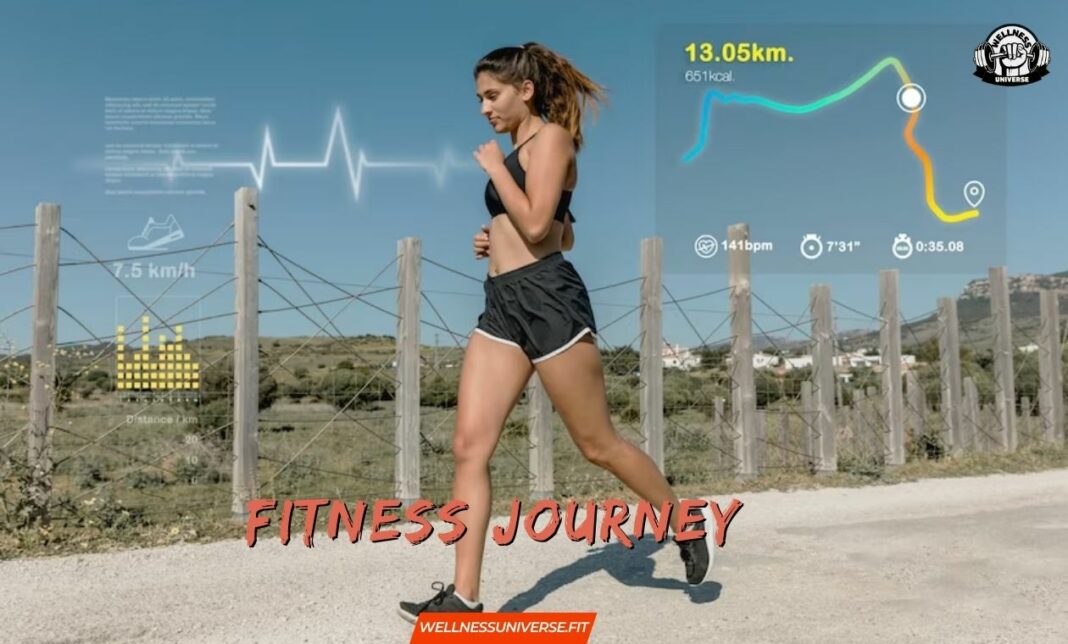
The Ultimate Roadmap to an Empowering Fitness Journey
Embarking on a fitness journey refers to the intentional and structured pursuit of improving one’s physical fitness, overall health, and well-being. It involves setting goals, adopting healthy lifestyle habits, and engaging in regular exercise and physical activity to achieve desired outcomes. A fitness journey is a personal and transformative experience that goes beyond short-term goals and focuses on long-term sustainable changes.
A fitness journey is unique to each individual, as it is tailored to their specific needs, preferences, and starting point. It can involve a wide range of activities such as cardio exercises, strength training, flexibility exercises, and mindful practices like yoga or meditation. The journey may also include modifications to one’s diet, sleep patterns, stress management techniques, and overall lifestyle choices.
Embarking on a fitness journey holds immense significance for individuals seeking to improve their health and overall quality of life. Here are some key reasons why a fitness journey is important:
- Physical health improvement: Engaging in regular exercise and physical activity has numerous benefits for physical health. It helps strengthen the cardiovascular system, improves muscle tone and strength, enhances flexibility, boosts metabolism, and promotes weight management. Regular physical activity also reduces the risk of chronic conditions such as heart disease, diabetes, and certain types of cancer.
- Mental and emotional well-being: Exercise has a profound impact on mental and emotional health. It releases endorphins, commonly known as “feel-good” hormones, which promote a positive mood, and reduce stress, anxiety, and symptoms of depression. Regular exercise also improves cognitive function, enhances focus, and increases self-confidence and self-esteem.
- Energy and vitality: A fitness journey can significantly increase energy levels and overall vitality. Regular physical activity improves circulation, delivering more oxygen and nutrients to the body’s tissues and organs. This leads to increased energy, improved alertness, and a greater sense of vitality throughout the day.
- Longevity and quality of life: Adopting a fitness journey can positively influence longevity and overall quality of life. Regular exercise has been shown to increase life expectancy and reduce the risk of premature death. It enhances functional abilities, promotes independence, and enables individuals to enjoy an active and fulfilling life well into older age.
- Personal growth and self-discovery: A fitness journey is not just about physical transformation but also about personal growth and self-discovery. It provides an opportunity to challenge oneself, push beyond comfort zones, and discover new strengths and capabilities. It cultivates discipline, perseverance, and resilience, fostering a sense of accomplishment and personal empowerment.
By embarking on a fitness journey, individuals can experience holistic improvements in their physical, mental, and emotional well-being. It offers an empowering path toward self-improvement, personal growth, and a healthier, more fulfilling life.
Starting Your Fitness Journey
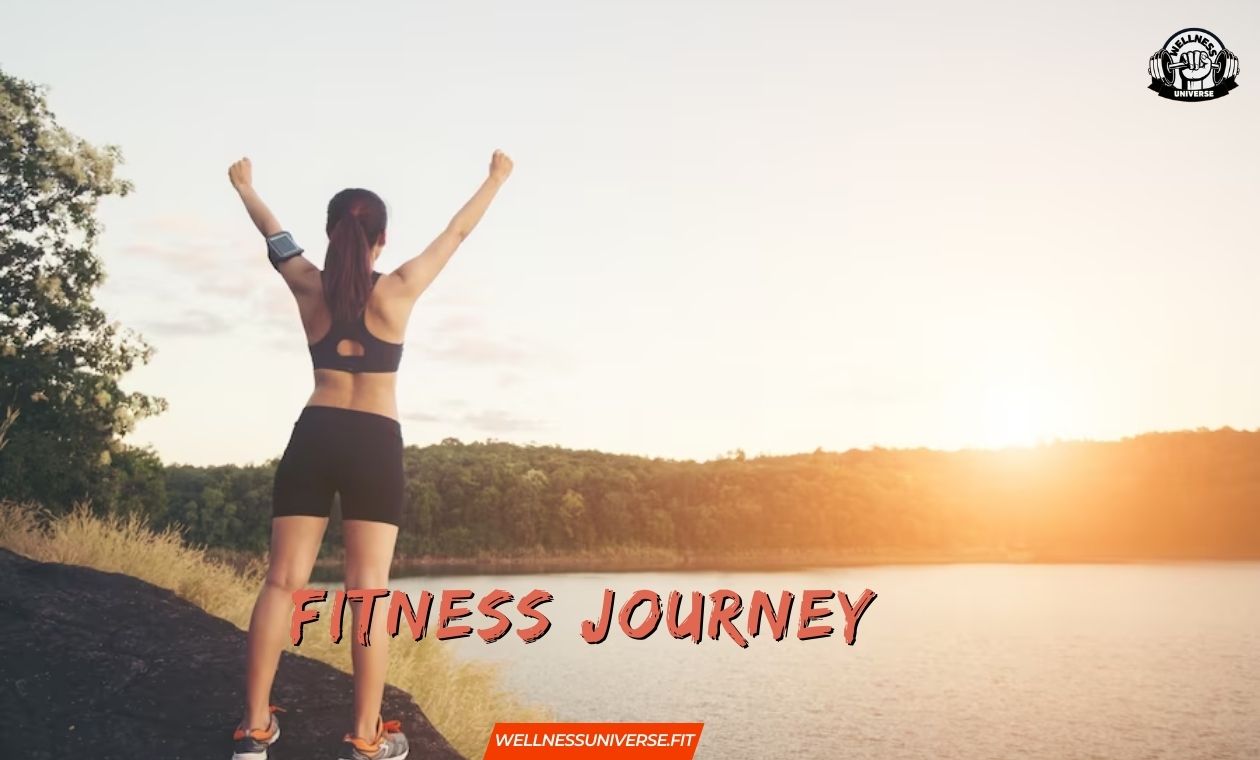
One of the first steps in starting a fitness journey is setting clear and realistic goals. Goals provide direction, motivation, and a sense of purpose throughout the journey. When setting fitness goals, it’s important to make them specific, measurable, attainable, relevant, and time-bound (SMART). This means defining the desired outcome, determining measurable indicators of progress, ensuring the goals are within reach, aligning them with personal values and aspirations, and setting a timeframe for achievement.
Examples of fitness goals could include losing a certain amount of weight, increasing strength and muscle tone, improving cardiovascular endurance, participating in a specific event or sport, or simply adopting a more active and healthy lifestyle. Setting goals that are meaningful to you will keep you focused and motivated along your fitness journey.
Before starting any fitness program, it’s essential to assess your current fitness level. This assessment helps you understand your strengths, weaknesses, and areas that need improvement. It also provides a baseline against which you can track your progress and measure the effectiveness of your fitness journey.
There are various ways to assess your fitness level. You can start by evaluating your cardiovascular fitness through exercises like walking, jogging, or cycling to determine your endurance and aerobic capacity. Strength tests, such as push-ups, squats, or lifting weights, can assess your muscular strength. Additionally, flexibility tests like reaching for your toes or performing stretches can evaluate your range of motion.
Alternatively, you may consider seeking professional help from a certified fitness trainer or healthcare professional who can conduct a comprehensive fitness assessment. They can provide a more accurate evaluation of your fitness level, identify any potential limitations or health concerns, and tailor a fitness plan that suits your specific needs and goals.
Before embarking on a fitness journey, it is advisable to consult with a healthcare professional, especially if you have any underlying health conditions or concerns. A healthcare professional, such as a doctor or a registered dietitian, can provide valuable guidance and support to ensure your fitness journey is safe and effective.
During the consultation, you can discuss your goals, medical history, and any concerns you may have. The healthcare professional can assess your overall health, provide recommendations on exercise intensity and duration, discuss dietary considerations, and offer insights into managing any health conditions or medications that may impact your fitness journey.
This consultation is particularly important if you have a history of chronic conditions, are pregnant or postpartum, are over the age of 40, or have been inactive for an extended period. The healthcare professional can help create a personalized fitness plan that takes into account your individual needs, abilities, and limitations, ensuring a safe and successful start to your fitness journey.
By setting clear goals, assessing your current fitness level, and consulting with a healthcare professional, you establish a solid foundation for your fitness journey. This proactive approach enables you to create a personalized plan that aligns with your aspirations, minimizes the risk of injury, and sets you up for long-term success.
Benefits of a Fitness Journey
Embarking on a fitness journey brings numerous benefits to your physical health. Regular exercise and physical activity have been shown to reduce the risk of chronic diseases and improve overall health. Here are some of the key physical health benefits of a fitness journey:
- Weight management: Engaging in regular physical activity helps in weight management by burning calories and building lean muscle mass. It can assist in achieving and maintaining healthy body weight, reducing the risk of obesity-related conditions such as heart disease, diabetes, and certain cancers.
- Cardiovascular health: Regular exercise strengthens the heart muscle, improves blood circulation, and lowers blood pressure. It reduces the risk of developing cardiovascular diseases, including heart attacks, strokes, and coronary artery disease.
- Stronger bones and muscles: Weight-bearing exercises, such as resistance training and weightlifting, stimulate bone growth and increase bone density, reducing the risk of osteoporosis. Additionally, strength training exercises help build and maintain muscle mass, improving overall strength and stability.
- Improved immune system: Regular physical activity has been shown to enhance the immune system’s function, reducing the risk of certain illnesses and infections.
- Better sleep: Engaging in physical activity can improve the quality of sleep, helping you fall asleep faster and enjoy deeper, more restorative sleep. It also helps regulate your sleep-wake cycle, promoting a consistent and refreshing sleep pattern.
In addition to the physical benefits, a fitness journey has a positive impact on mental and emotional well-being. Regular exercise has been linked to improved mood, reduced symptoms of anxiety and depression, and enhanced overall mental well-being. Here’s how a fitness journey can boost your mental health:
- Stress relief: Physical activity stimulates the release of endorphins, the body’s natural “feel-good” chemicals, which help reduce stress and improve mood. Exercise provides a healthy outlet for managing stress and promoting relaxation.
- Enhanced cognitive function: Regular exercise has been shown to improve cognitive function, including memory, attention, and problem-solving skills. It stimulates the growth of new brain cells and enhances the brain’s ability to form connections.
- Increased self-esteem: Achieving fitness goals, improving physical fitness, and taking care of your health can boost self-confidence and self-esteem. The sense of accomplishment from overcoming challenges and making progress in your fitness journey contributes to a positive self-image.
- Mood regulation: Exercise has a positive impact on mood regulation, helping to alleviate symptoms of anxiety and depression. It promotes the release of neurotransmitters like serotonin and dopamine, which are associated with improved mood and a sense of well-being.
Regular physical activity improves energy levels and enhances stamina. As you engage in a fitness journey, you’ll experience increased endurance, allowing you to perform daily activities with less fatigue. Regular exercise helps your cardiovascular system work more efficiently, delivering oxygen and nutrients to your muscles, which boosts overall energy levels.
A fitness journey can significantly improve self-confidence and body image. As you progress in your fitness goals, achieving milestones and overcoming obstacles, you’ll develop a sense of pride and self-assurance. Your physical transformations and increased fitness levels contribute to a positive self-perception and improved self-confidence in various areas of life.
In summary, a fitness journey offers a multitude of benefits for both physical and mental well-being. From weight management and cardiovascular health to improved mood and self-confidence, embracing a fitness journey positively impacts various aspects of your life. By committing to regular physical activity and making fitness a priority, you can reap the rewards of a healthier, happier, and more confident you.
Duration of a Fitness Journey
When embarking on a fitness journey, it’s essential to recognize that it is not a temporary endeavor but a lifelong commitment to your health and well-being. Fitness is a continuous journey that involves adopting healthy habits, maintaining consistency, and adapting to various stages of life. While specific goals may have time frames attached to them, the overall fitness journey extends beyond reaching those goals. It’s about cultivating a sustainable and healthy lifestyle that you can maintain in the long run.
The duration of a fitness journey varies for each individual and depends on several factors, including starting points, goals, commitment, and lifestyle. It’s crucial to set realistic expectations for progress and avoid comparing your journey to others. Progress is not always linear, and there may be periods of plateaus or setbacks along the way. It’s important to focus on gradual improvements and celebrate small victories, as they contribute to long-term success.
Instead of fixating on a specific timeline, shift your focus to building healthy habits and making consistent progress. Embrace the concept of sustainable change rather than seeking quick fixes or rapid transformations. Remember that the most significant transformations occur over time and require patience, dedication, and perseverance.
A fitness journey is not a destination but an ongoing process of continuous improvement. As you progress, your goals may evolve, and new challenges and opportunities may arise. Embrace the mindset of constantly striving to be better and finding new ways to challenge yourself physically and mentally.
Set new goals or milestones periodically to keep yourself motivated and engaged in your fitness journey. This could involve increasing the intensity or duration of your workouts, trying new forms of exercise, participating in fitness events or competitions, or exploring different fitness disciplines.
Furthermore, focus on holistic growth beyond physical fitness. Consider incorporating other elements into your fitness journey, such as improving flexibility, practicing mindfulness and stress management techniques, or enhancing your nutrition. The key is to maintain a growth mindset and embrace opportunities for self-improvement in all aspects of your well-being.
In summary, the duration of a fitness journey is not limited to a specific timeframe but is an ongoing commitment to a healthy and active lifestyle. Understand that progress may take time, and it’s important to set realistic expectations and avoid comparing yourself to others. Embrace the concept of continuous improvement, continually challenging yourself, and exploring new growth opportunities. Remember, a fitness journey is a personal and lifelong endeavor that extends far beyond reaching initial goals, and the key to success lies in maintaining consistency and a positive mindset throughout the journey.
Creating a Fitness Journey Plan
One of the keys to a successful fitness journey is finding activities and exercises that you genuinely enjoy. When you engage in activities you like, you’re more likely to stay motivated and committed to your fitness plan. Take some time to explore different types of physical activities, such as running, swimming, dancing, hiking, cycling, or playing a sport. Experiment with various exercises and discover what brings you joy and fulfillment.
Consider your preferences, interests, and lifestyle when choosing activities. If you enjoy being outdoors, you might opt for activities like hiking or cycling. If you prefer a social environment, group fitness classes or team sports could be a great fit. The goal is to find activities that keep you engaged, excited, and eager to participate.
A well-rounded fitness journey plan includes a combination of cardio, strength training, and flexibility exercises. Each component plays a vital role in improving overall fitness, health, and functional ability.
Cardiovascular exercises, such as jogging, swimming, or cycling, elevate your heart rate and help improve cardiovascular health, endurance, and calorie burn. Aim for at least 150 minutes of moderate-intensity aerobic activity or 75 minutes of vigorous-intensity aerobic activity each week.
Strength training exercises, such as weightlifting or bodyweight exercises, help build muscle strength, improve bone density, and enhance overall body composition. Include strength training exercises at least two days a week, targeting all major muscle groups.
Flexibility exercises, such as yoga or stretching routines, improve joint mobility, muscle flexibility, and posture. Incorporate stretching exercises into your fitness plan to enhance your range of motion and reduce the risk of injuries.
Remember to start gradually and progress gradually. If you’re new to exercise or returning after a break, begin with low-intensity activities and gradually increase the duration and intensity as your fitness level improves.
To stay organized and motivated, it’s essential to design a fitness journey plan that includes a schedule and milestones. Set aside specific days and times for your workouts, treating them as non-negotiable appointments with yourself. Consistency is key, so aim for regular exercise sessions throughout the week.
Consider your personal schedule and commitments when designing your fitness plan. Find a balance that works for you, whether it’s early morning workouts, lunchtime sessions, or evening exercises. Choose a time when you’re most likely to follow through with your fitness routine and when you feel energized and focused.
Setting milestones can provide a sense of direction and accomplishment throughout your fitness journey. Break down your goals into smaller, manageable milestones that you can work towards. These could include increasing the duration or intensity of your workouts, reaching a specific weight or body composition target, or achieving a certain fitness milestone, like running a 5K race.
Track your progress regularly, celebrating each milestone you achieve. This can help you stay motivated and provide tangible evidence of your growth and improvement. Consider using a fitness tracker or journal to record your workouts, measurements, and milestones.
In conclusion, creating a fitness journey plan involves identifying enjoyable activities, incorporating a variety of exercises, and designing a schedule with milestones. Choose activities that you genuinely enjoy and that align with your preferences and lifestyle. Incorporate cardio, strength training, and flexibility exercises to improve overall fitness and health. Design a schedule that suits your routine and set realistic milestones to work towards. Remember, the key is to find a balance that is sustainable and enjoyable, making your fitness journey a positive and fulfilling experience.
Staying Motivated During Your Fitness Journey
One of the most important factors in staying motivated during your fitness journey is finding your inner motivation and purpose. This involves identifying the reasons why you want to embark on this journey and understanding the personal benefits it will bring to your life. Ask yourself what drives you and what you hope to achieve through your fitness journey.
Some common motivations for embarking on a fitness journey include improving overall health, increasing energy levels, boosting self-confidence, managing stress, or achieving specific fitness goals. Reflect on your own aspirations and values to determine what truly inspires you. By connecting with your inner motivation and purpose, you’ll have a strong foundation to stay committed even when challenges arise.
Setting rewards and incentives along the way can provide an extra boost of motivation during your fitness journey. Rewards serve as positive reinforcement for your efforts and help you stay focused on your goals. Consider setting both short-term and long-term rewards to celebrate milestones and accomplishments.
Short-term rewards can be simple and immediate, such as treating yourself to a massage, buying new workout gear, or enjoying a favorite healthy meal. These rewards act as reminders of the progress you’ve made and encourage you to continue moving forward.
Long-term rewards can be more significant and aligned with your ultimate fitness goals. For example, if your goal is to run a marathon, treat yourself to a weekend getaway after completing the race. These rewards serve as a culmination of your hard work and dedication.
Remember that rewards don’t always have to be material. Consider rewarding yourself with non-food-related treats, like a day off to relax, a movie night with friends, or a spa day. The key is to choose rewards that are meaningful to you and that reinforce the positive behaviors you’re cultivating throughout your fitness journey.
Building a support system can greatly contribute to your motivation and accountability during your fitness journey. Surrounding yourself with positive and like-minded individuals who share similar goals can provide the encouragement and support you need to stay on track.
Reach out to friends, family members, or colleagues who have an interest in fitness or who are also on their own fitness journey. Share your goals with them and ask if they would like to join you or provide support along the way. Having a workout buddy or a group of people who understand and share your challenges and successes can be incredibly motivating.
Additionally, consider joining a fitness community or finding an online support group. These communities offer a sense of belonging and can provide valuable insights, tips, and encouragement. Engaging with others who are also striving for better health and fitness can create a sense of camaraderie and inspire you to keep pushing forward.
Don’t hesitate to lean on your support system when you face obstacles or moments of doubt. They can offer guidance, celebrate your victories, and remind you of your progress. Likewise, be a source of support for others, as helping others on their fitness journey can reinforce your own commitment and sense of purpose.
In conclusion, staying motivated during your fitness journey requires finding your inner motivation and purpose, setting rewards and incentives, and seeking support from friends, family, or a fitness community. Connect with the reasons why you want to embark on this journey and use them as a source of inspiration. Set rewards and incentives to celebrate your progress and keep you motivated along the way. Surround yourself with a supportive community that understands and shares your goals. By implementing these strategies, you’ll maintain the motivation needed to stay committed and achieve long-term success in your fitness journey.
Diet and Nutrition during Your Fitness Journey
When it comes to your fitness journey, diet and nutrition play a crucial role in supporting your overall health, optimizing your physical performance, and achieving your fitness goals. A balanced and nutritious diet provides the necessary fuel, nutrients, and building blocks for your body to function optimally.
A balanced diet consists of a variety of nutrient-dense foods from different food groups, including fruits, vegetables, whole grains, lean proteins, and healthy fats. These foods provide essential vitamins, minerals, antioxidants, and fiber that promote overall well-being and support your fitness endeavors.
To maintain a balanced diet, aim to include a wide range of colorful fruits and vegetables in your meals, as they offer an array of vitamins, minerals, and antioxidants. Incorporate whole grains like brown rice, quinoa, and whole wheat bread to provide sustained energy and fiber. Choose lean proteins such as chicken, fish, legumes, and tofu to support muscle repair and growth. Additionally, incorporate healthy fats from sources like avocados, nuts, seeds, and olive oil for their beneficial effects on heart health and nutrient absorption.
Different individuals may have different dietary preferences and requirements. It’s important to explore and find a dietary approach that aligns with your goals, preferences, and lifestyle. Some popular dietary approaches that people incorporate into their fitness journey include:
- Mediterranean Diet: This diet emphasizes whole foods, such as fruits, vegetables, whole grains, legumes, fish, and healthy fats like olive oil. It’s known for its heart-healthy benefits and is rich in antioxidants and anti-inflammatory compounds.
- Plant-Based or Vegan Diet: This diet focuses on consuming plant-based foods and excludes animal products. It emphasizes fruits, vegetables, whole grains, legumes, nuts, and seeds. It can be beneficial for those seeking a diet that is higher in fiber, lower in saturated fat, and environmentally sustainable.
- Low-Carb or Ketogenic Diet: These diets restrict carbohydrate intake and prioritize fats and proteins. They aim to shift the body into a state of ketosis, where it primarily burns fat for energy. These approaches may be suitable for some individuals, but it’s important to consult with a healthcare professional before adopting such a diet, especially if you have any underlying health conditions.
- Intuitive Eating: This approach focuses on listening to your body’s hunger and fullness cues, eating mindfully, and cultivating a positive relationship with food. It encourages honoring your cravings while also prioritizing nutrient-dense foods.
Remember, there is no one-size-fits-all approach to nutrition. What works for one person may not work for another. It’s essential to experiment, listen to your body, and find a dietary approach that supports your fitness goals while nourishing your body and promoting overall well-being.
If you find yourself unsure about the dietary aspects of your fitness journey, it can be helpful to seek guidance from a registered dietitian (RD) or a nutritionist. These professionals are trained in nutrition science and can provide personalized advice based on your specific needs, goals, and health conditions.
An RD can assess your current dietary habits, help you identify areas for improvement, and provide practical strategies for incorporating nutritious foods into your daily routine. They can also address any concerns or questions you may have regarding supplements, portion sizes, meal timing, and navigating social situations that involve food.
Working with an RD can provide you with the knowledge, support, and accountability necessary to optimize your nutrition and achieve your fitness goals in a safe and sustainable manner. They can tailor their recommendations to your unique circumstances, ensuring that your dietary choices align with your fitness journey.
In conclusion, during your fitness journey, it’s important to prioritize a balanced and nutritious diet to support your overall health and fitness goals. Aim for a variety of nutrient-dense foods from different food groups and explore different dietary approaches to find what works best for you. If you need further guidance, consider consulting with a registered dietitian or nutritionist who can provide personalized advice and support. By nourishing your body with the right foods and seeking professional guidance when needed, you’ll optimize your nutrition and enhance the benefits of your fitness journey.
Embarking on a fitness journey is a transformative and empowering experience that can positively impact your life in numerous ways. Whether you’re just beginning your journey or have been on it for a while, remember that every step you take toward a healthier lifestyle matters. Take pride in the progress you make, no matter how small, and celebrate your achievements along the way.
If you haven’t started your fitness journey yet, now is the perfect time to take that first step. Embrace the opportunity to prioritize your health, well-being, and happiness. Remember, every fitness journey is unique, and there is no right or wrong path to follow. It’s about finding what works for you and creating sustainable habits that align with your goals and values.
Your fitness journey is not just about physical transformation; it’s also about improving your mental and emotional well-being. It’s an opportunity to discover your inner strength, challenge your limits, and unlock your full potential. Embrace the journey as an opportunity for self-discovery and growth.
Throughout your fitness journey, it’s essential to practice self-compassion and kindness. Be patient with yourself and recognize that progress takes time. There will be ups and downs, setbacks and obstacles, but remember that each setback is a chance to learn, grow, and come back even stronger.
Surround yourself with a supportive network of friends, family, or like-minded individuals who share your passion for a healthier lifestyle. Seek inspiration from success stories and individuals who have overcome challenges similar to yours. Their stories can serve as a reminder that you’re not alone and that your goals are achievable with dedication and perseverance.
Lastly, remember that a fitness journey is not just a temporary phase but a lifelong commitment to your well-being. Embrace the changes you make as lasting lifestyle choices rather than quick fixes. Continually reassess your goals, set new challenges, and adapt your routines as you progress. Embrace the joy of movement, nourish your body with wholesome foods, and prioritize self-care in all aspects of your life.
Your fitness journey is an ongoing adventure, full of growth , self-discovery, and opportunities for a healthier and happier life. Embrace it with enthusiasm, dedication, and an open mind. Believe in yourself, stay committed to your goals, and never forget the incredible potential that lies within you.
As you embark on or continue your fitness journey, remember that the power to transform your life is in your hands. You have the ability to create a healthier, stronger, and more vibrant version of yourself. Embrace the journey, enjoy the process, and savor the rewards of a fitter, happier, and more fulfilling life.
Thank you for joining us on this fitness journey! We hope you found our The Ultimate Roadmap to an Empowering Fitness Journey blog insightful and inspiring. Our aim is to provide you with valuable information, expert advice, and motivational content to support you in your wellness endeavors.
Related Post :-
- How To Do Wall Pushups
- Hand Size Demystified
- CrossFit Unleashed
- Barbell Lunges
- Forearm Fortitude
- Kettlebell Circuit
- Squat Mastery
Shoulder Exercises
FAQs about Fitness Journey
What is a fitness journey.
A fitness journey refers to the process of adopting a healthier and more active lifestyle with the goal of improving physical fitness, overall well-being, and achieving personal fitness goals.
How do I start my fitness journey?
To start your fitness journey, begin by setting clear and realistic goals, assessing your current fitness level, and designing a fitness plan that includes a variety of exercises and activities. Start with small steps and gradually increase intensity and duration as you progress.
What are the benefits of embarking on a fitness journey?
Embarking on a fitness journey offers numerous benefits, including improved cardiovascular health, increased strength and endurance, weight management, stress reduction, enhanced mood, and mental well-being, increased energy levels, and reduced risk of chronic diseases.
How long does a fitness journey usually take?
The duration of a fitness journey varies for each individual and depends on factors such as starting fitness level, goals, consistency, and dedication. It is important to view fitness as a lifelong journey rather than a short-term endeavor, as maintaining a healthy lifestyle is a continuous process.
What should I include in my fitness journey plan?
Your fitness journey plan should include a combination of cardiovascular exercises, strength training, flexibility exercises, and adequate rest and recovery. It should be tailored to your goals, preferences, and fitness level. It is also important to incorporate proper nutrition and hydration into your plan.
How do I stay motivated during my fitness journey?
To stay motivated, set specific and realistic goals, track your progress, celebrate achievements, find activities you enjoy, vary your workouts, seek support from friends or a fitness community, reward yourself for milestones, and remind yourself of the benefits and positive changes that come with a consistent fitness routine.
What are some common challenges people face during their fitness journey?
Some common challenges during a fitness journey include lack of motivation, time constraints, plateaus in progress, dealing with injuries or setbacks, balancing fitness with other responsibilities, and overcoming self-doubt or negative thoughts. It is important to stay resilient, adapt to challenges, and seek support when needed.
Can I embark on a fitness journey without a gym membership?
Absolutely! A fitness journey can be pursued without a gym membership. There are numerous options for home workouts, outdoor activities, bodyweight exercises, and fitness classes or programs available online. It's important to find activities that suit your preferences and fit your lifestyle.
What are some effective exercises for a fitness journey?
Effective exercises for a fitness journey include activities such as running, walking, cycling, swimming, strength training with weights or resistance bands, yoga, Pilates, HIIT (High-Intensity Interval Training), and functional training exercises that engage multiple muscle groups. Choose exercises that align with your goals and preferences.
How can I track my progress during my fitness journey?
You can track your progress by keeping a fitness journal, recording workout sessions, tracking measurements, monitoring changes in weight or body composition, using fitness apps or wearable devices, and assessing improvements in endurance, strength, flexibility, or performance. Regularly review your progress to stay motivated and make necessary adjustments to your fitness plan.

Meet Pradeep Singh, your go-to guide for all things fitness, health, and motivation. With over 7 years in the field, Pradeep brings a blend of expertise and real-world experience to his writing. From workout tips to healthy living insights, he simplifies complex topics, making fitness accessible for everyone. His authentic approach and genuine passion aim to inspire and support your wellness journey. Get ready to embark on a path to a healthier lifestyle with Pradeep as your trusted companion and motivator.
RELATED ARTICLES MORE FROM AUTHOR
Leave a reply cancel reply.
Save my name, email, and website in this browser for the next time I comment.

10 Proven Ways to Weight Loss Without Breaking a Sweat in 2024
The Pros and Cons of Metabolic Confusion: Fad Diet or Fat-Burning Genius?
12 Weeks Pregnant: Symptoms and Baby Development Guide
Popular posts, becoming the dark knight: the epic batman workout revealed, fierce and fit: empowering female through muscle growth, bmi breakthrough: transform your body, popular category.
- Workout 143
- Lifestyle 20
- Nutrition 8
- Spiritual Health 5
- Motivation 3
- Healthy Cooking 3
It’s time for your 2023 fitness journey—here’s how to get started
Here's how to help the new you achieve those fitness goals.
By Sandra Gutierrez G. | Published Jan 15, 2023 9:00 AM EST
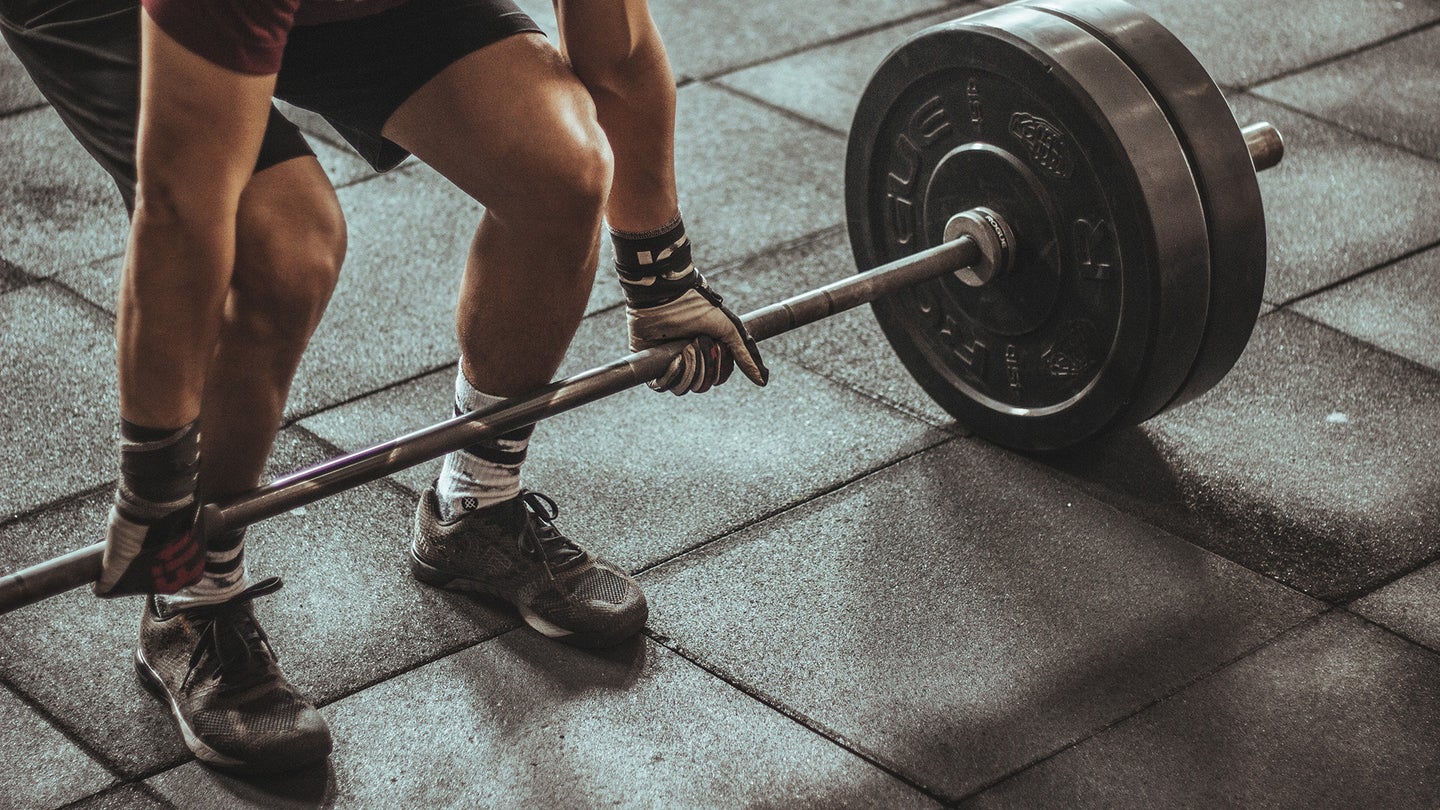
A new year is always a fresh opportunity to start your fitness journey. This can mean anything, whether you’d just like to get off the couch more often, want to run a 5K, or are hoping to win a bodybuilding competition by 2024.
You may not be sure about how to achieve your goals, but that’s ok. Having the motivation to get out there is half the battle, and we want to help you along your way.
PopSci has a number of science-backed fitness stories to guide you in this new era. You’ll learn how to make the best of your workouts, how to get gains safely and consistently, and how to keep your body healthy along the way.
Understand how to build muscle
Fitness novices might think getting buff is just about lifting heavy objects over and over again. In a nutshell, it sort of is, but there’s a lot more to it. Learning about muscles and how your body builds them will help you understand concepts like hypertrophy and failure, and allow you to get the most out of each workout.
Our guide on how to get muscle gains will walk you through that process and explain how resting is as important as going to the gym, and how protein is a crucial element your body needs to build more mass.
[Related: You should definitely rotate your workouts ]
Food restrictions like veganism can seem like an added layer of difficulty when it comes to including enough protein in your diet, but getting those gains doesn’t require you to become a carnivore. If you need guidance, head on over to our vegan guide on how to get muscle gains and learn about the foods that will give you the nutrients you need to achieve your fitness goals.
Don’t forget to warm up
Whatever sport or discipline you choose, one of the most common mistakes fitness noobs make when they start working out is to skip warmups. They can seem boring and pointless because you may feel like you don’t actually need them, but trust us: your body does. Warming up properly before you go for a jog or start lifting will help you perform better and prevent injuries in the long run, which will allow you to take your fitness journey even further.
But before you repeat the same stationary stretches you might remember from PE class, give dynamic warmups a try . These exercises will not only tell your brain it’s time to move—which is especially important after sitting at a desk for a while—but will also prepare your body for physical activity by getting your blood flowing and your heart rate up.
Help your body recover
You may think that when it comes to exercise, more is better. And since you’re already motivated and proud of your effort, why not keep going? Well, giving your body time to recover is also essential to your fitness journey.
But other than resting, there are other techniques you can use to help your muscles feel better after a heavy workout . That annoying and painful soreness you feel around 24 hours after your last gym session is a result of muscle damage, and recovery techniques can help you handle the pain and help tissue heal faster.
From classic stretching to foam rollers, ice baths, and massages, our guide on what works when it comes to recovery can be exactly what you need when your muscles are so sore that getting off your chair comes with excruciating pain.
Once you’re at least a couple of months into your journey and have made a little progress, you might find yourself hitting a wall that makes results harder to come by. This is normal and happens to a lot of people as their bodies change. To get back on that progress train, you might need more data about what you’re putting into your body, and tracking your nutrition can be incredibly useful for that.
Knowing your maintenance rate—the number of calories you burn simply by existing—can give you a baseline to adjust the number of calories you eat every day to keep the muscles growing and fat-burning going.
It’s important to know that monitoring your food can be a slippery slope to unhealthy habits, so make sure to do it only for short periods of time, and to follow experts’ recommendations regarding calorie surplus and deficit. And if you don’t know what those are, don’t worry—it’s all in our guide.
Measure progress
Data not only shows you how much to eat but also how far you’ve come. Gathering information about your workouts will make it easier to measure your progress, and you’ll be able to celebrate even the smallest victories so you can push yourself a bit further.
Getting a fitness tracker can help compile all the statistics you need to keep going and improving—all you need is to put it on and go do your best. And if you don’t know which wearable to get, we have some recommendations that might lead you in the right direction.
The type of device you get will highly depend on your budget and your preferred activity, but there are a lot of options to choose from, and they can all give you that extra motivation you need to face another day of your fitness journey.
Try getting a little help from supplements
Nutritional supplements can help get your body what it needs to perform better, stay healthy, and build muscle. But a quick trip to your local drugstore is enough to get anyone incredibly confused. The market is saturated with options, so which supplements actually work?
[Related: The three strength exercises everyone should do ]
When it comes to building muscle and improving performance, science has only found two supplements that will help . Learning how to take them and how they work for your body will help you have a better understanding of your process. Keep in mind that you may need to consult a doctor before you start supplementing your nutrition, and also remember supplements don’t do miracles. Moving, resting, and, above all, patience, will keep you on a good path to your fitness goals.

Sandra Gutierrez is the former Associate DIY editor at Popular Science. She makes a living by turning those “Wait, I can make that!” moments she has while browsing the internet into fully-fledged stories—and she loves that. Contact the author here.
Like science, tech, and DIY projects?
Sign up to receive Popular Science's emails and get the highlights.
- Skip to primary navigation
- Skip to main content
- Skip to primary sidebar
The Online Home for Strength Sports
The Best Beginner Workout Plan To Start Your Fitness Journey
This is your first step into a larger, fitter world..
Best Beginner Workout Plan
- How To Progress
- Sets and Reps
- Workout Splits
Nothing worth having comes easy. This is as true in your career as it is in the gym — the latter of which can be extremely daunting if you’ve never been before.
If you’re new to exercise, hitting the gym can easily become overwhelming. After all, there are dozens if not hundreds of machines, free weights , cardio equipment , stretching tools, and more scattered around. Where do you even start?

A bit of planning and structure can make fitness less frightening and more fun. Instead of worrying over what you should be doing, how much of it, or for how long, a good beginner workout plan removes the guesswork and lets you focus on what matters; putting in the actual work. This guide has everything you need to get started, no matter your goal.
Editor’s Note: The content on BarBend is meant to be informative in nature, but it should not be taken as medical advice . When starting a new training regimen and/or diet, it is always a good idea to consult with a trusted medical professional. We are not a medical resource. The opinions and articles on this site are not intended for use as diagnosis, prevention, and/or treatment of health problems. They are not substitutes for consulting a qualified medical professional.
All fitness enthusiasts, from recreational gym rats to full-time athletes, follow some sort of pre-programmed structure. Periodization , as it’s known, refers to the organizational design of a workout plan that ensures you’re moving toward your goals, not away from them.
You don’t need to commit to exercise every day to see results, especially as a beginner. In fact, a good three-day plan is more than enough.
You can perform these three workouts however you like over the course of a week, but remember to include at least one day of rest between workouts . For example, a common schedule is to exercise on Monday, Wednesday, and Friday.
The Workout
You may have very specific goals in mind when deciding to get active, ranging from losing weight to regaining some day-to-day mobility or building muscle .
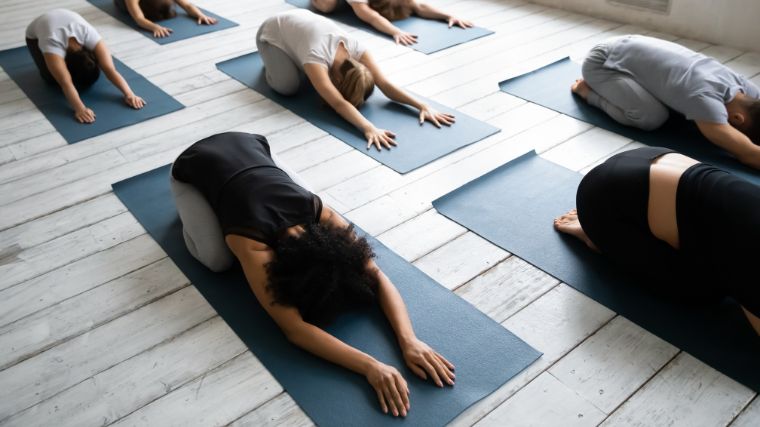
[Read More: The Best Full-Body Bodybuilding Workout for Beginner to Advanced Lifters ]
Regardless, your best bet as a beginner is to start general, developing several athletic qualities like flexibility and strength, and then get specific later on. As such, this plan is designed to improve multiple dimensions of fitness at once.
Day 1
- 5 minute cardio warm-up
- Goblet Box Squat : 3 x 8
- Assisted Pull-Up : 2 x 10
- Incline Push-Up : 2 x 10
- Plank : 3 x 15 seconds
- 15-20 minutes of low-intensity cardio
- Kettlebell Swing : 3 x 15
- Stretching (3 rounds, 30 seconds each)
- Cat-camel stretch
- Pigeon pose
- Child’s pose
- Kneeling hip flexor stretch
- Butterfly stretch
- 5-minute cardio warm-up
- Dumbbell Row : 3 x 8
- Barbell Bench Press : 3 x 8
- Romanian Deadlift : 2 x 12
- Box Jump : 3 x 5
How To Progress Your Workout
Here’s the deal: As a beginner, you’re going to make progress faster than you might expect (as long as you’re putting in real effort). However, that doesn’t mean that gains flow freely to ever. As you become more acclimated to the demands of exercise, you’ll need to get crafty about your workouts and incrementally increase the difficulty over time. ( 1 )
This is known as progressive overload , and it needs to be the backbone of your workout plan long-term. Here are three simple ways to progress your workouts, organized by general priority:
This one applies solely to resistance training, but is the most straightforward method of employing progressive overload. If you’re performing an exercise that you can load with additional weight, such as a barbell exercise , you should strive to work with slightly heavier weights over time.
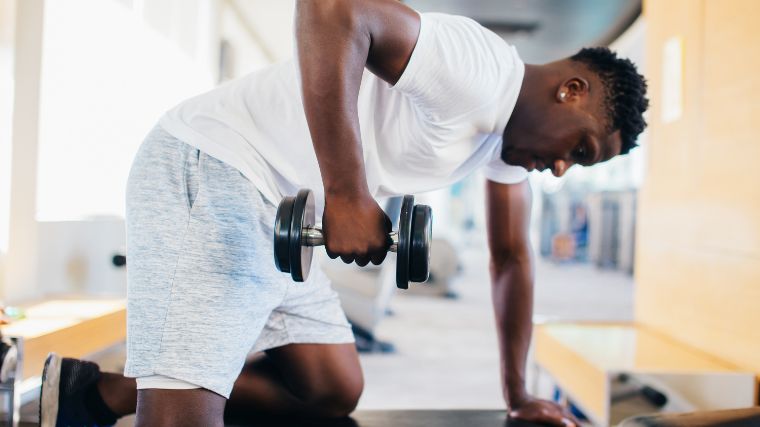
[Read More: The 15 Best Shoulder Exercises For Building Muscle ]
This doesn’t mean you need to slap on 20 extra pounds every week, but you should aim to make small jumps in resistance over time.
Add Sets or Reps
If you can’t increase the amount of weight you’re lifting, your next best option is to beef up the amount of work you perform. That is, your “ training volume .” The most practical way to do this is to increase the number of repetitions you perform during a set of a given exercise, or add another set altogether.
Reduce Your Rest Times
Another way to amp up the difficulty of your workouts and drive progress is to increase the density of your sessions. Which is to say adjusting the ratio of work to rest you perform.
[Read More: 5 At-Home Workouts for Strength, Muscle Growth, Power, and More ]
Almost all physical activity requires brief rest intervals so you can recover for another bout of effort. Over time and as your fitness improves, you should be able to slowly chip away at these “down” periods. Resting for one and a half minutes instead of two minutes shortens your session without removing any of the actual work.
Change Exercises
Generally speaking, being a chronic “exercise hopper” is a bad thing. Adapting to any physical stressor takes time, and if you don’t give an exercise in your workout plan a fair shot, you might never find out if it’s productive for you.
That said, some scientific research has demonstrated the power of novelty when it comes to exercise. Put simply, rotating through a series of similar movements that work the same muscles may be more effective at creating progress than sticking with the same exercises for months on end. ( 2 )

[Read More: The Best Online Workout Programs For Coaching, Cardio, Value, And More ]
This doesn’t mean that you should change your workout plan on a weekly (or even monthly, necessarily) basis. However, if you’re a few months into your current routine and feel like progress is slowing down, it may be time to change up what you’re doing.
Sets and Reps Explained
Almost all physical exercise that isn’t cardiovascular endurance training is organized by sets and reps . A “rep” is a single repetition of a given exercise; think curling a dumbbell up and lowering it back down again. A “set” is a cluster of repetitions performed back-to-back with no rest in-between.
The set-rep notation you’ll see most commonly is “[sets] x [reps]”. For example:
- Biceps Curl : 3 x 8
This prescription would instruct you to perform eight biceps curls back-to-back, rest for a minute or two, and then repeat it twice more.
Workout Splits Explained
Workout splits have nothing to do with ballet, yoga, or gymnastics — unless you’re training for flexibility, of course! A “split” is a colloquial term for the general organization behind a workout program .
In real-world terms, splits define the number of days you hit the gym and what you do on those days . For example, a three-day workout split involves exercising thrice per week. People will also commonly design splits around training specific muscle groups (prevalent in bodybuilding) or anatomical functions (think pushing and pulling).

[Read More: Best Treadmills For Streaming, Folding, Running, And More ]
There are also full-body splits, which entail performing a variety of exercises for your entire body multiple times throughout the week. These principles apply to all forms of physical activity: You can have a workout split that contains cardio, stretching, sport-specific practices, and so on. Splits are simply your schedule.
Beginner Workout Tips
When it comes to separating an average workout from an exceptional one, the devil’s in the details. Getting yourself into the gym or off the couch is half the battle, though. Once you’ve committed to taking the plunge, put these simple tips into practice to enhance your results:
Start Slowly
The fastest runners in the world didn’t start their training with sprints; they started with jogs. To be successful in any athletic endeavor, especially if you’re new to physical activity, you’ll need to pace yourself. After all, you have to crawl before you can walk.
[Read More: The 15 Best Home Gym Machines ]
In real-world terms, this looks like selecting very easy weights during your first few sessions. Don’t be afraid to take ample rest time between sets, or ask a staff member at the gym to advise you on proper technique rather than trying to wing it on a complicated exercise.
Dress Appropriately
The saying “look good, feel good” absolutely applies to the gym. Not only will appropriate gymwear help wick sweat and cool your body, you’re more likely to put in a higher amount of effort during your workouts if you’re rocking a killer outfit.
Bring Music (Or a Friend)
As it turns out, your favorite tunes are good for more than jamming out on the drive to the gym. There’s some interesting science behind auditory stimulation and exercise performance.
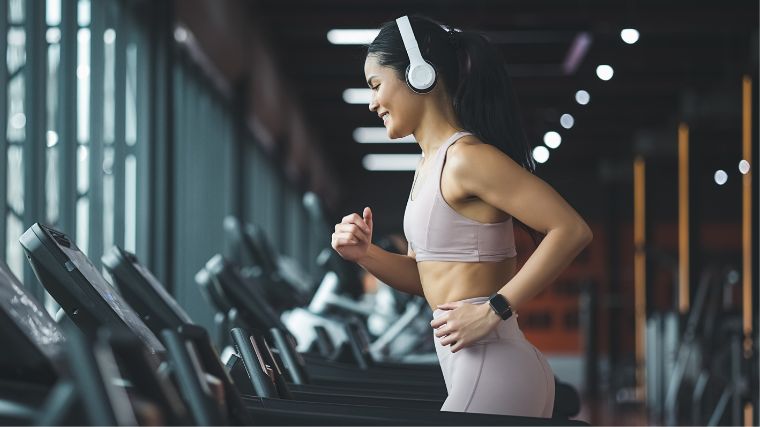
[Read More: The Gymgoer’s Guide to Whey Protein ]
Namely, some data has shown that listening to music during exercise can improve pain tolerance, increase motivation , and even boost your strength in some cases. ( 3 )( 4 ) A similar idea applies to working out with a partner. You’ll have a reliable and trusted spotter to help you stay safe while you train, and you’ll also have someone to trade motivation with on your journey.
Don’t Aim for Perfect
One of the worst things you can do as a beginner on their fitness journey is to obsess over “optimal.” In almost all cases, simply making it into the gym at all is a victory, and will get you closer to your goals than not going at all out of fear of not doing things properly.
When you’re starting out, don’t be afraid to head into the gym and do things wrong . You won’t master a new exercise during your first session, and that’s okay. Over time, many slightly-less-than-perfect sessions will get you much further than a few “perfect” workouts.
If you’re still wondering about working out, we’ve got you covered. Check out these common questions, answered for your convenience:
What is a good beginner workout routine?
Realistically speaking, a good beginner workout routine is one that you find enjoyable and can stick to. The perfect workout plan doesn’t exist, and forcing yourself to partake in a type of activity you detest isn’t sustainable.
That said, most beginners should focus on exercising between two and four days per week, performing a combination of different activities including strength training , cardiovascular exercise, and stretching or balance-focused drills.
How many days should a beginner workout be?
One of the best parts of being a beginner on your fitness journey is that you can get a lot out of a little. As in, you need very little physical training to make substantial progress as long as you put in real effort.
Most beginner workout routines consist of two to four days of planned activity. That three-day sweet spot ensures that you’re moving regularly, but also have ample time to rest and recover as you adjust to the demands of exercise.
What are the benefits of working out?
The list of benefits of working out is almost endless. Physical activity is demonstrably and consistently associated with improved health markers like mood, blood pressure, heart rate, body composition , joint stability, and much, much more. ( 5 ) Exercise is, indisputably, the most effective non-medical care you can provide to your body throughout life.
More Training Content
- The Ultimate Guide to Building Your Own Bodybuilding Workout Plan
- How to Balance Running and Strength Training, No Matter Your Goals
- Build Muscle Anywhere With These At-Home Workouts
- Williams, T. D., Tolusso, D. V., Fedewa, M. V., & Esco, M. R. (2017). Comparison of Periodized and Non-Periodized Resistance Training on Maximal Strength: A Meta-Analysis. Sports medicine (Auckland, N.Z.), 47(10), 2083–2100.
- Fonseca, R. M., Roschel, H., Tricoli, V., de Souza, E. O., Wilson, J. M., Laurentino, G. C., Aihara, A. Y., de Souza Leão, A. R., & Ugrinowitsch, C. (2014). Changes in exercises are more effective than in loading schemes to improve muscle strength. Journal of strength and conditioning research, 28(11), 3085–3092.
- Silva, N. R. D. S., Rizardi, F. G., Fujita, R. A., Villalba, M. M., & Gomes, M. M. (2021). Preferred Music Genre Benefits During Strength Tests: Increased Maximal Strength and Strength-Endurance and Reduced Perceived Exertion. Perceptual and motor skills, 128(1), 324–337.
- Thakare, A. E., Mehrotra, R., & Singh, A. (2017). Effect of music tempo on exercise performance and heart rate among young adults. International journal of physiology, pathophysiology and pharmacology, 9(2), 35–39.
- Ruegsegger, G. N., & Booth, F. W. (2018). Health Benefits of Exercise. Cold Spring Harbor perspectives in medicine, 8(7), a029694.
Featured Image: Jono Erasmus / Shutterstock
About Jake Dickson, NASM-CPT, USAW-L2
Jake is a graduate of the University of North Carolina at Wilmington with a B.S. in Exercise Science. He began his career as a weightlifting coach before transitioning into sports media to pursue his interest in journalism.
View All Articles
BarBend is an independent website. The views expressed on this site may come from individual contributors and do not necessarily reflect the view of BarBend or any other organization. BarBend is the Official Media Partner of USA Weightlifting.
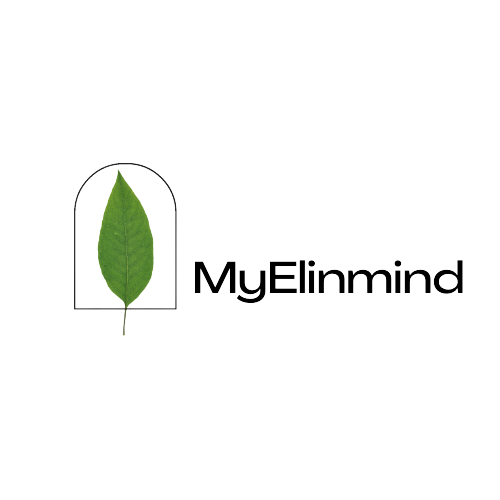
How to start a fitness journey
There is no end to a fitness journey. While you find the result from that journey you cannot stop there, because you need to keep pushing yourself to maintain it. Most people anticipate immediate results. Remember that you are committing to a longer journey and it will be difficult. Trusting the process and working for that will reward healthy life. “Once you started a fitness journey, there is no going back” – Unknown
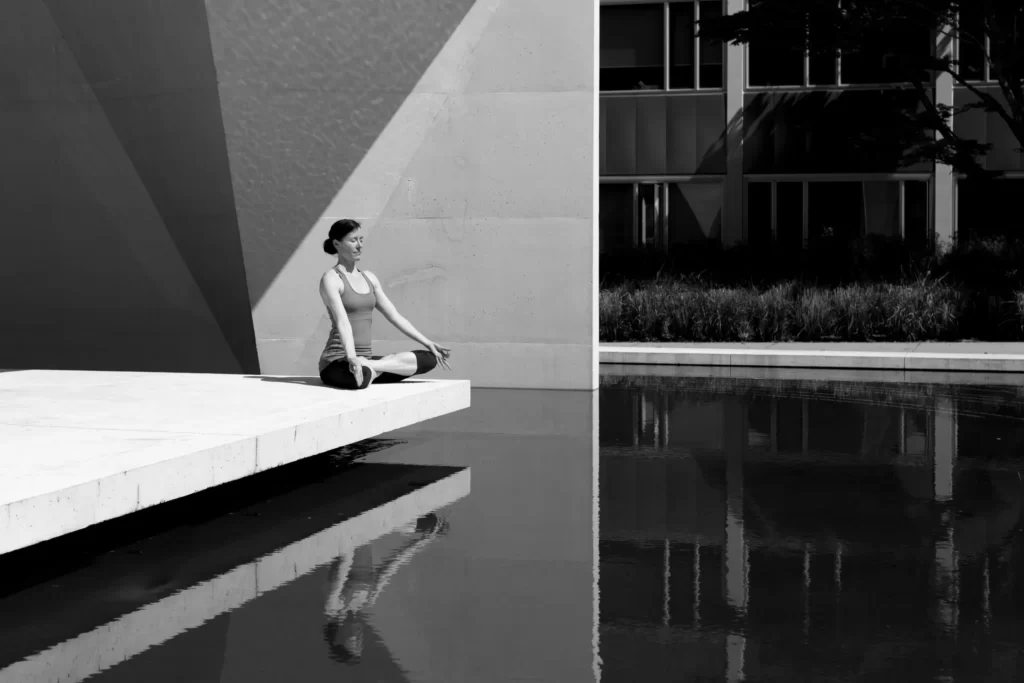
Get started on the journey
We made a question-answer survey on our Instagram page on the topic of “What holds them back from starting their fitness journey?”. And we found that most people don’t know where to start and how to set a fitness journey. In this blog, we help them by giving a step-by-step process to get started and maintain their fitness journey.
Defining why:
Before starting your fitness journey, you should ask yourself why you want to improve your health and fitness. Whether it’s to increase energy levels, enhance self-confidence, manage weight, or improve overall well-being, clarifying your “why” will serve as a powerful driving force throughout your journey.
It allows you to build a strong foundation that can sustain your dedication and perseverance, even when faced with challenges or setbacks along the way
Identifying your current fitness level:
Evaluating and identifying your current fitness level makes determine your starting point. You can assess your fitness level by checking cardiovascular endurance, strength, flexibility, and body composition. It can be identified by checking yourself or by approaching a fitness professional.
Ways to check your current fitness level
Cardiovascular Endurance : Test your cardiovascular fitness by performing activities that raise your heart rate, such as running, cycling, or brisk walking. Note how long you can sustain the activity and how quickly your heart rate recovers afterward.
Strength and Muscular Endurance : strength by performing exercises like push-ups, squats, or planks. Take note of how many repetitions you can perform with proper form.
Flexibility : Test your flexibility by performing stretches for different muscle groups, such as touching your toes or performing a seated hamstring stretch.
Body Composition : Assess your body composition by measuring your weight, body mass index (BMI), or body fat percentage.
Functional Movements : Observe how well you can perform functional movements like squatting, bending, or lifting. Note any limitations or difficulties you experience during these movements.
Daily Activities : Pay attention to your performance during everyday activities like walking up stairs, carrying groceries, or participating in recreational activities.
Subjective Assessment : Reflect on your perceived level of fitness and overall energy levels throughout the day. Consider how you feel during physical activities and if you feel generally fit and healthy.
It allows you to identify your strengths and weakness and areas to need improvement. However, you can also make informed decisions regarding exercise selection, intensity, and progression, ensuring that your fitness journey is safe, effective, and tailored to your individual needs
Set SMART goals
Establish Specific, Measurable, Achievable, Relevant, and Time-bound ( SMART ) goals to provide clarity and direction. For example, instead of a vague goal like “get fit,” set specific goals like “run a 5K in three months” or “lose 10 pounds in three months.” SMART goals will help you track progress and stay motivated.
Specific – This means setting a goal rather than setting a general goal like “get fit” to “increase muscle strength and tone” or “improve flexibility.
Measurable – It means setting goals that can be measured and tracking your progress. For example, “complete 30 minutes of cardio exercise four times a week” or “perform 10 push-ups without rest”.
Achievable – rather than investing your time and effort in unrealistic goals, you should focus on realistic and actionable goals. For example, if you are a beginner, you may not be able to achieve your goal of running a marathon in a month. Instead, set a goal to run a 5K race within a certain time frame.
Relevant – Prioritize your goals based on what you want to achieve.
Time-bound – By setting a time frame to achieve your goal you can be motivated and focused on your goals. Take it as a challenge to like you will lose 3kg within a month. By achieving that goal you will be highly confident and inspirational yourself and work for better output.
Choose suitable activities
There will be multiple ways to achieve your goal. You can lose weight through different types of training like cardio, and running and by connecting it with your personal interests you will enjoy what you are doing. It will help you to stay focused on your goal.
Create a structured workout plan
Before starting a fitness journey you need a well-structured workout plan. Remember that for overall fitness you need a clear balance and incorporate cardiovascular exercise, strength training, and flexibility exercises. Start with a low-intensity workout and gradually increase intensity and duration over time.
Seek professional guidance
As a beginner, you don’t know how to protect your body from injury and keep proper form while workout. It is better to consider consulting with a certified fitness professional. They can help you to design a Personalized workout plan and ensure proper form and technique.
Nutrition is the key
By identifying your goal that what you want to achieve you need to take enough nutrition to fuel Your body with a well-balanced diet that includes lean proteins, whole grains, fruits and vegetables, and healthy fats. If you are looking to gain weight then you will need to consume healthy fats and protein. Examples include whole grains, dried fruit, potatoes, avocados, oily fish, eggs, and dairy products.
Create a support system
Fitness is a long journey and consistency is one of the keys to success. To keep consistency and working toward goals we need motivation. you may be exhausted and unmotivated sometimes. Staying with a supportive community or surroundings will help you to encourage and get support from them. You can share your fitness goals with friends, and family, or join fitness groups, online communities, and workout classes.
Track progress and audit
Monitoring your progress regularly or during specific time periods will be motivational and boost your confidence. You can take images of each month and see how you are becoming changing. By tracking your progress you can make necessary changes to your workout plan or nutrition to continue hard work towards your goal.
Embrace a growth mindset
It is a long journey and you need to develop a growth mindset to approach that. Remember that progress takes time and you need to be patient with yourself. Each small step you make contributes to your overall success.
As I said earlier there is no end to the journey. after you achieve your goal, you have to continue the process to maintain your fitness level. Otherwise, you will lose your strength, form, and confidence as well. However, by following the above steps you can start your fitness journey and improved your health, and increased your strength. Remember, the journey is unique to you, so enjoy the process and celebrate every milestone along the way

The Beginner’s Guide To Starting A Fitness Journey
- July 25, 2017

- Getting rid of medications that are unnecessary with lifestyle changes.
- Being able to keep up with your kids/grandkids and enjoy life with them instead of watching from the sidelines.
- Being a good role model for those in your life who are looking to you for guidance.
- Managing or even better, eliminating chronic disease and illness born from poor lifestyle.
- Clothes fitting looser. Okay, so the scale hasn’t moved yet. But you’re clearly getting smaller which was the goal, right? So stop obsessing over an arbitrary numbers machine and actually pay attention to the changes in your body.
- Getting better sleep and feeling vibrant. It’s a by-product of regular exercise, so when this lovely side effect hits you, embrace it with wide open arms.
- Feeling HAPPIER from that endorphin glow each day. Starting or ending your day with an amazing workout and that lovely life elixir called sweat.
- Being more PRODUCTIVE because you have more energy to show up for your life in a really positive way.

- Afternoon home spa pampering yourself or go get a mani/pedi.
- Donate your now-too-big clothes to charity.
- Use stickers to note the date of your milestone achievements on your calendar.
- Plan a healthy day trip with friends such as hiking.
- Get a massage.
- Schedule a professional photoshoot .
- Plan and execute your dream vacation.
- Buy new workout gear.
- Make a new playlist.
- Go shopping … in your own closet!
- Snag a fresh bouquet of flowers at the farmers market.
- Find a new plant to add to your garden.
About Inspired Wellness We are a wellness movement aimed at cultivating greatness in all areas of life. We believe that everything is connected and that having the body of your dreams shouldn’t come at the price of your mental and emotional health. You CAN have it all; you just need some determination, grit and the desire to truly change your life!
Catch us locally in sunny Sacramento CA inspiring lives at our wellness center with fitness, nutrition and lifestyle programs, or online doing the same thing with our new online training site + community coming soon!
Want more content like this delivered straight to your inbox? Get a weekly dose of inspiration by subscribing here .
Let’s get social! Come connect with us in these places:
Free Wellness Group : facebook.com/groups/iwagaccgroup Facebook : facebook.com/theinspiredwellness Instagram : instagram.com/inspirewellness
Inspired Wellness
I had established a great work routine and got into the gym a minimum of 5 days a week. Then I hit a bit of a tragedy with the death of my mom and brother and just couldn’t get myself to go anymore. So really excited to get back into working out.
I’m going to remind myself that I love myself enough to do this for me, and that I’m not comparing myself to or competing with anyone. I’m celebrating my milestones by getting massages!
Exercise makes me a better mom and partner. It is therapy!
The one thing that initially drew me to Inspired Wellness and has kept me coming back for more (despite the killer workouts) is the AMAZING sense of community – there is no judgment only an incredible, supportive group of individuals who come together and lift each other up.
This isn’t my first challenge but this still resonates. Thanks!
I need to remind myself that I am worth it and everything is hard before it’s easy!
I believe community really is a huge part of our wellness all around! I hope to meet some new friends through this experience.
I think the #1 tip is the one that resonates the most with me! I’ve recently started the Inspired Wellness Get Fit Challenge and while it can be a challenge, I stay motivated by reminding myself why I am doing this. It’s important to me to understand what I’m putting in my body and when I have kids one day I want to make good nutritional decisions for them as well. Thinking of these reasons makes the Wellness journey a lot more simple and fun!
Leave A Comment Cancel reply
Save my name, email, and website in this browser for the next time I comment.
You might be interested in...

3 stress-free ways to say NO
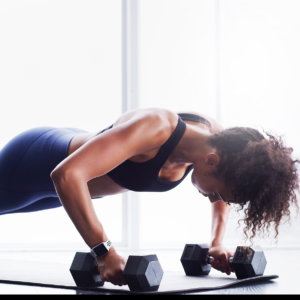
End 2023 with a giant exclamation point

Most powerful version of YOU
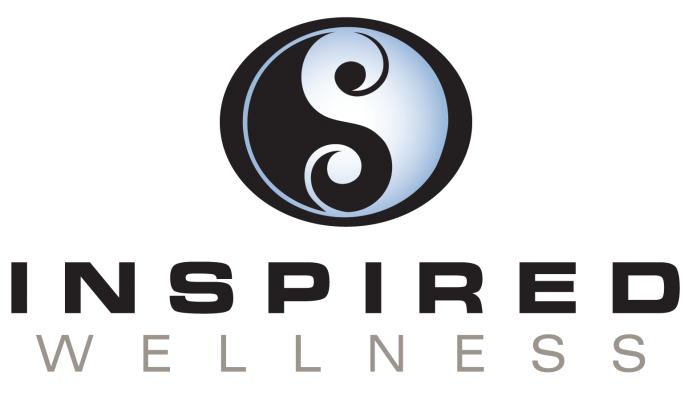
- (916) 235-3453
- [email protected]
- 2724 24th St STE 100, Sacramento, CA 95818, United States
Weekly Newsletter

- All Articles
- Mindfulness
- Relationships
The Ultimate Beginner’s Guide to Starting a Fitness Journey
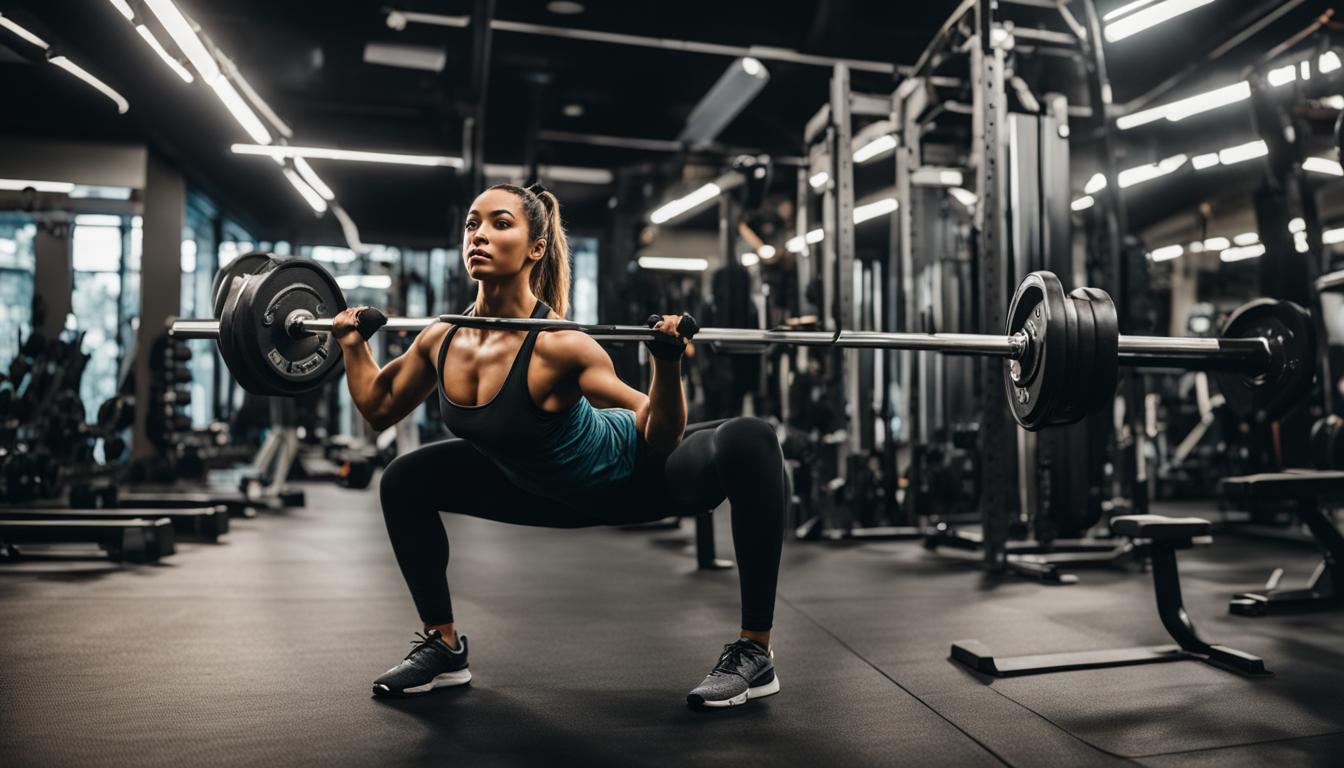
If you’re a beginner looking to embark on a fitness journey , you’ve come to the right place. Starting a fitness journey can be both exciting and overwhelming, but with the right guidance and mindset, you can achieve your goals and transform your life.
In this comprehensive guide, we will provide you with valuable fitness tips for beginners , effective workout routines, and everything you need to know about starting your fitness journey .
Key Takeaways:
- Set clear and realistic goals to keep yourself focused and motivated.
- Assess your current fitness level to design a safe and effective workout plan.
- Choose physical activities that you enjoy to make your fitness journey more enjoyable and sustainable.
- Start slow and gradually increase the intensity to avoid overexertion and injuries.
- Incorporate strength training and cardiovascular exercise to optimize your results.
Table of Contents
Define Your Goals
The first step in starting your fitness journey is to define your goals. This will provide you with a clear direction and motivation throughout your journey. Take some time to assess what you want to achieve, whether it’s losing weight, building muscle, improving flexibility, or simply leading a healthier lifestyle. By setting specific and realistic goals, you can track your progress and stay focused on your objectives.
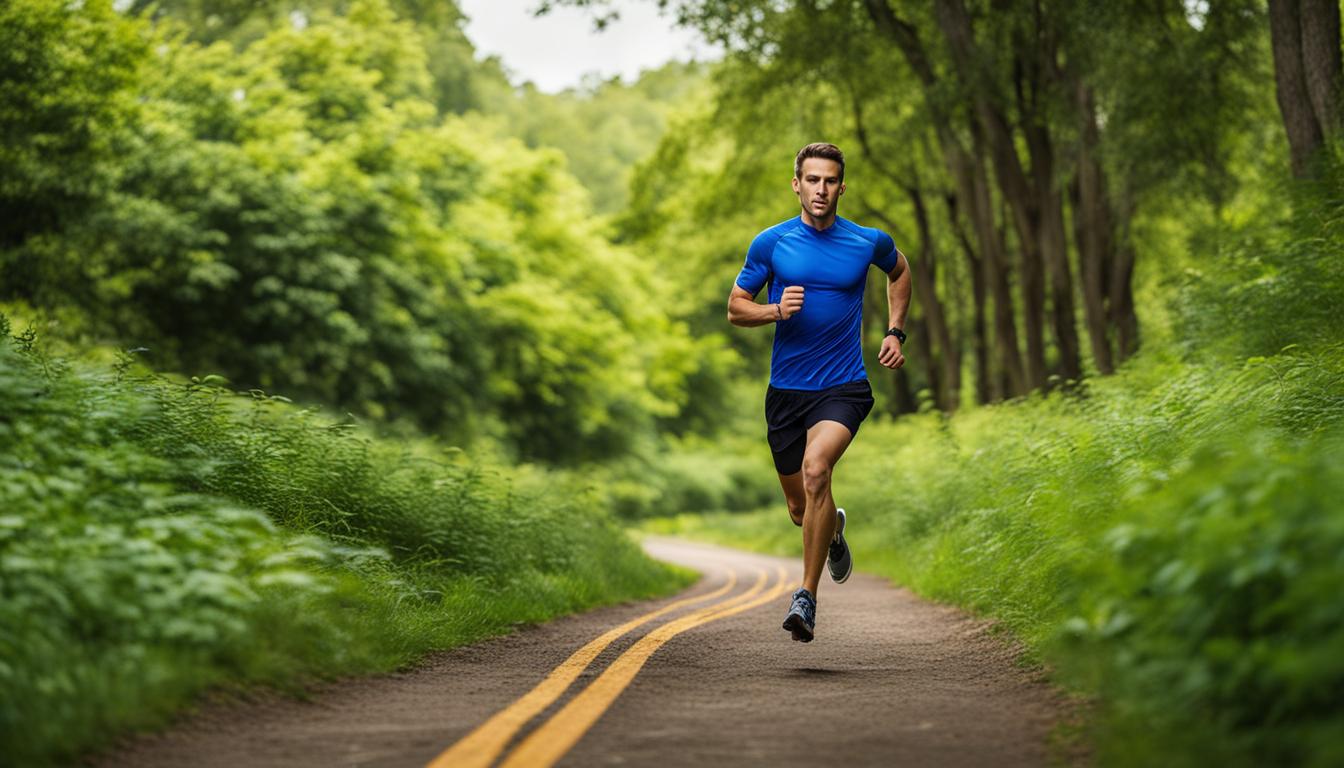
Remember, your goals should be personal to you and align with your individual preferences and aspirations. It’s important to choose goals that are achievable and within your reach. Starting with small milestones can help you build momentum and confidence, eventually leading to bigger accomplishments.
Setting Realistic Fitness Goals
- Be specific: Clearly define what you want to achieve, whether it’s losing a certain amount of weight or being able to run a specific distance.
- Make them measurable: Set targets that you can track and evaluate your progress against. This could be through recording your workouts or measuring your body measurements.
- Set realistic timelines: Give yourself enough time to achieve your goals without putting unnecessary pressure on yourself. Rome wasn’t built in a day, and your fitness journey will take time as well.
- Keep them achievable: Ensure your goals are within your capabilities and resources. Setting unrealistic goals can lead to frustration and disappointment.
- Revisit and adjust: As you progress in your fitness journey, regularly reassess your goals and make adjustments as necessary. This will help you stay motivated and continue challenging yourself.
Remember, the purpose of setting goals is not only to achieve them but also to build healthy habits and create a sustainable fitness routine. Enjoy the process and celebrate your achievements along the way.
Assess Your Current Fitness Level
Before starting any exercise routine, it’s important to assess your current fitness level. This will help you understand where you stand and tailor your workout plan accordingly. Performing a fitness assessment allows you to identify your strengths, weaknesses, and any potential health concerns that may need to be addressed.
One way to assess your fitness level is through a self-assessment . You can start by measuring your resting heart rate, which can give you an indication of your cardiovascular health. Additionally, you can perform simple tests like push-ups, sit-ups, and a timed walk or run to gauge your muscular strength and endurance. This self-assessment will serve as a baseline for tracking your progress and setting realistic goals.
“Assessing your fitness level is crucial as it helps you understand your starting point and progress over time. By identifying your strengths and weaknesses, you can develop a workout plan that targets specific areas and allows for steady improvement.”
If you have any pre-existing medical conditions or injuries, it’s important to consult with a healthcare professional before starting an exercise program. They can provide guidance on how to modify exercises or recommend alternative activities that are safe for you. Your health and safety should always be a priority, so don’t hesitate to seek professional advice when needed.
Key Points:
- Assessing your current fitness level is crucial before starting any exercise routine.
- Perform a self-assessment to gauge your cardiovascular health, muscular strength, and endurance.
- Consult with a healthcare professional if you have any pre-existing conditions or injuries.
- Use the results of your fitness assessment to track progress and set realistic goals.
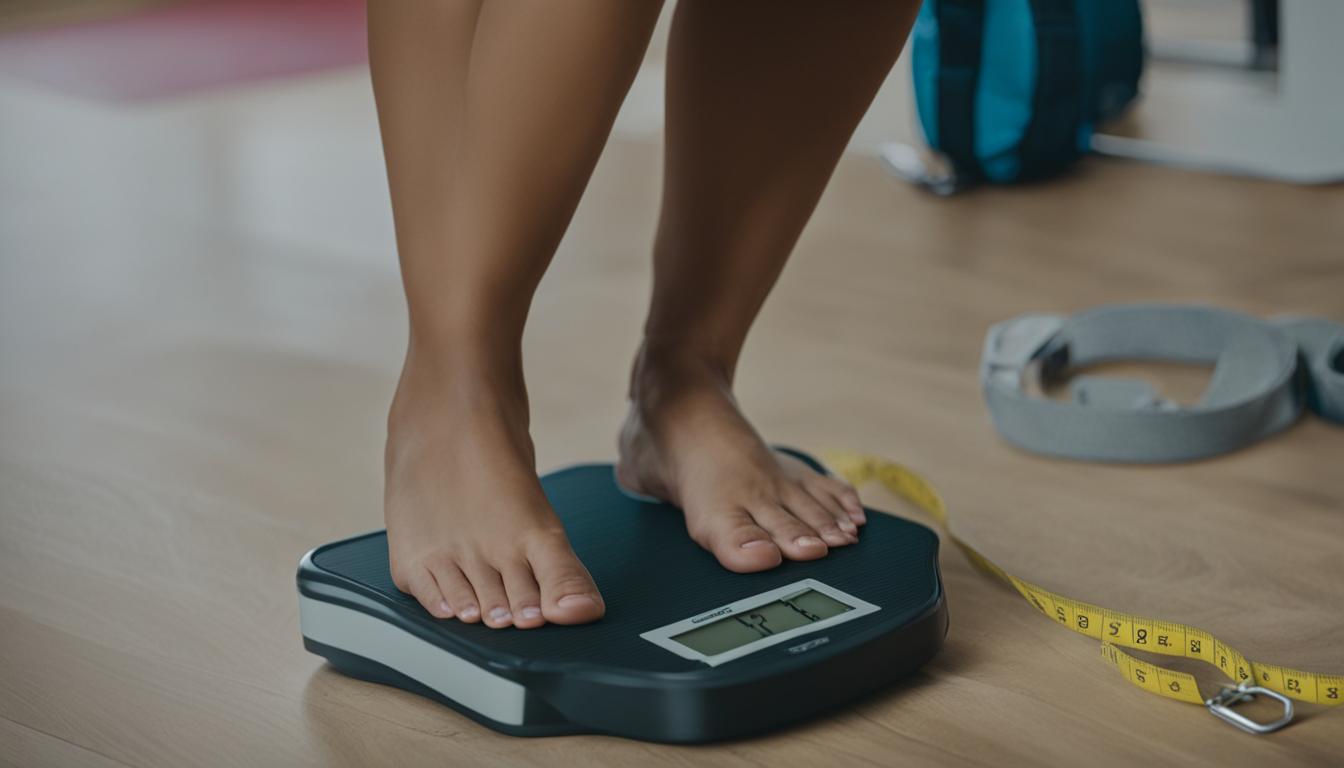
Taking the time to assess your fitness level will give you valuable insights into your body’s capabilities and limitations. It will also help you create a customized workout plan that aligns with your goals and takes into consideration any existing health concerns. Remember, everyone’s fitness journey is unique, and by starting with a solid foundation, you’ll set yourself up for success.
Choose Activities You Enjoy
Fitness should be fun and enjoyable, especially for beginners. Don’t feel like you have to stick to traditional gym workouts if they don’t excite you. There are plenty of activities and exercises to choose from that can help you get fit and have a great time doing it.
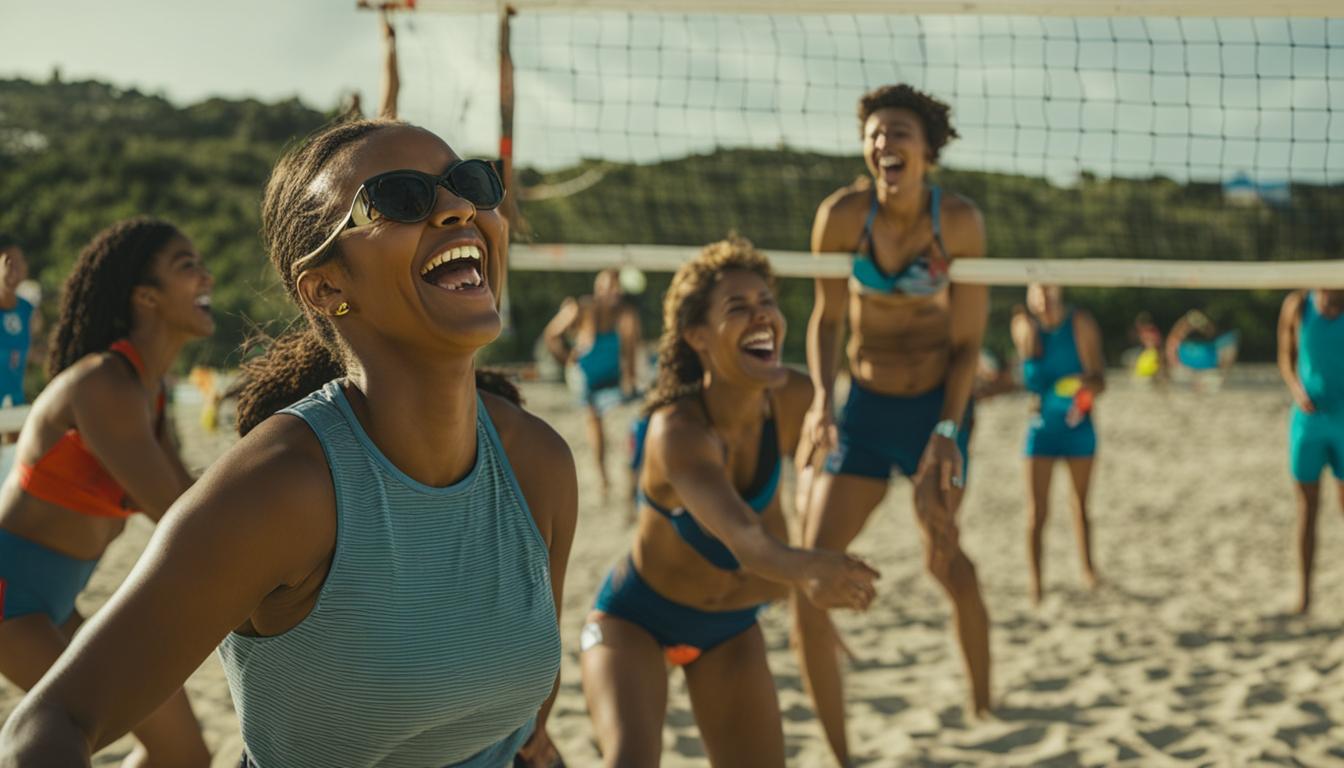
“Choose a physical activity that you genuinely enjoy. It could be anything from dancing to hiking to playing a sport. When you find something you love, it won’t feel like a chore, and you’ll be more likely to stick with it in the long term.”
Here are some ideas to get you started:
- Join a dance class, whether it’s salsa, hip-hop, or ballroom.
- Try outdoor activities like hiking, biking, or kayaking.
- Take up a team sport like soccer, basketball, or tennis.
- Explore group fitness classes at your local gym, such as Zumba or kickboxing.
Find What Moves You
Remember, the key is to find activities that make you feel alive and energized. Experiment with different options until you discover the ones that truly resonate with you. When you enjoy what you’re doing, exercise becomes less of a chore and more of a fun and fulfilling experience.
Starting Slow and Gradually Increasing Intensity
When beginning your fitness journey as a beginner, it’s crucial to start slowly and avoid overexertion. Embracing a gradual progression approach will not only reduce the risk of injury but also create a sustainable routine that you can stick to in the long run.
Start by incorporating moderate exercises that are suitable for your current fitness level. This could include brisk walking, light jogging, or gentle yoga. The key is to listen to your body and respect its limits.
“By starting with moderate exercises , you give your body time to adapt and build strength,” says fitness expert Jane Smith. “This approach allows for a smoother transition into more intense workouts, ensuring sustainable progress.”
As you feel more comfortable and confident, gradually increase the intensity and duration of your workouts. You can try adding short bursts of high-intensity intervals or challenging yourself with longer distances or heavier weights.
Remember, the goal is to find a balance between pushing yourself out of your comfort zone and avoiding overexertion . By gradually increasing the intensity, you’ll build strength, endurance, and confidence over time.
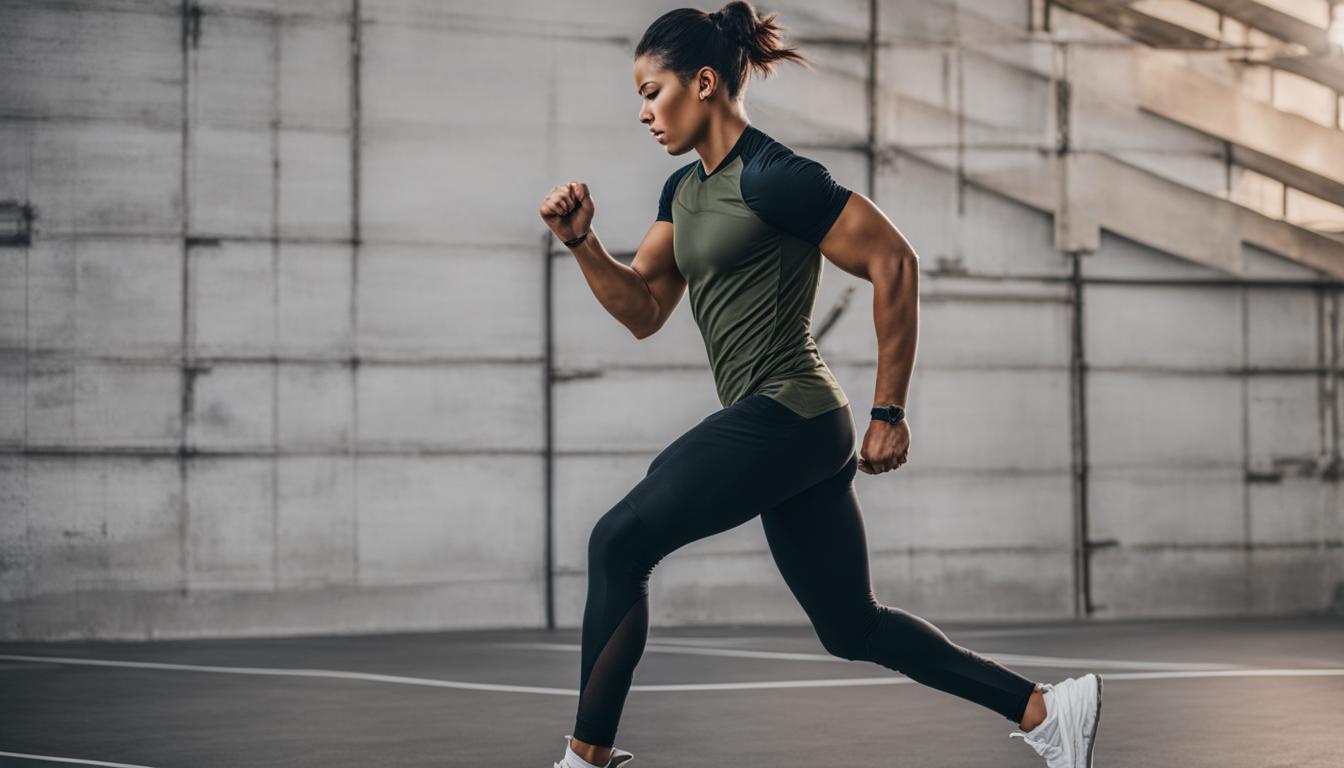
Additional Tips for Starting Slow and Gradually Increasing Intensity:
- Warm up before each workout with dynamic stretches and light cardio to prepare your muscles and joints.
- Pay attention to proper form and technique to ensure effective and safe workouts.
- Include rest days in your routine to allow your body to recover and prevent overuse injuries.
- Keep track of your progress and celebrate small milestones along the way to stay motivated .
Incorporate Strength Training
Strength training is a crucial aspect of any fitness journey, even for beginners. It not only helps build strength and muscle but also plays a significant role in improving overall body composition and boosting metabolism. The good news is that you don’t need fancy equipment or a gym membership to get started. Bodyweight exercises are a great way to incorporate strength training into your routine.
Bodyweight exercises are beginner-friendly and can be done anywhere, anytime. They allow you to use your own body weight as resistance, making them accessible and effective. Some popular bodyweight exercises include squats, lunges, push-ups, planks, and burpees. These exercises engage multiple muscle groups simultaneously, providing a full-body workout.
To make the most out of your bodyweight exercises, focus on proper form and technique. Start with a few reps of each exercise, gradually increasing the number of repetitions as you get stronger. Remember to challenge yourself without sacrificing proper form. If you find bodyweight exercises too easy, you can gradually add weights or resistance bands to increase the intensity.
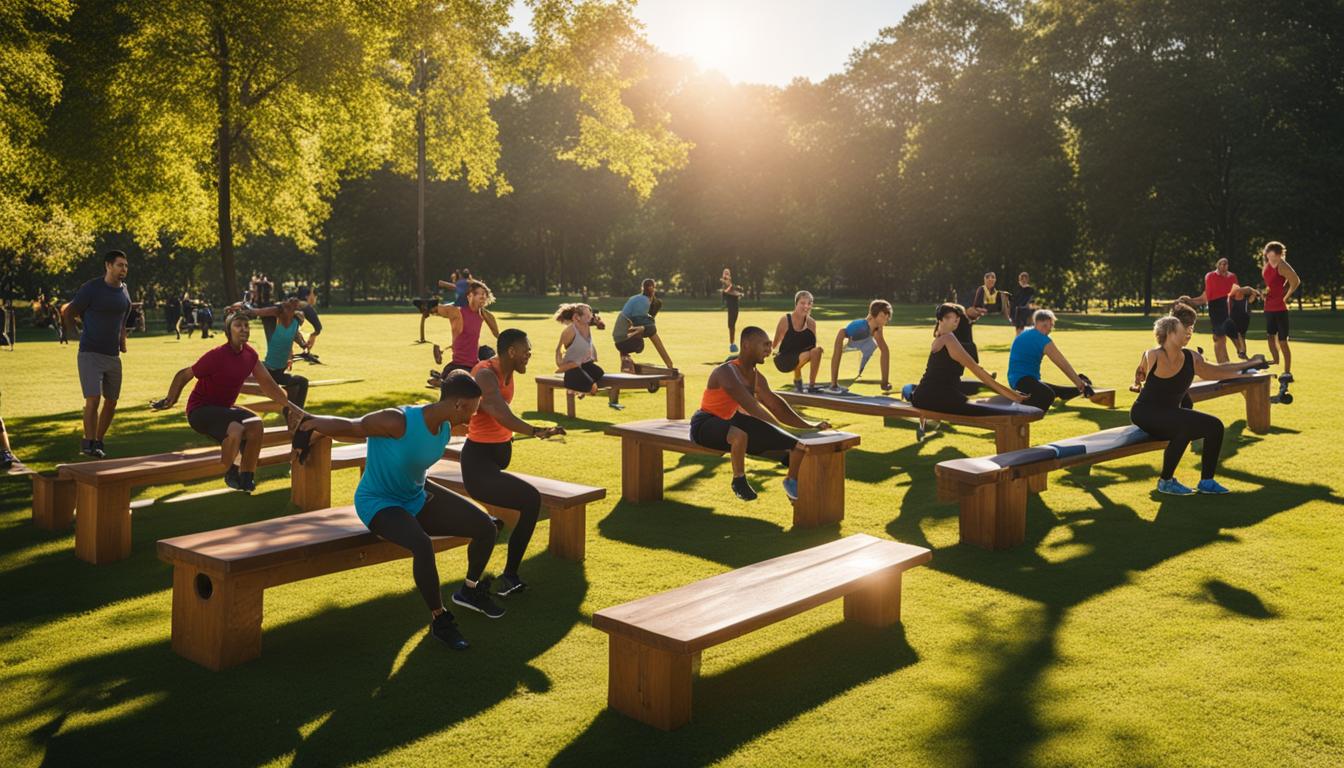
Benefits of Bodyweight Exercises for Beginners:
- They require little to no equipment or gym membership.
- They can be done at home or on the go.
- They engage multiple muscle groups for a full-body workout.
- They improve strength, endurance, and overall body composition.
- They can be modified to suit individual fitness levels and goals.
By incorporating bodyweight exercises into your fitness routine, you can lay a solid foundation of strength and set yourself up for success on your fitness journey. Remember to start slowly, focus on proper form, and gradually progress as your body gets stronger. Stay consistent, be patient, and celebrate every small improvement along the way!
Cardiovascular Exercise for Endurance
Improving cardiovascular health is an essential part of any fitness journey, especially for beginners. Incorporating cardiovascular exercises into your routine can help strengthen your heart, increase endurance, and burn calories. Whether you prefer low-impact activities or high-intensity workouts, there are plenty of beginner-friendly cardio exercises to choose from.
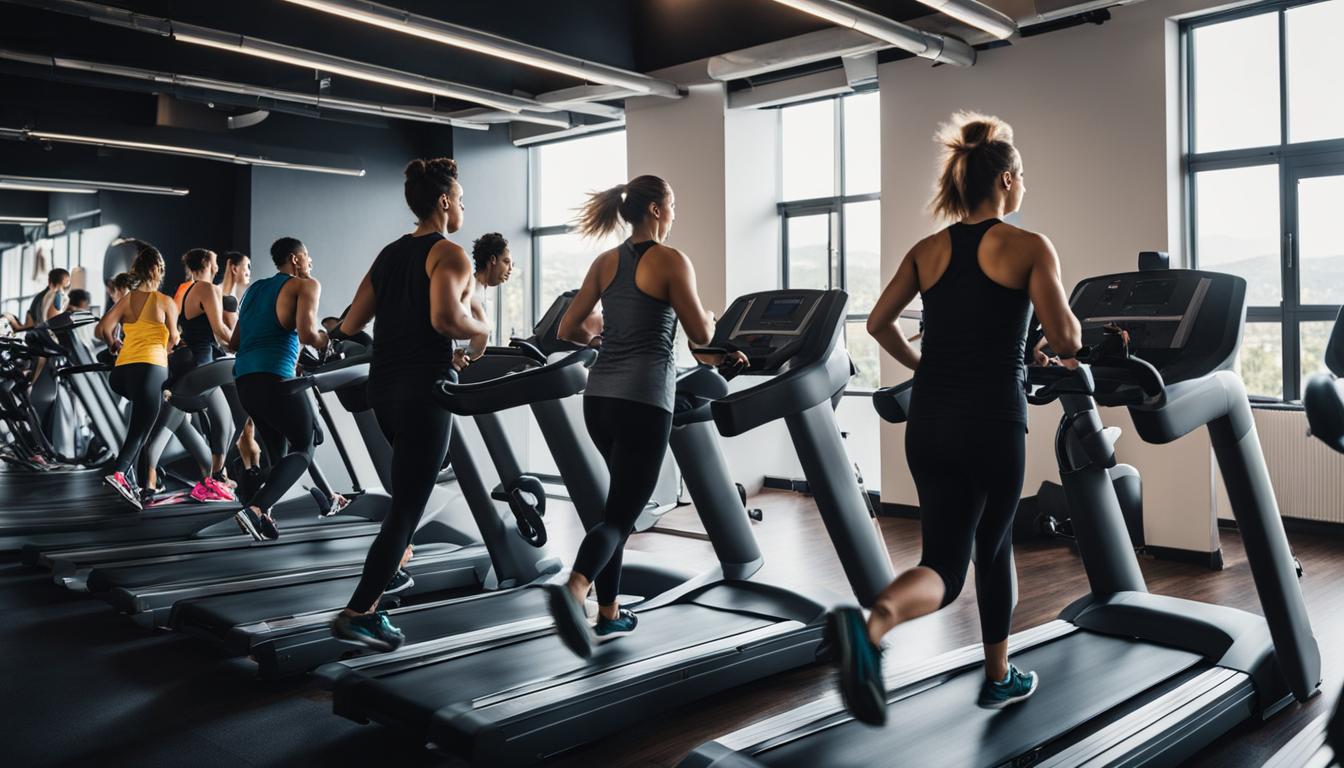
- Walking: Taking brisk walks is a simple yet effective way to get your heart rate up and improve cardiovascular health. Start with shorter distances and gradually increase the duration and pace of your walks.
- Jogging: If you’re looking for a more intense cardio workout, jogging can be a great option. Begin with a light jog for short intervals and gradually increase both the speed and duration of your runs.
- Cycling: Whether you prefer indoor stationary bikes or outdoor cycling, this activity is gentle on your joints and provides a fantastic cardiovascular workout. Start with shorter rides and gradually increase the distance and intensity.
- Dancing: Not only is dancing fun and uplifting, but it also offers an excellent cardio workout. Explore different dance styles such as Zumba, salsa, or hip-hop to find the one that brings you joy while getting your heart pumping.
Remember to choose activities that you enjoy to make your cardio workouts more sustainable in the long run. Aim for at least 150 minutes of moderate-intensity cardio or 75 minutes of vigorous-intensity cardio per week, as recommended by the American Heart Association. Stay consistent with your workouts, and over time, you’ll notice improvements in your endurance and overall cardiovascular health.
Pay Attention to Nutrition
Eating a balanced diet and adopting healthy eating habits are essential components of any fitness journey, especially for beginners. Proper nutrition fuels your body, supports your workouts, aids in recovery, and helps you achieve your fitness goals. Here are some key tips to keep in mind:
1. Focus on a Balanced Diet
Aim to include a variety of nutrient-dense foods in your daily meals. Fruits, vegetables, lean proteins, whole grains, and healthy fats should form the foundation of your diet. These foods provide the necessary vitamins, minerals, and macronutrients your body needs to function optimally.
2. Practice Portion Control
Pay attention to portion sizes to avoid overeating. Use smaller plates and bowls, and listen to your body’s hunger and fullness cues. Eating mindfully and savoring each bite can help you better gauge how much food your body actually needs.
3. Stay Hydrated
Don’t forget to drink enough water throughout the day. Staying hydrated is important for overall health, digestion, and exercise performance. Carry a water bottle with you and aim to drink at least 8 cups (64 ounces) of water daily.

4. Limit Sugary and Processed Foods
While it’s okay to indulge in treats occasionally, it’s important to limit your consumption of sugary and processed foods. These foods often lack nutritional value and can contribute to weight gain and other health issues. Opt for healthier alternatives like whole fruits, homemade snacks, and minimally processed foods.
Remember, nutrition is a key component of your overall fitness journey. By fueling your body with the right foods in appropriate portions, you’ll enhance your energy levels, improve your physical performance, and support your body’s transformation.
Embarking on a fitness journey as a beginner can be challenging, but it is a rewarding endeavor that can transform your way of life. By setting clear goals, choosing enjoyable activities, focusing on proper nutrition, and staying consistent, you can achieve remarkable results.
Remember, progress takes time, so be patient with yourself and celebrate every small achievement along the way. Starting a fitness journey can be intimidating, but don’t let fear or expectations hold you back. Take that first step towards a healthier and more fulfilling life.
Whether your goal is weight loss, muscle building, or simply improving your overall health, starting a fitness journey is the key. Commit to the process, embrace the challenges, and believe in yourself. With dedication and perseverance, you can achieve your fitness goals and create lasting positive changes.
How do I set clear and realistic fitness goals?
Take some time to assess what you want to achieve through your fitness journey, whether it’s weight loss, muscle building, flexibility improvement, or simply leading a healthier lifestyle. Having specific goals will keep you focused and motivated throughout your journey.
How should I assess my current fitness level?
Perform a self-assessment to gauge your strengths, weaknesses, and any potential health concerns. If you have pre-existing medical conditions or injuries, consult with a healthcare professional before starting.
What are some enjoyable physical activities I can try?
Explore different types of activities such as running, swimming, dancing, cycling, or group fitness classes. Find what excites you the most, as this will increase your likelihood of sticking with it in the long run.
How should I start my fitness journey as a beginner?
It’s important to start slowly and avoid overexertion. Begin with moderate exercises and gradually increase the intensity and duration as your fitness level improves. Listen to your body and take rest days when needed to allow for proper recovery.
Is strength training important for beginners?
Yes, strength training is a vital component of any fitness journey. Start with bodyweight exercises like squats, lunges, push-ups, and planks. As you progress, you can introduce weights or resistance bands to challenge yourself further.
What are some examples of cardiovascular exercises for beginners?
Activities like walking, jogging, cycling, or using an elliptical machine can elevate your heart rate and burn calories. Aim for at least 150 minutes of moderate-intensity cardio or 75 minutes of vigorous-intensity cardio per week.
How important is nutrition in a fitness journey?
Nutrition plays a critical role in achieving your fitness goals. Focus on consuming whole, nutrient-dense foods like fruits, vegetables, lean proteins, whole grains, and healthy fats. Stay hydrated and avoid excessive consumption of sugary or processed foods.
What should I keep in mind when starting a fitness journey?
Starting a fitness journey as a beginner can be challenging but rewarding. Set clear goals, choose enjoyable activities, focus on proper nutrition, and stay consistent. Remember that progress takes time, so be patient and celebrate every small achievement along the way.

Anne Jones is a dynamic fitness trainer and lifestyle guru, inspiring others towards healthier living on goodemma.com. Her holistic approach to well-being fuses fun, effective workouts with practical lifestyle tips, empowering readers to embrace fitness joyfully. With her expert guidance, Anne transforms fitness from routine to a vibrant, life-enhancing journey.
View all posts
Choose a Location.
Launching your fitness journey: a guide to gym routine for beginners.

Starting a gym routine can be intimidating, confusing and even frustrating, especially after a long hiatus from working out. With so many options and a plethora of information available at your fingertips, it can be a challenge to navigate and know how to get started. With some planning and goal setting, you can find a manageable routine that can have long lasting physical and mental health benefits. There really is no right or wrong way – the reality is, to be successful you must find a routine you can be consistent with and incorporate into your daily life on a regular basis. View our Frequently Asked Questions that we have curated over the years to learn more about the Orangetheory Fitness workout.
Too many people get caught up in the mindset of “is this the best way to work out?” instead of adopting the mindset of “is this the best way to work out for my life right now?” Before you start setting your goals or workout routine plans, first spend some time considering how much time you can realistically spend each day exercising. Be real with where you are: if you currently don’t exercise at all, do not jump to working out five or six days a week. Instead, try two or three times a week. Chances are, as you begin to feel the benefits you will start problem solving for how you can fit it in more—but give yourself time to establish consistency first. Learn more about the importance of a “Cooldown” to reduce the risk of injury and more!
The Importance of Starting with Low Intensity
Once you figure out a reasonable amount of time you can dedicate to exercising each week, think about your long-term goals. Are you looking for improved health markers, increased stamina, greater strength or fat loss? Are you wanting to train for a specific event like a 5K, adventure race or hiking trip? No matter the goal, if you are a beginner or coming back after a significant time off, you will need some short-term goals to improve your fitness foundations before you start catering your routine to specific long-term goals.
Long-term goals provide motivation, while short-term goals build the foundation necessary to achieve your larger aspirations. A few key fitness foundations incorporate cardiovascular endurance, muscular strength, joint mobility and stability and recovery. You want a strong foundation to build upon! If you do not build this foundation first, you run the risk of injury or burn out which will set you back from reaching those bigger goals.
Beginner-Friendly Workouts Explained
- Cardiovascular Endurance: Begin with low-impact exercises like cycling, treadmill walking or swimming. Start with short sessions (10-20 minutes) and over time increase the duration. Once you get up to 30-60 minutes you can go back to the shorter sessions but increase the intensity (i.e. adding incline to your treadmill). The best cardio exercise? The one you like the most!
- Muscular Strength: Incorporate resistance training exercises using your body weight, light-to-moderate loads or bands. Aim to get in two or three sessions a week and do a minimum of one set for each major muscle group. To maximize your time, do compound movements that involve more than one muscle group at a time (i.e. squats, push-ups, lunges and rows). Include joint stability and core into your program (i.e. planks, bridges).
- Joint Mobility: You can incorporate this by starting each exercise session with a dynamic warm-up that focuses on joint mobility (i.e. hip and arm circles).
- Recovery: Include rest days in your routine to allow your body to adapt to the stress of exercise. Nutrition, hydration and sleep are keys to adequate recovery too.
Constructing Your Weekly Workout Plan
Below is a sample weekly routine you can follow or use for inspiration to get started. It includes the major movements you want to incorporate (push, pull, squat, lunge, hinge and core). Remember, if you are aiming for 20 minutes of cardio, that could mean you do ten minutes in the morning and ten minutes in the afternoon. Start each workout with a dynamic warm-up and finish with a cool-down/stretch.
This plan has an upper and lower strength training session that is quick. Then, put these together for two longer workout sessions the next week. Have less time? Ditch the upper and lower workouts and do the total body workout two to three times a week. In general, you can do lower and upper strength training on consecutive days, but you will want to allow time for your muscles to rest in between total body strength sessions. Keep in mind recovery needs variation and change as your fitness level changes.
Be sure to have some way to track your workouts – you deserve to give yourself credit for your hard work! A visual display of your progress (whether in an app or on your desk) can help you stay motivated. At Orangetheory Fitness, we track all your workouts within our mobile app so that our members can see their progress in real-time and over time.

Incorporating Community Wisdom
Managing your own fitness programming can be challenging—especially if you don’t know how to adapt and evolve your workouts as you progress. This is where a fitness professional can help guide you, whether that be a personal trainer, online workout program or a boutique studio like Orangetheory that provides daily programming and a coach to customize each workout to your needs. A studio like Orangetheory also provides a community of people with similar aspirations to yours to foster accountability and help you be successful.
No matter what your goals or weekly routine look like, the most important aspect of your success is consistency. It can take several months before you start seeing and feeling the effects, so be patient, be consistent and stay the course. One of the most important things you can do for your long-term health is exercise – you are worth the work!
Rachel Vaziralli, Orangetheory Fitness's Director of Fitness Design, oversees the creation of their heart rate-based workout program, leveraging science, technology, and coaching to help members live a longer, more vibrant life. With a rich background in fitness, including roles at Equinox and extensive education in dance and exercise physiology, Rachel brings a wealth of experience to her current position. Based in Boca Raton, Florida, she remains dedicated to helping individuals unlock their maximum fitness potential.

Free Intro Class*
The Ultimate Guide To Staying Motivated On Your Fitness Journey
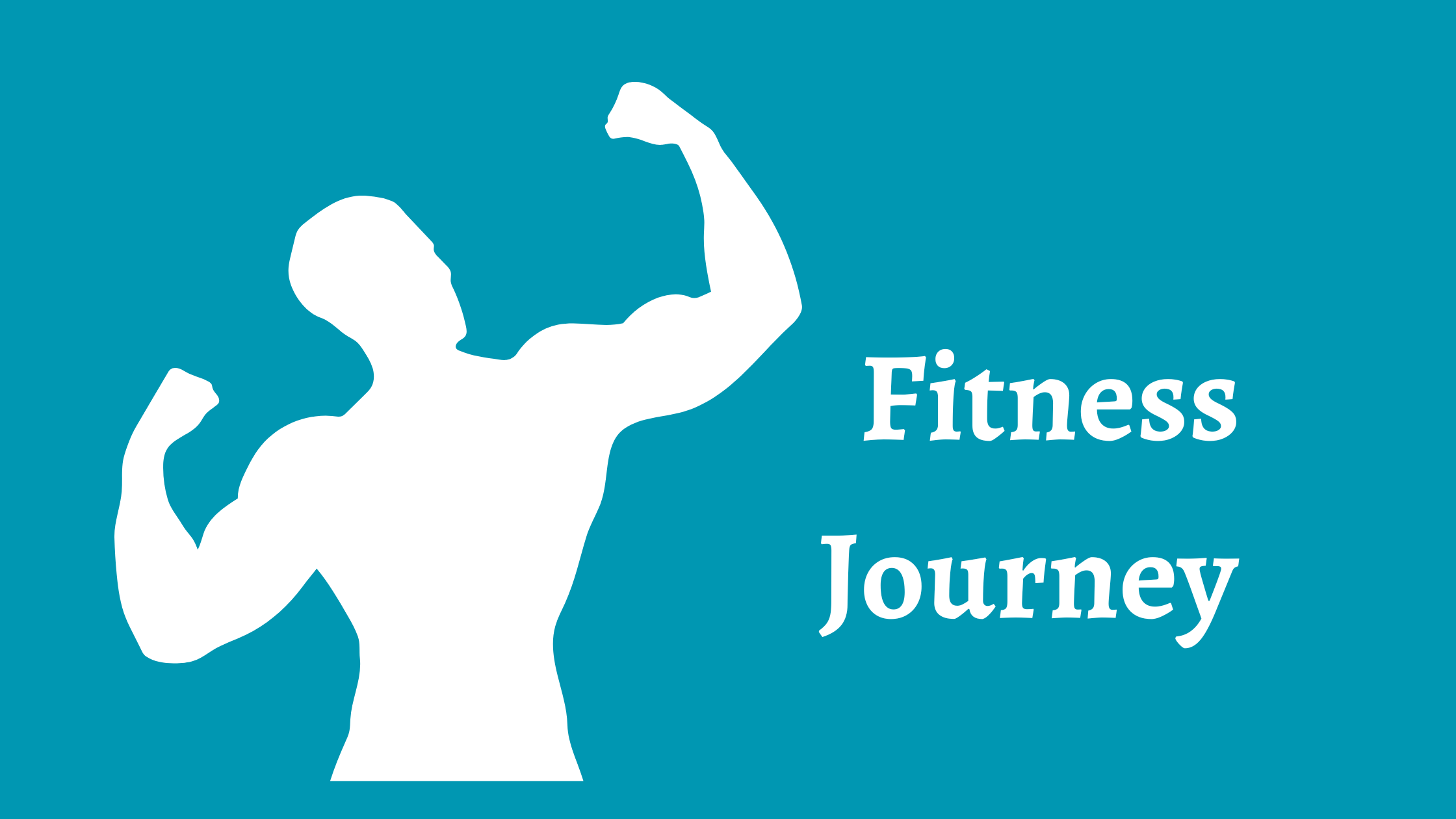
Embarking on a fitness journey is a transformative experience that promises a healthier, happier, and more vibrant version of yourself. However, staying motivated throughout this journey can often be a daunting task. There are days when fatigue sets in, self-doubt creeps in, and the allure of skipping a workout becomes tempting. Not to mention that distractions can come from anywhere that could disrupt you from resuming your daily fitness routine.
Thankfully, there are certain strategies and techniques you can do to keep your motivation soaring high and stick to your fitness journey. So, keep reading and get ready to unlock your full potential and discover the secrets to staying motivated as you embark on the transformative path toward a healthier and fitter you.
- Set Realistic Goals
One of the challenges of regular exercise is easily losing focus in such a short time. This can happen when you start a fitness routine without any goal in mind. Exercising without any objective can make it easy for you to lose focus since you don’t have any clear direction or purpose. It’ll also be harder for you to track your progress and see any results when you don’t have any goal.
Thus, before starting your fitness journey, ensure to set realistic goals first. Define both short-term and long-term objectives and break down your goals into smaller milestones. Furthermore, don’t forget to celebrate these smaller victories to keep you motivated and reinforce your progress. Remember, the success of your fitness routine is in the journey, not in the results.
- Find Your ‘Why’
Understanding your personal motivation is vital to sustaining your fitness journey. Reflect on why you started in the first place. Whether to improve your health, boost self-confidence, or enhance your overall well-being, remind yourself of these reasons regularly. Your ‘why’ will be a powerful driving force to keep you on track when motivation wanes.
- Create A Routine
Creating a routine is a powerful strategy that can significantly contribute to your motivation and success in achieving your fitness goals. The routine will provide structure, organization, and consistency, helping you overcome obstacles and stay focused on your fitness journey.
Create a regular workout schedule that syncs with your daily routine and ensure to stick to them. A routine teaches consistency, consistency breeds discipline, and discipline fuels motivation. Make exercise a non-negotiable part of daily life, like brushing your teeth. The more it becomes a practice, the easier it will be to stay motivated.
- Find Accountability
Some people find it hard to stay motivated in their fitness routine when they’re alone or don’t have anyone to share the goal with. To keep you focused and committed to your routine, you can enlist the support of a workout buddy or join a fitness community. Sharing your journey with others creates a sense of accountability and camaraderie.
Having someone to lean on during challenging times can also be incredibly motivating. Consider finding a workout partner, hiring a personal trainer, or joining fitness classes to stay connected and inspired.
- Embrace Variety
Sooner or later, your fitness routine can become monotonous, leading to a loss of motivation. Spice up your fitness routine by incorporating various exercises, like strength training, cardio, yoga, or outdoor activities. Exploring new workouts not only challenges your body but also keeps your mind engaged and excited about your fitness journey.
- Track Your Progress
Tracking your progress is crucial in staying motivated on your fitness journey. So, document your achievements, whether it’s inches lost, pounds shed, or strength gained, as these details provide tangible evidence of your hard work. You can use a fitness journal, mobile app, or wearable fitness tracker to monitor your progress, steps, and even heart rate with the new technologies like Fitbit HRV accuracy , these tools provide valuable insights into your fitness journey . Seeing how far you’ve come can reignite your motivation during challenging times.
- Reward Yourself
Celebrate your milestones and achievements with rewards. Treat yourself to something you enjoy, like a massage, a new workout outfit, or a day off from your regular routine. Rewards act as positive reinforcement, making your fitness journey more enjoyable and satisfying. However, do remember that rewards are a tool to motivate and celebrate your progress. They should be used strategically and in a way that supports your long-term goals. Avoid using ‘rewards’ as an excuse to return to your unhealthy habits.
- Practice Self-Care
Taking care of yourself holistically is essential for maintaining motivation. Prioritize rest, sleep, and proper nutrition. Treat yourself with kindness and listen to your body’s needs. Nurturing your physical and mental well-being will optimize your energy levels and overall motivation.
The Bottom Line
Staying motivated on your fitness journey is a lifelong process. By setting realistic goals, finding your why, establishing a routine, seeking accountability, embracing variety, tracking your progress, rewarding yourself, and practicing self-care, you’ll be equipped with the tools to maintain your motivation and achieve lasting success. Remember, the most important step is to start, and with unwavering motivation, you’ll soar to new heights on your fitness journey.
Leave a Comment Cancel reply
Save my name, email, and website in this browser for the next time I comment.
Cardio Fitness • General • Gym Fitness
How to start going to the gym: a guide.
Starting your fitness journey is a transformative step towards a healthier and happier you. In this guide, we’ll share with you some of the essential aspects of starting your 30-minute gym routine (if you’re just starting), providing practical advice and motivation to help you navigate the exciting world of fitness. Whether you’re new to the […]
Published: 1/22/24
Starting your fitness journey is a transformative step towards a healthier and happier you. In this guide, we’ll share with you some of the essential aspects of starting your 30-minute gym routine (if you’re just starting), providing practical advice and motivation to help you navigate the exciting world of fitness. Whether you’re new to the gym or returning after a hiatus, we’ve got you covered. Embrace the empowering journey of self-improvement, discover the joy of breaking a sweat, and witness the positive changes unfolding in both your body and mindset. Your fitness evolution starts here!
Key Components of a Successful Gym Routine
Keeping a consistent gym routine involves grasping the fundamental components that play a pivotal role in enhancing your overall fitness. Whether you’re going solo or trying partner workouts, here’s a look at the key elements that should be part of your successful gym routine:
1. Strength Training
- Free Weights: Incorporate exercises with dumbbells, barbells, and kettlebells to engage multiple muscle groups and improve functional strength.
- Weight Machines: Utilize resistance machines to target specific muscle areas with controlled movements, making them ideal for beginners.
- Bodyweight Exercises: Integrate bodyweight workouts like push-ups, squats, and lunges for functional strength and flexibility.
2. Aerobic Exercise
- Running: Lace up your shoes and hit the treadmill or venture outdoors for a cardiovascular workout that boosts endurance and burns calories.
- Cycling: Whether on a stationary bike or cycling through scenic routes, this low-impact exercise is excellent for cardiovascular health.
- Elliptical Machines: Enjoy a low-impact alternative that mimics running without the stress on your joints, making it suitable for various fitness levels.
3. Flexibility Exercises
- Dynamic Stretching: Incorporate dynamic stretches into your warm-up routine to improve blood flow, flexibility, and joint mobility.
- Static Stretching: Post-workout, engage in static stretches, holding each stretch for 15-60 seconds, to enhance flexibility and reduce muscle tension.
- Yoga: Explore yoga sessions to not only improve flexibility but also promote relaxation and mental well-being through mindful movement and breath control.
Importance of Goal Setting
A successful gym journey involves more than just lifting weights and breaking a sweat—it’s about setting clear and achievable fitness goals. Here’s why goal setting is the cornerstone of your path to a healthier you:
- Guiding Compass: Your fitness goals act as a guiding compass, directing your workouts with purpose and intention. They provide a roadmap for your journey, ensuring every step contributes to your overall success.
- Fueling Motivation: Goals serve as powerful motivators, igniting the passion needed to push through challenges. Whether you’re aiming for weight loss, muscle gain, or improved mental health, having a target in mind keeps you driven and focused.
- Setting the Tone: Clear objectives set the tone for your entire fitness routine. They create a foundation for your workouts, helping you tailor your exercises, intensity, and duration to align with your specific aspirations. This is especially important in your morning exercise routine .
Incorporating goal setting into your gym routine transforms exercise from a mere activity to a purpose-driven journey. So, take a moment to define your objectives—whether they’re about sculpting your physique, enhancing endurance, or finding mental clarity—and let them be the driving force propelling you toward your fitness aspirations.
Different Types of Gyms
Selecting the right gym sets the stage for a successful fitness journey, and with the diverse options available, it’s essential to make an informed decision. Explore the various types of gyms to find the perfect fit for your unique preferences and fitness goals:
1. Specialized Studios
Specialized studios cater to those with specific workout preferences, offering a focused environment for targeted exercises. Consider these options:
- Yoga Studios: Immerse yourself in the tranquility of a yoga studio, perfect for enhancing flexibility, balance, and mindfulness.
- Spin Classes: Join a spin studio for high-energy cycling sessions, ideal for cardiovascular health and lower-body strength.
- Strength Training Studios: Explore spaces dedicated to strength training, equipped with free weights and machines for building muscle.
It’s worth noting that specialized studios can limit the type of fitness activities you can engage in and a more full service gym may be more appropriate for someone trying to find their fitness groove. For example, Chuze provides group fitness classes that cover these same types of workouts, and also has standard gym workout equipment along with extra amenities.
2. Full Service Gyms
Full service gyms provide a one-stop-shop for all your fitness needs, offering a comprehensive range of amenities, equipment, and classes. Factors to consider include:
- Amenities: Access facilities like saunas, swimming pools, and locker rooms for a complete post-workout experience.
- Equipment Variety: Enjoy a wide array of exercise equipment, ensuring you have everything you need to diversify your workouts.
- Class Diversity: Engage in various classes, from cardio workouts and strength training to yoga and dance, catering to diverse fitness preferences.
Full service gyms, such as Chuze, allow beginners to explore different fitness exercises and routines that work best for them instead of committing them to one type of workout class!
3. Community-Centric Gyms
Some gyms prioritize a sense of community, fostering a supportive environment for individuals of all fitness levels:
- Group Fitness Classes: Join classes that encourage camaraderie, creating a motivating atmosphere for achieving shared fitness goals.
- Personalized Training: Access to personal trainers who provide tailored guidance, ensuring your workouts align with your specific objectives.
- Social Spaces: Gyms with communal spaces create opportunities to connect with fellow fitness enthusiasts, fostering a sense of belonging.
4. Budget-Friendly Options
If budget considerations are paramount, explore affordable gym options without compromising on essential amenities:
- Basic Gym Chains: Many budget-friendly chains provide the necessary equipment and classes for a no-frills, cost-effective fitness experience.
- Local Community Centers: Check out community centers that offer gym facilities at affordable rates, contributing to both your physical and financial well-being.
5. Virtual Fitness Platforms
In the digital age, virtual fitness platforms (such as our iChuze digital fitness program) have gained popularity, allowing you to work out from the comfort of your home:
- Online Classes: Access a variety of classes and workouts through virtual platforms, providing flexibility in your fitness routine.
- Tech-Integrated Equipment: Explore gyms equipped with virtual training tools, combining technology with traditional fitness for an innovative experience.
Beach Activities in San Diego
Building a beginner-friendly workout routine.
Your fitness journey as a beginner requires a well-crafted plan that balances simplicity and effectiveness. Here’s a guide to building a beginner-friendly workout routine, complete with sample workout plans:
- Cardiovascular Exercise: Kickstart your workout with 20-30 minutes of aerobic activity. Options include brisk walking, cycling, or using cardio machines like the treadmill.
- Strength Training: Build overall strength with a mix of bodyweight exercises, free weights, or weight machines. Include exercises like squats, lunges, and dumbbell workouts.
- Flexibility Work: Dedicate time to stretching exercises to enhance flexibility and prevent injuries. Focus on dynamic stretches before your workout and static stretches afterward.
Sample Beginner’s Workout Plan (3 Days/Week):
Follow this simple and effective workout plan designed for beginners:
Day 1: Cardio
- 20 minutes on the treadmill
- 15 minutes on the stationary bike
Day 2: Strength Training
- Bodyweight squats: 3 sets of 10 reps
- Dumbbell chest press: 3 sets of 12 reps
- Plank: 3 sets of 30 seconds to 1 minute hold
- Bicycle Crunches: 3 sets of 15 reps (each side)
Day 3: Flexibility
- Dynamic stretching routine
This beginner’s plan incorporates a balance of cardiovascular exercise, strength training, and flexibility work, ensuring a holistic approach to your fitness journey. Feel free to adjust the intensity and duration based on your comfort level and gradually increase as you gain confidence and strength. Remember, the key is consistency and enjoyment as you progress towards your fitness goals.
Overcoming Gym Intimidation and Anxiety
Feeling nervous about the gym is normal, and overcoming that initial hesitation is crucial for a positive fitness journey. Combat gym intimidation with these practical strategies:
- Choosing Off-Peak Hours: Experience a less crowded gym during off-peak times. This allows for a more comfortable and private workout environment, easing feelings of self-consciousness.
- Starting Slow: Begin with familiar exercises to build confidence and a sense of familiarity within the gym. Gradually explore new equipment at your own pace, focusing on exercises you feel comfortable with.
- Buddy System: Bring a friend along for mutual support. Having a workout buddy can alleviate anxiety, provide encouragement, and make the gym experience more enjoyable.
- Group Classes: Participate in group fitness classes where the group dynamic fosters a sense of community. Group classes often have an instructor guiding the session, offering additional support and motivation.
- Virtual Workouts: If the gym setting is still overwhelming, consider starting with virtual workouts at home. Many fitness apps and online platforms (such as our iChuze online fitness program + app ) offer beginner-friendly routines, allowing you to build confidence before transitioning to the gym.
- Professional Guidance: Consider joining a group fitness class (such as our Team Training or Lift Lab ), even if just for a few sessions. A certified coach can provide guidance, create a workout plan, and offer support in navigating the gym after the session.
Following Gym Etiquette
To maintain a positive gym environment and ensure a harmonious workout space for everyone, it’s crucial to adhere to basic etiquette guidelines:
- Clean Equipment: Wipe down machines after use to promote cleanliness and hygiene. This simple act demonstrates respect for fellow gym-goers by leaving the equipment in a sanitary condition for the next user.
- Mind Your Noise: Keep noise levels in check, including avoiding loud conversations or music without headphones. Additionally, be mindful when dropping weights, as excessive noise can disrupt the concentration of others.
- Respect Personal Space: Be aware of personal space, especially during crowded hours. Allow others enough room to perform their exercises comfortably, and avoid unnecessarily occupying shared spaces.
- Share Equipment: Be considerate by allowing others to work in between your sets, especially during peak hours. Share the equipment, and communicate with fellow gym-goers if there’s a need to alternate.
- Time Management: Respect the time limits on equipment during busy periods. Be mindful of others waiting and try to complete your workout efficiently.
- Return Equipment: After using free weights or other portable equipment, return them to their designated places. This ensures that others can easily find and use the equipment without disruption.
- Silence Your Phone: Keep your phone on silent mode or vibrate to minimize disturbances. If you need to take a call, step outside the workout area to avoid disrupting those around you.
- Proper Attire: Wear appropriate workout attire and footwear. This not only contributes to a professional and respectful atmosphere but also ensures your safety during exercises.
Your Fitness Journey Starts Here
Starting your gym journey is a rewarding venture that contributes to your physical and mental well-being. Chuze Fitness , with its commitment to providing an awesome yet affordable gym experience, is an excellent choice for beginners, seasoned gym goers, and group fitness classes alike. Remember, your fitness journey is unique, and the key is to enjoy the process. So, put on your workout clothes, pack your gym bag, and take the first step towards a healthier, happier you. Your fitness adventure awaits!
Explore our list of nearby locations scattered across California, Arizona, Colorado, Texas, Georgia, Florida, and New Mexico. Whether you’re in search of gyms in El Paso or gyms in Orange County , we’re here to assist you in reaching your fitness goals. Experience positive change for yourself.
- Nerd Fitness. 6 Gym Workouts for Beginners (How to Train in a Gym) . https://www.nerdfitness.com/blog/a-beginners-guide-to-the-gym-everything-you-need-to-know/ .
- RxFit. How to Start Going to the Gym: A Beginner’s Guide. https://rxfit.co/how-to-start-going-to-the-gym/ .

Ani is the Vice President of Fitness at Chuze Fitness and oversees the group fitness and team training departments. She’s had a 25+ year career in club management, personal training, group exercise and instructor training. Ani lives with her husband and son in San Diego, CA and loves hot yoga, snowboarding and all things wellness.
Related Posts
Flexibility routine: 7 full body stretches, mastering weight training for women, get your workout benefits in only 30 minutes, denver outdoor activities.
JUSTIN THOMAS MILLER
How do I start my fitness journey? A free 12-week beginner plan

How to start your fitness journey for beginners.
I went down a Reddit rabbit hole and stumbled upon this question.
I’m finally starting my journey of losing weight which has been much needed for a while now. The only thing is that I am extremely out of shape and have difficulty completing exercises and workouts I find online. So I was wondering if anyone had any suggestions for a workout plan or videos you like. I’d really appreciate it. If so and thank you so much in advance.
Which led me to write this article.
Just so we’re clear, I’m defining a beginner as anyone that has been training and working on their nutrition consistently for less than 6 months. Consistently is the keyword here.
Table of Contents
Using the “how to start your fitness journey for beginners guide”
First things first, bookmark this page or email it to yourself. You’ll want to come back to it later.
- Read the entire article
- Download the free habit tracker
- Practice and establish each skill for 2 weeks before leveling up to the next one
- Contact me if you need some help navigating it
Pretty simple, right?
How to start your fitness journey for beginners pre-work: Know what to expect
I’ve coached thousands of clients in-person and online and there are five challenges I can guarantee will present themselves when starting your fitness journey.
- You won’t always feel motivated
- At some point, you’ll feel tired
- Stress will make things hard and you may feel like you have a lot on your plate
- You’ll get bored with your routines, workouts, meals, and more
- You will not be perfect. You will make mistakes
All of this is ok and to be expected. The best thing you can do is to accept and embrace these challenges. There are two simple strategies I recommend practicing over the course of your journey.
Strategy #1: Never two in a row (and always something)
This means exactly what you think it means. It’s ok to make mistakes but never two in a row.
Eat a shitty meal? Cool, just not two in a row. Miss a workout? Cool, just not two in a row.
The second part of this is to focus on always something. Do something, anything, that helps you move closer to your goals. Can’t do your full workout? Cool, do one set of everything.
Can’t do one set of everything? Cool, just do the first exercise. Can’t do that? Ok, do 10 push-ups. That’s not going to work? Walk to the mailbox and back.
Do these small actions get you closer to your goals? No, but they keep you in the game and there’s something to be said for showing up every day.
Strategy #2: The if-then strategy
Here’s how it works.
If I’m not motivated, then I will [insert a small action you’re confident you can take].
For example, if I’m not motivated to cook, then I will order a meal that I know is healthy and meets my calorie needs.
If I don’t have time to go to the grocery store, then I will order them online for delivery. And set this up to recur each week until I have more time.
I’m sure you’ve heard the cliche take it day by day. Which I get and totally understand. When you make mistakes it’s nice to wipe the slate clean and pick it right back up at your next workout or next meal. But I’d also like you to look at the bigger picture.
Think of all the workouts you’ll be doing this year. Imagine all the healthy and calorie-friendly meals you can create for yourself this year too. For example, say your plan is to work out 3 times per week and eat 1 healthy meal each day. Over the course of a year, that’s 156 workouts and 365 meals.
Let’s say you miss a workout and enjoy some of the best pizza of your life in Chicago. That’s 1 out of 156 or 99%.
Now let’s get a little more realistic. You miss 10 workouts and eat 10 bowls of ice cream for dinner because butter pecan is the best. Disagree with me and I will fight you. That’s 146 out of 156 workouts or 93% and 355 out of 365 meals. Say what? That’s awesome.
Ok, let’s keep going down this rabbit hole. You miss 20 workouts and 20 meals. That’s 136 out of 156 or 87% and 345 meals out of 365. That’s pretty amazing.
I say all this because health and fitness are a long game and while taking it day by day is a great strategy seeing the bigger picture for health is just as important.
Rabbi Shlomo Zalman Bregman has a beautiful quote I love.
I have a phrase that I live by: ‘Add some zeros to it.’ There is not any one thing you can do that will be enough to get you the results you want. For example, working out at the gym one time isn’t going to help you lose a lot of weight. However, if you add some zeros to it, and repeat that one workout 100 times or 1,000 times, you’re going to get somewhere.
It starts with that single workout or meal. But it’s that workout or meal repeated over time that leads to results, and the good news is you don’t need to be perfect to be successful.
You just need to be good enough.
How to start your fitness journey for beginners: Weeks 1 & 2, start walking and explore meaningful movement
Change is more about consistency and momentum and less about motivation and willpower . Sure, there is a certain level of those things that are needed, but relying on them to get started and maintain progress is a common mistake I see.
One way to get around this is by creating a keystone habit for yourself. A keystone habit is a habit that usually leads to other habits falling into place. One of the easiest keystone habits to develop is a regular walking routine.
If you’re like most people, at best you have 30 to 60 minutes, two to four times per week that you can dedicate both physically and mentally to a strenuous workout. But finding a few minutes here or there to walk is much easier.
Some benefits of walking daily:
- Helps with recovery by improving blood flow throughout the body
- Low-intensity activity that doesn’t take away from weight training recovery
- Burns calories without exhausting you
- Keystone habit for a lot of people
- Physical and mental health benefits, stress relief, and can boost mood and energy ( 1 )
- A great way to connect with loved ones or get time away on your own.
- Lower blood pressure ( 2 )
I love a good run. There’s nothing like that high you get after it. But running is a high-impact exercise that can make it tough on the joints and muscles and even increase appetite.
While there is a difference in calories burned walking one mile versus running you can use walking and NEAT as a great way to expend calories.
NEAT stands for non-exercise activity thermogenesis. It is all the activity that is not exercise you do in a day, Things like walking, playing with your kids, cleaning, and fidgeting can all help you burn more calories.
Making time for more steps
Take mini-breaks to get some steps in or play. Start and end your day with a walk, park further away, and walk to local places.
- Aim to walk a few times this week. Even if it’s just to the mailbox and back
- Record your steps and then try to slowly increase by 100, 200, or even 500+
- Eventually aim for 8-15k per day
- Make it fun. Take the mile everyday challenge.
- Use it for conversation, podcasts, and audiobooks.
One of my favorite ways to move more outside of walking is to build a meaningful movement routine.
Recommended reading: Getting started with movement guide: Meaningful movement. Move your body in ways you enjoy .
How to start your fitness journey for beginners: Week 3 thru 10, fix your diet
Eating healthy and nutrition for maintaining a healthy body weight has been made way too difficult. There isn’t the best diet, perfect macro percentage, or certain foods you HAVE TO start or stop eating.
Here’s a big secret. Every single diet works for weight management.
- To lose weight the diet needs to create a calorie deficit. This means you need to eat fewer calories than the body needs.
- To gain weight the diet needs to create a calorie surplus. This means you need to eat more calories than the body needs.
This is regardless of what you eat. So yes, you can eat carbs and lose or gain weight. You can eat ice cream and lose or gain weight. You can drink wine and lose or gain weight. You can eat meat and lose or gain weight. You can “eat clean” and lose or gain weight.

Now, this doesn’t mean the quality of food does not matter, it absolutely does. It’s only a reminder that calories and how much you eat determine weight management.
When making changes to your diet it’s ok to start small. You don’t need to change everything overnight. Below is a series of simple practices you can try that will make a huge difference in improving your diet.
Week 3 & 4: Start creating more calorie awareness
Get a good idea of how many calories you need each day to reach your goals. I like the bodyweight planner from the National Institute of Diabetes And Digestive And Kidney Diseases. But you can also use the simple formula below to get yourself started.

Is this perfect? No, but it gives you a target and with a target, it’s much easier to aim.
- Fat loss: Bodyweight x 10-12
- Maintain weight: Bodyweight x 13-15
- Gain weight: Bodyweight x 16-18
- Example: 150 x 10 = 1,500 and 150 x 120 = 1,800 (Between 1,500 and 1,800)
You don’t need to count calories to be successful. But as Yale researchers showed us, for fat loss creating a calorie deficit is important .
Use this number to give yourself a rough idea of how many calories to eat per meal. For example, if 2,100 calories are needed to reach your goals, and you like to eat 3 meals a day with no snacks. You now know this is roughly 700 calories per meal.
You can look at nutrition labels or nutrition info online to learn more about the foods you’re eating. Apps like Myfitnesspal, Lifesum, Chronometer – and websites like Calorie King can help with this too.
Today, we’re looking to improve calorie awareness by taking on two small tasks.
- Reading labels or looking up nutrition info online or in an app
- Learning about calorie density and choosing foods that fill us up without a ton of calories
MISSION 1: READ LABELS AND LOOK UP NUTRITION ONLINE
We are notoriously bad at estimating how much we’re eating. So today we’re going to create better awareness by learning about the calories in the foods we make at home and when we go out to eat.
- If you’re eating anything with a label pay attention to the serving sizes and calories per serving.
- If you’re eating anything without a label (an apple for example) look it up in an app like MyFitnesPal or Calorie King. Simply type in the food and learn about the calories in different serving sizes.
Before going out to eat see if the restaurant provides nutrition info online, and choose what to get before you arrive. If not, see if they have the nutrition info on the menu when you get there.
Interesting that the salad you were thinking of getting is actually 1,000 calories
Take note of the recommended calories per day to reach your goals. This will give you an idea of how many calories to take in per meal as you eat out or create meals of awesome on your own.

MISSION 2: CHOOSE LESS CALORIE-DENSE FOODS
Calorie density can simply be summed up as more food with fewer calories.
More specifically, it’s the number of calories in a given weight of food. A food high in calorie density has a large number of calories in a small weight of food (i.e. olive oil). Food low in calorie density would have a small number of calories in the same weight as food (i.e. broccoli).
Choosing foods lower in calorie density is important because these foods are satiating and fill our stomachs without adding tons of calories to our diet.
Generally speaking, vegetables and fruit are the lowest in calorie density, followed by whole food starches, animal proteins, and finally liquid calories, nuts, seeds, and oils. Highly processed foods like cookies, candy, ice cream, and fries would also be calorie-dense foods.

Now, this doesn’t mean we can never eat these foods. It just means to be aware of them, eat them in moderation, and adjust their consumption of them based on our current goals.
If you’re up for it, look for a few places to swap some calorie-dense foods with less calorie-dense options.
- Orange instead of orange juice
- Side of fruit or a side salad instead of fries
- Mustard in place of mayo
- Seltzer water with lime instead of soda or an adult beverage
- Fresh fruit instead of dried fruit or trail mix
- Zucchini noodles instead of regular
Week 5 & 6: Start including a serving of protein and veggies with most meals
Protein is important for maintaining muscle when you’re in a calorie deficit and trying to lose weight and body fat. Protein when combined with resistance or strength training helps to keep your body from using muscle as a fuel source when in a calorie deficit. This is important because you want to maintain as much lean muscle as possible. It keeps your metabolism high and frankly helps you look better naked.
It’s also very satiating. When you’re training and reducing calories to lose fat and weight you will most likely be hungry at points. Protein (especially when combined with veggies) will keep your appetite at bay and feel fuller for longer stretches.
Vegetables are low in calories but high in vitamins, minerals, fiber, water, and other filling things. It would take eating a ton of them to get to a calorie level that leads to weight gain.
But how much protein and veggies per meal?
- For men: 2 palms of protein or roughly 6-8 ounces and 2-3 fists of veggies
- For women: 1 palm of protein or roughly 3-4 ounces and 1-2 fists of veggies

To help you include a source of protein and veggies with each meal download this simple food list . Mix and match your favorite sources and get creative with herbs, spices, and various seasonings to create meals you’ll enjoy.
Week 7 & 8: Self-care before snacking
Snacking is rarely related to physical hunger. I’ve found that self-care before snacking is the most effective strategy for coaching clients that need to reduce snacking for weight management goals.
Set up a reminder. Something that reminds you to practice self-care before snacking. Sticky notes, an alert on your phone, whatever works for you.
Choose a very specific action that you can practice when you feel like you want to grab a snack. There will be times when you blackout and catch yourself in front of the pantry with a spoon in a jar of peanut butter. If you catch yourself during or after mindless snacking, still practice the action.
- drink a glass of water
- do tow push-ups
- step outside for some fresh air
- take 5 deep breathes
Whatever slows you down, gives you a break, and makes you feel good
Reward yourself for practicing the action with something other than food. This could be something as simple as a checkmark on a calendar.
And if you are physically hungry and need a snack, choose something low-calorie like a piece of fruit – just enough to tide you over until your main meal.
Week 9 & 10: Adjust carbs and fats for weight loss or gain
Carbs are not the enemy and they alone don’t make us fat. Hopefully, by now you’re starting to see that what influences weight gain or loss is the calories consumed.
If you prefer low-carb, cool. Go for it. Your body can run fine without them, and you can lose or gain weight eating them depending on your overall calorie intake.
However, carbs are a great source of energy. Especially if you’re a very active individual or someone that trains very hard.
Healthy fats are very satiating, great for hormone health, and a wonderful source of energy. They can also add great flavor and variety to meals.
The point of all this is that calories, protein, carbs, and fats all play important roles in our diet and are important for our health. The way and how much you consume each is totally up to you.
But if we are looking at them in terms of overall importance for body fat and weight loss, it would look like this.

Recommended reading: Getting started diet guide: Improving your nutrition
Week 11 & 12: Reflect and adjust
Use these two weeks to continue what you’re doing and also to reflect.
- What went well these 10 weeks?
- What did not go as well as you would have liked?
- What one or two adjustments can you make to improve that thing that did not go well?
How to workout: Staring your strength training journey
Feel free to start strength training at any point in your journey.
The internet has made this way more difficult than it needs to be. We spend too much time arguing over reps, sets, rest time, liner, and non-linear. Honestly, just make sure you’re applying progressive overload over time and you’ll be fine.
Without progressive overload, it’s virtually impossible to get stronger or build muscle. In order to get stronger, build, or maintain muscle – The stimulus has to be more than it is used to. If you do the same thing over and over again nothing will change.
There are multiple ways you can do this.
- Intensity: Lifting more weight in your next training session.
- Volume: Doing more reps, sets, or exercises.
- Frequency: Doing more training sessions than the week before.
- Tension: Increasing the duration of each repetition within an exercise. For example, taking 5 seconds to lower yourself in a push-up.
Focus on compound movements.
This doesn’t mean you have to squat, bench, and deadlift. You’re fine starting with machines or your body weight. Below is an example of a routine using machines, body weight, or free weights that use similar movement patterns.
Machine Workout
- Seated leg press : 3 sets, 8-15 reps
- Machine row : 3 sets, 8-15 reps
- Machine chest press : 3 sets, 8-15 reps
Dumbbell Workout
- Goblet squat : 3 sets, 8-15 reps
- Single-arm dumbbell row : 3 sets, 8-15 reps
- Dumbbell chest press : 3 sets 8-15 reps
Barbell Workout
- Barbell squat : 3 sets, 8-15 reps
- Barbell bent-over row : 3 sets, 8-15 reps
- Bench press : 3 sets 8-15 reps
Bodyweight Workout
- Bodyweight squat : 3 sets, 8-15 reps
- Inverted row : 3 sets, 8-15 reps
- Push up (regular, knee, or elevated): 3 sets 8-15 reps
Each of these can be done Monday, Wednesday, and Friday (or Tuesday, Thursday, and Saturday) for a few weeks. And yes, you can do the same workout 3 times per week. You’ll get to practice some of the most important movement patterns and focus on form.
For most of us that want to get stronger and to look and feel better with and without our clothes on this will be fine and you can do it forever as long as you use progressive overload
Recommended reading: Getting started strength training guide
Making adjustments as you move through your fitness journey
Just because you do X doesn’t mean you get or deserve Y. Sometimes you’re going to work really hard for something and it’s not going to work out the way you had hoped for or at the rate you expected.
Patience is a virtue.
Pause, reflect, take a mini-break, or ask for help. Review what’s going really well for you and where there could be room for 1% better.
Getting started with the 12-week how to start your fitness journey for beginners plan
This article is one of many ways you could start or restart your fitness journey. My hope is that it takes some of the confusion and overwhelm out of it for you.
- Pre-work: Mindset, weekly reflection, decide which week you want to strength train
- Week 1 and 2: Walking Routine and meaningful movement
- Week 3 and 4: Calorie awareness
- Week 5 and 6: Protein and veggies
- Week 7 and 8: Self-care before snacking
- Week 9 and 10: Adjust carbs and fats
- Week 11 and 12: Reflect and adjust
Best of luck,

Photo credit
GET THE FREE 5-DAY COURSE
- First name *
- Email Address *

- Health & Wellness

Fitness Journey Guide: How to Make It a Successful One
- Jun 23, 2023
Are you looking for a comprehensive guide to help you on your fitness journey? This fitness journey guide provides you with the necessary tools and techniques to make it a successful one. With detailed advice and tips, you will be able to achieve your fitness goals and stay on track. This article is a great resource to help you reach your goals and stay motivated. It will provide you with the tips and tricks you need to stay on track and reach your goals. With helpful advice and easy-to-follow instructions, you’ll be able to get the most out of your fitness journey.
Start Your Fitness Journey: Get the Guide Now!
Setting attainable goal is the first step to a successful fitness journey. Start by assessing your way of life today, then set attainable, measurable goals. Make sure to schedule time for exercise and to keep track of your results. Include regular relaxation and recovery time as well as a nutritious diet in your daily routine.
Find things to do that you like to do and can stick with. Finally, when you reach a plateau, keep pushing forward and don’t give up. You may succeed in your fitness goals with the appropriate attitude and commitment.
Setting Goals for Your Fitness Journey
Setting goals is an integral part of any successful fitness journey. It is important to have a clear idea of what you want to achieve, and how you plan to get there. This guide will help you define your goals, establish milestones, and set a time frame for achieving them.
Defining Your Goals
Defining your objectives is the first step in creating goals for your fitness journey. Consider the following: What sort of outcomes do I want to see? What am I willing to put in terms of time and effort? What kind of alterations must I make to my way of life? You can develop precise objectives to direct your path by providing answers to these questions.
Setting Goals and Milestones
Setting milestones to track your progress is crucial after you’ve established your goals. You’ll be able to stay inspired and committed to your quest if you do this. Make sure your goals are both attainable and practical while setting them. Additionally, you ought to make short-term objectives that you may start pursuing right away.
Setting a Time Frame
Setting a time period for reaching your goals is the final step. This will support your continued success and help you stay on course. Make sure the deadline you set is both reasonable and attainable. You should also account for any potential setbacks or challenges that might occur on the way.
Remember: Setting goals is an essential part of any successful fitness journey. By defining your goals, establishing milestones, and setting a time frame, you can ensure that you are on the right track to achieving your desired results.
Making a Plan to Reach Your Goals
Setting and achieving fitness goals is a process that takes planning and commitment. Making a strategy that describes the steps required to achieve your goals is crucial. Start by establishing time-bound, achievable goals that are practical. Set timelines for when you want to achieve those goals by breaking them down into smaller, more manageable tasks. As you work towards your goals, this will assist you in staying motivated and on track.
Choosing the Right Exercise
It’s crucial to select the best activity for you when it comes to fitness. When choosing an exercise programme, take into account your fitness objectives and present level of fitness. Start out with low-intensity workouts like yoga, swimming, or strolling if you’re a beginner. If you are more experienced, you might want to think about doing more demanding workouts like jogging, weightlifting, or HIIT. To prevent damage and maximise outcomes, it’s also crucial to use the right form and technique.
Developing a Meal Plan

Making Lifestyle Changes
In order to reach your fitness goals, it is important to make lifestyle changes. This may include getting more sleep, reducing stress, and limiting alcohol consumption. These changes will help you stay focused and motivated as you work towards your goals. Additionally, it is important to stay active throughout the day. This can include taking the stairs instead of the elevator, going for a walk during lunch, or taking a break from work to stretch. Making these lifestyle changes will help you reach your goals and improve your overall health.
Finding the Right Support System
When embarking on a fitness journey, it is important to have a support system in place. Having an understanding and supportive group of people around you can make the journey much easier and enjoyable. It is important to find a group of people who will encourage and motivate you, as well as provide feedback and advice. This could include family members, friends, or even a personal trainer or coach . Having someone to talk to and share your progress with can be invaluable.
Seeking Professional Help
If you are committed to your fitness journey, it is crucial that you get expert advice. A personal trainer, nutritionist, or even a doctor may fall under this category. A professional can help you set reasonable goals and develop a plan to reach them, as well as offer insightful feedback and suggestions. Additionally, they can offer responsibility and support, both of which are quite helpful for maintaining focus.
Connecting With a Community
Finding a group of people who share your interests in fitness can be a terrific way to stay inspired and motivated. Joining a community, whether it be a local gym, a running club, or an online forum, can offer support, guidance, and even accountability. It can also be a fantastic method to make new friends who have similar hobbies and ambitions.
Tracking Your Progress
Monitoring your progress is crucial for ensuring that you are moving in the right direction towards your fitness objectives. There are various methods for doing this, such using a fitness app, keeping a journal, or monitoring your advancement using a fitness tracker. You can quickly spot areas where you need to improve by keeping track of your progress, and you can also see where you are succeeding. Tracking your development can also keep you inspired and committed to your exercise goals.
Monitoring Your Development
A fantastic approach to make sure you are moving closer to your fitness objectives is to track your progress. You can do this in a number of ways, including by keeping track of your weight, body fat percentage, or body composition.
Recording Your Results
Tracking your progress also involves keeping a record of your results. You can accomplish this by making notes or by tracking your progress with a fitness app. You can also document your progress with pictures or videos, which can help you remember your findings. You may quickly spot areas where you need to improve as well as areas where you are succeeding by keeping track of your results. Recording your outcomes can also keep you inspired and committed to your exercise goals.
Staying Motivated
When it comes to fitness, staying motivated can be the biggest challenge. It’s easy to start a fitness journey with enthusiasm but it can be hard to keep it up. To stay motivated, it’s important to set short-term goals. These goals should be achievable and realistic. It’s also important to celebrate your wins, no matter how small . Celebrating your successes can help to keep you motivated and on track. Finally, it’s important to seek accountability. This could be from a friend, a trainer, or even an online community. Having someone to keep you accountable can help to keep you motivated and focused on your goals.
Setting Short-Term Goals
An essential component of maintaining motivation is setting short-term goals. Achievable and reasonable short-term goals are essential. It’s crucial to set goals that are doable and actually attainable. You will be motivated and on track as a result of this. Setting measurable goals that you may use to gauge your progress is also crucial. This will support your motivation and goal-focused attitude.
Celebrating Your Wins
Celebrating your victories is crucial for maintaining motivation. It’s crucial to recognise and appreciate every achievement, no matter how tiny. Taking pride in your accomplishments will help you stay inspired and on target. Additionally, it’s critical to appreciate your accomplishments and celebrate your growth. This will support your motivation and goal-focused attitude.
Seeking Accountability
Seeking accountability is an important part of staying motivated. Accountability can come from a friend, a trainer, or even an online community. Having someone to keep you accountable can help to keep you motivated and focused on your goals. It’s also important to have someone to turn to when you’re feeling down or unmotivated. This could be a friend, a trainer, or an online community. Having someone to turn to can help to keep you motivated and on track.
Dealing With Setbacks
No matter how well-planned and dedicated you are to your fitness journey, there will be times when you hit a roadblock. Setbacks can come in many forms – from an injury that prevents you from exercising, to a lack of motivation or simply not seeing the results you were expecting. It is important to recognize that setbacks are part of the journey and to learn how to deal with them in a productive way.
Identifying the Problem
Identifying the issue is the first step in solving a problem. Even if it may seem obvious, it is crucial to give the setback’s root cause some serious thought. Is it a wound? a scarcity of drive? or another thing? Once the issue has been located, you can begin to consider a solution.
Making Modifications
Making modifications is the next step after determining the issue. This can entail altering your routine, revising your objectives, or discovering fresh motivational strategies. If you are having trouble staying motivated, for instance, you might want to consider joining a fitness club or finding an accountability partner.
Refocusing Your Efforts
Finally, it’s crucial to refocus your efforts after you’ve discovered the issue and made the necessary modifications. This could entail making new plans, goals, or just finding a means to stay motivated. It’s also critical to keep in mind that obstacles are a necessary part of the journey and that you can take use of them to advance and develop. Your fitness quest can be effective if you have the right perspective and employ the appropriate tactics.
Adjusting Your Journey When Necessary
Life is unpredictable and even the most well-thought-out plans can be thrown off-track. It is important to be flexible and adjust your fitness journey when necessary . This could mean changing up your workout routine, diet, or even taking a break if you need to. Evaluating your progress regularly is key to making sure you are on track and making the necessary adjustments when needed.
Evaluating Your Progress
To make sure you are on pace to achieve your goals, it is crucial to assess your progress. This can be accomplished by keeping track of your development in a fitness journal or by taking measurements like weight or body fat percentage. By evaluating your workout performance, such as how many reps you can do in a given amount of time or how much weight you can lift, you can also monitor your growth.
Making Changes to Your Plan
It could be important to alter your plan if you discover that your development is slower than you would want. This can entail changing your diet, stepping up the difficulty of your workouts, or stopping all forms of exercise. To make sure you are moving towards your goals, it is crucial to be adaptable and make changes as necessary.
Maintaining Your Goals
The most crucial step in any fitness programme is to stay committed to your objectives. When development is slower than you would like it to be, it is simple to become discouraged, but it is crucial to maintain concentration and keep moving forward. Find strategies to stay inspired, such as by establishing quick goals or
Celebrating Your Successes
One of the best ways to make your fitness journey a successful one is to celebrate your successes . It’s important to recognize and reward yourself for the progress you’ve made and the goals you have achieved. It’s a great way to stay motivated and keep your momentum going. Celebrating your successes can be as simple as taking a few moments to acknowledge your progress or it can be something bigger, like treating yourself to a special reward.
Rewarding Yourself
A fantastic strategy to maintain motivation and progress on your fitness journey is to treat yourself. It’s crucial to acknowledge and celebrate your accomplishments, whether it’s a modest reward for hitting a tiny milestone or a larger reward for accomplishing a major objective. Pick a reward you’ll really appreciate and look forward to, like a massage, new exercise equipment, or a special treat.
Exchanging Success
Another approach to maintain motivation and succeed on your fitness quest is to share your accomplishments. Sharing your accomplishments with loved ones helps keep you motivated and on course. Additionally, it enables you to share your accomplishments with those who mean the most to you.
Reflecting on Your Journey
Reflecting on your journey is an important part of making it a successful one. Take some time to look back on your progress and the goals you’ve achieved. Reflecting on your journey can help you stay focused and motivated and remind you of how far you’ve come. It can also help you identify areas where you need to make improvements or set new goals.
Conclusion:
To sum up, this guide has given you the inspiration and resources you need to succeed in your fitness journey. You now know how to make a strategy, stick to it, and accomplish your objectives. Additionally, you have received pointers on how to maintain motivation and monitor your progress. You are now prepared to advance your fitness with the help of this manual. Start immediately and succeed in your fitness adventure! You can succeed in your trip by achieving your fitness objectives with the appropriate strategy and motivation.
The Ultimate Guide to Starting a Fitness Journey

Wesley Jones
⏰ 10 minute read
Embarking on a fitness journey is one of the most empowering decisions you can make. Whether you’re aiming to shed a few pounds, build muscles like Arnie, or simply lead a healthier lifestyle, the path to fitness is filled with challenges and rewards. If you’re wondering where to begin, you’re in the right place. This guide will walk you through the essential steps to kickstart your fitness journey.
1. Define Your ‘Why’

It may be tempting to throw your sports gear on and hit the gym while you feel the urge, but just a take a moment and ask yourself this one very simple question: Why bother? Why care? That may seem a little strange and even demotivating, but it’s critically important to have an answer. Do you want to get fitter to lose weight? Improve your mental health? Or perhaps train for a specific event like a marathon? Knowing your ‘why’ will serve as a beacon, guiding you during times when motivation wanes.
And lets be realistic, there are going to be times when you just don’t want to exercise! I’m sure if we are honest with ourselves, we can remember numerous times when we’ve set out on an valuable task and given up. Focusing hard on our objective can pull us through these periods and help us form a lifelong habit of working out.
Maintain your momentum
The real challenge lies in maintaining that momentum. Think back to those New Year resolutions that fizzled out by February or the gym memberships that went unused. The common thread? A lack of a deep-rooted purpose.
Your ‘why’ is more than just a reason; it’s your commitment to yourself. It’s the voice that tells you to keep moving, run another mile, do another set. Furthermore, as you progress on your fitness journey your “why” may also get stronger. What started as a desire to shed a few pounds might transform into a passion for running or a newfound love for strength training. And that’s okay. The beauty of defining your ‘why’ is that it’s dynamic, growing with you as you evolve in your fitness endeavors.
So, take a moment to reflect, write down your reasons, and place them somewhere you can see daily. When you’re ready let’s continue.
2. Set Clear, Achievable Goals
The act of setting goals is more than just a motivational tool; it’s a cornerstone of success in any fitness journey. But exactly what type of goals should we set? After all you’ve probably already set the goal of “I want to improve my finess”. Isn’t that enough? In the realm of sports and exercise, the power of goal-setting has been extensively researched. A notable study by Kyllo and Landers, published in the Journal of Sport & Exercise Psychology , can help us shed light on this topic.
Their research revealed that not all goals are created equal. Specific goals, those that clearly define what is to be achieved, consistently outperformed vague or general goals. For instance, aiming to “run for 30 minutes every day” is more effective than a general goal like “exercise more.” Furthermore, the study highlighted the importance of setting challenging goals. While it’s essential for goals to be achievable, adding an element of challenge ensures that individuals push their limits, leading to greater performance improvements.
The process of goal setting also encourages self-reflection. By evaluating your current abilities and comparing them to your desired outcomes, you can chart a clear path forward. This clarity not only boosts motivation but also fosters a sense of commitment, making individuals less likely to abandon their fitness journey midway.
In essence, goal setting is not just about the end result. It’s about the journey, the growth, and the transformation that occurs when one is guided by clear, challenging objectives.
3. Choose a Workout That You Love

The world of fitness is vast, offering a plethora of activities. Whether it’s dancing, weightlifting, swimming, yoga, or running, pick a workout that excites and resonates with you. When you’re passionate about an activity, it doesn’t feel like a chore, making you more likely to stick to your routine.
I remember when I was younger that I hated playing football. In fact team sports didn’t appeal to me in general at that age. I hated the process of picking sides and the anxiety associated with not getting picked at all on occasions! In fact It turned me off sports completely. But then I discovered martial arts. For the first time in my life I fell completely in love with a sport that was both physically and mentally demanding. I learned to do the splits so I could high kick, a feat I would normally have considered utter torture! But it was a joy because I was really excited by what I was doing.
The lesson here? Explore and remain open-minded. There’s a world of fitness out there, waiting for you to find that one activity that makes your heart race, both literally and figuratively!
4. Create a Balanced Diet Plan
Fitness isn’t just about exercise; it’s a holistic approach that simply must include nutrition. We’ve all heard the phrase: “You are what you eat”. This always makes me chuckle as I imagine myself waking up as a hotdog! But there is also another important saying I like: “You can’t out-train a bad diet.” We’ve all justified eating that Big Mac because we are going for a run later. But it simply doesn’t work that way. Of course we aren’t saying no to unhealthy food, but maintaining a balance is crucial.
Include adequate protein, healthy fats, and complex carbohydrates in your meals. Staying hydrated is also very important.
Here’s a deeper look into the components of a balanced diet:

- Proteins : Essential for muscle repair and growth. Sources include fish, lean meat, dairy, eggs, and healthy plant-based options like legumes and chickpeas.
- Carbohydrates : The body’s main fuel supply. Opt for complex carbs like whole grains, fruits, and vegetables for sustained energy.
- Fats : Crucial for hormone production and nutrient absorption. Focus on healthy fats from seeds, avocados, nuts and olive oil.
- These are your vitamins and minerals. We need these for a host of bodily functions, including maintaining a healthy immune system. A varied diet with colorful fruits and vegetables, lean proteins, and whole grains usually covers most of your micronutrient needs.
- Water plays a pivotal role in nearly every bodily function. Stay hydrated to aid digestion, regulate body temperature, and protect your joints. Aim for at least 8 glasses a day, more if you’re active.
- Often overlooked, fiber is essential for digestive health. It even helps you maintain a healthy weight. Sources include whole grains, fruits, vegetables, and legumes.
- Lets face it, we all enjoy the occasional snack! But try to limit your intake of processed foods. Sugary beverages raise blood sugars quickly and excessive amounts of unhealthy fats can clog arteries. Even worse they can lead to energy crashes and hinder your fitness progress.
- While it’s best to get your nutrients from whole foods, sometimes supplementation can be beneficial, especially if you have specific dietary restrictions or needs. For instance, the Journal of Sports Sciences highlighted the importance of dietary protein in athletic performance and recovery【Phillips & Van Loon, 2011】. If you’re struggling to get enough protein from food alone, a quality protein supplement might be beneficial.
Remember, everyone’s nutritional needs are unique. It’s always a good idea to consult with a nutritionist or dietitian to tailor a diet plan that aligns with your fitness goals and personal requirements.
5. Track Your Progress

In our digital age, numerous apps can help you log your workouts, meals, and track your progress. Alternatively, a good old-fashioned journal works too. Documenting your journey allows you to see how far you’ve come, making it easier to celebrate small victories and identify areas that need tweaking.
Remember, the journey of a thousand miles begins with a single step. And every step, no matter how small, is a step forward. By tracking your progress, you’re not just recording numbers or images; you’re capturing the essence of your dedication, hard work, and the journey’s highs and lows.
Lets analyse this more closely:
- Visual Feedback : Seeing actual photographic evidence of results can be incredibly motivating. Whether it’s a few inches off your waist, an increase in the weight you can lift, or shaving a minute off your mile time, these milestones can provide a significant morale boost. Taking periodic photos, jotting down measurements, or maintaining a workout log can offer a visual representation of how far you’ve come.
- Adjusting Your Routine : Not all exercises or diets will work uniformly for everyone. By tracking your progress, you can identify what’s working and what isn’t. If you’ve been stuck at the same weight for a while or aren’t seeing muscle growth, it might be time to tweak your routine or consult a professional.
- Setting Realistic Goals : As you track, you’ll get a better sense of what’s achievable in a week, a month, or a year. This can help you set more realistic goals, ensuring you neither overstretch and risk injury nor sell yourself short.
- Accountability : It’s easy to make excuses all day long and binge eat ourselves to nirvana! But when you’re tracking, you’re accountable to yourself. Knowing you’ll have to record that skipped workout or that extra dessert can be the nudge you need to stay on track.
- Celebrating Small Wins : Fitness journeys are marathons, not sprints. While the end goal is essential, celebrating small victories along the way can keep your spirits high. Did you drink the recommended amount of water for a week straight? Did you hit a personal best in your run? These are all achievements worth celebrating.
- Digital Tools : There are numerous apps and devices available today that make tracking a breeze. From wearables that monitor your heart rate and steps to apps that log your meals and workouts, technology can be a valuable ally in your fitness journey.
6. Stay Consistent
Consistency really is the ‘secret sauce’ that bridges the gap between half baked new years resolution and real achievements. It’s through the habitual act of showing up, day in and day out, that fitness truly becomes a part of one’s daily life. This isn’t just about the physical training. It’s also about the mental discipline that’s forged when one pushes through on days when motivation is scarce.
The beauty of consistency lies in its cumulative nature. Each workout, no matter how short or light, builds upon the last. This steady progress ensures an upward trajectory, devoid of the setbacks that come with sporadic bursts of effort. And while the allure of intense, infrequent workouts might seem appealing, the risk of the yo-yo effect – a cycle of starting, stopping, and restarting – can be both demoralizing and detrimental to long-term progress.
But consistency doesn’t demand intensity every single day. There’s immense value in active recovery. Gentle activities like walking, stretching, or even yoga can serve as a balm for tired muscles, promoting circulation and mental relaxation. These acts, though seemingly small, play a pivotal role in maintaining momentum.
As Tony Robbins wisely said, “It’s not what we do once in a while that shapes our lives. It’s what we do consistently.”
7. Find a Workout Buddy
Fitness can be a communal activity. Having a friend or joining a group can make exercising more enjoyable, create a sense of camaraderie, and keep you accountable on days when you’d rather stay in bed. Don’t get me wrong, I do the majority of my workouts alone as I prefer the peace and solitude and time it affords me to think. But that approach is not for everyone. In fact a lot of people need the encouragement from other to help them push their limits. The choice really is a personal one so do what works best for you!

8. Listen to Your Body
It’s essential to remember that progress isn’t just about exertion. Your body, in its wisdom, constantly sends signals, and tuning into these cues can help you avoid injury. Feeling fatigued isn’t a sign of weakness; it’s a message. It’s your body’s way of saying it needs time to recover. Ignoring these signals and pushing through can lead to overtraining, a state where the risk of injuries skyrockets and the specter of burnout looms large. Such scenarios not only hinder physical progress but can also dampen enthusiasm and motivation.
On the flip side, listening to your body and allowing yourself the time to rest can lead to more significant gains in the long run. Recovery isn’t a passive process; it’s an active one. It’s during these periods of rest that muscles undergo repair, growing stronger in response to the stress of workouts. This will ensure that you approach your next workout with renewed strength and focus.
In essence, the journey to fitness isn’t a straight sprint; it’s more like a dance, a delicate balance between exertion and rest. By listening to your body, you not only safeguard your physical well-being but also ensure that your passion for fitness remains undiminished, fueling you to BE MORE! 😉
9. Stay Educated
The world of fitness is ever-evolving. New research, techniques, and trends emerge regularly. Your’e making a good start by reading this article. Keep this site bookmarked and consider joining our newsletter. We are on a mission to give you the best tools to succeed. We are constantly adding new workout guides based on the latest research. Additionally, read books, attend workshops, watch videos, or join classes to continuously learn new things. There are always ways to adapt and improve your routine so remember to keep things fresh.
10. Enjoy the Journey

Remember that fitness is a journey, not a destination. It’s a continuous process of growth and learning. While it’s natural to fixate on end goals, it’s important to note that enjoying yourself will fuel your motivation to keep going. Occasionally you may see some people at the gym who are as serious as can be, and that’s okay if it works for them. However, often, we need to take a light-hearted approach and remember that nobody is perfect. For instance, even people who appear to have perfect bodies may look in the mirror and be completely unsatisfied. Therefore, it’s crucial to keep things in perspective and not let these kinds of attitudes diminish our enjoyment of exercise. It’s far better to focus on improving our health than be laser-focused on our waistlines!
Starting a fitness journey is an exhilarating endeavor. With the right mindset, clear goals, and consistency, you’ll will achieve your fitness targets. You will discover a stronger, more confident, and vibrant version of yourself. Dive in, embrace the journey, and remember: every step, no matter how small, is a step in the right direction.
Remember to keep a log of your progress. Keep this guide handy and refer back to it regularly. Perhaps most importantly, keep reminding yourself of the “why” you defined in part 1. Celebrate every milestone, learn from setbacks, and most importantly, enjoy it!

Fitness and Wellness Journey
Fitness, Nutrition, and Wellness Tips for a Balanced Life
Your Destination for Health, Fitness, and Wellness

Welcome to Fitness and Wellness Journey, your go-to resource for achieving a healthier, more balanced lifestyle. Our mission is to provide you with the latest information, tips, and advice on fitness, nutrition, mental well-being, and overall wellness. Whether you’re a seasoned athlete, a busy parent, or just starting your journey towards better health, our expert insights and guidance will help you reach your goals.
At Fitness and Wellness Journey, we offer a wide range of macro-friendly and healthy recipes to fuel your workouts and maintain a balanced diet. Our comprehensive recipe library includes dishes from a variety of cuisines and dietary preferences, all designed to help you achieve your macro goals and nourish your body with wholesome ingredients.
Discover effective workout routines, exercise tips, and guidance to help you reach your fitness goals in our Fitness category. From strength training and cardio workouts to yoga and Pilates, our articles cover a wide range of topics to keep you motivated and on track.
Learn about the essential nutrients your body needs to function optimally in our Nutrition category. Our articles cover meal planning, portion control, and strategies for eating mindfully , along with delicious and healthy recipes to fuel your workouts and maintain a balanced diet.
Find resources to help you manage stress, improve sleep, and cultivate a positive mindset in our Mental Well-being category. Explore techniques such as meditation, mindfulness, and self-care practices that can enhance your mental and emotional well-being.
Dive into a holistic approach to health and wellness that encompasses all aspects of your life in our Wellness category. Learn about the importance of staying hydrated, creating a balanced routine, and fostering healthy habits that support your physical, mental, and emotional well-being.
Start Your Fitness and Wellness Journey Today
Begin your journey towards better health and wellness by exploring our website, trying new workouts, and incorporating healthy habits into your daily routine. Remember, small steps can lead to significant results. So, start today, and let Fitness and Wellness Journey be your guide to a healthier, happier life.
Popular Fitness and Wellness Journey Posts
Stay up-to-date with our most recent blog posts, covering a variety of health and wellness topics. Be sure to subscribe to our newsletter for regular updates and exclusive content.
- 10 Simple and Effective Home Workouts for Busy People In today’s fast-paced world, finding time to exercise can be a challenge. But staying active is crucial for maintaining overall health and well-being. Fortunately, there are plenty of simple and effective home workouts that can be completed in a short amount of time. Here are 10 home workouts that cater to busy people looking to … Read more
- Top 10 Weight Loss Tips That Actually Work Losing weight can be a challenging process, but it doesn’t have to be. With the right mindset and approach, shedding those extra pounds can become a rewarding and achievable goal. In this blog post, we will discuss the top 10 weight loss tips that have proven to be effective in helping people achieve their weight … Read more
- Peloton Treadmill: A Comprehensive Review and Buyer’s Guide Peloton has become a household name in the fitness industry, known for its high-quality exercise equipment and immersive workout experiences. The Peloton Treadmill is no exception, offering a premium running experience with a variety of features designed to enhance your workout. In this comprehensive review and buyer’s guide, we’ll take a closer look at the … Read more
- The Benefits of Weight Training and How to Get Started Weight training is a form of exercise that uses weights to help improve strength, endurance, and overall health. Whether you’re a seasoned athlete or a beginner, weight training can provide a range of benefits that extend beyond just building muscle. In this article, we’ll explore the many benefits of weight training and provide tips for … Read more
- A Beginner’s Guide to Marathon Training: Tips and Strategies for Success Running a marathon can be a daunting challenge, especially for beginners. However, with the right training plan and mindset, it’s an achievable goal that can provide a great sense of accomplishment. Whether you’re aiming to run your first marathon or looking to improve your performance, here are some tips and strategies to help you succeed. … Read more
- 5 Mindfulness Techniques to Improve Your Mental Well-Being Mindfulness is the practice of being fully present and aware of our thoughts, feelings, and surroundings without judgment. It has become increasingly popular in recent years as a way to reduce stress, anxiety, and improve overall mental health. Incorporating mindfulness techniques into your daily routine can help you manage your emotions, improve your focus and … Read more
- The Importance of Sleep for Health and Wellness The Importance of Sleep for Health and Wellness Sleep is one of the most important aspects of our lives that we often take for granted. While we may think of sleep as a time when our bodies are inactive and our minds are shut off, it’s actually a period of intense activity that’s essential for … Read more
Join Our Community
Connect with us on social media and join our growing community of health and wellness enthusiasts. Share your fitness journey, ask questions, and engage with like-minded individuals who are committed to living their best lives.

No products in the cart.
- Contributors
- Disclaimers
- Terms & Conditions
- Giving back
- Mission Statement
- Past Issues
- Where to Find
- Call us at 613-935-3763
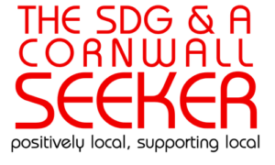
- Long Sault & Ingleside
- Classifieds

Fitness Travel: A Journey to Health and Adventure

In recent years, the concept of combining travel with health and fitness has gained tremendous momentum. Fitness travel goes beyond traditional sightseeing, offering travelers an opportunity to explore new destinations while engaging in physical activities that enhance their well-being. This evolving travel trend caters to those looking to maintain their fitness routines or jump-start a healthier lifestyle, all against the backdrop of some of the world’s most stunning landscapes. This article delves into the world of healthy fitness traveling, highlighting the dynamic and transformative experience of participating in a fitness retreat .
The Appeal of Fitness Travel
Fitness travel appeals to a diverse group of adventurers—those who prefer their vacations active and those seeking a reset for their physical health. Unlike typical vacations filled with passive tourist activities, fitness travel is designed to energize the body and mind. It combines elements of adventure, wellness, and cultural immersion, turning a holiday into an active pursuit of health and fitness.
You might also like
Exploring africa by rail: the magic of luxury train journeys across the continent, a beginner’s guide to installing an ev charging system at home, tips for a successful loan application, key components of fitness travel.
- Structured Activities: Fitness travel typically involves a series of planned physical activities. These could range from hiking and biking to kayaking and rock climbing, depending on the destination’s terrain and the traveler’s interests.
- Wellness Integration: Many fitness travel plans also incorporate wellness elements such as yoga sessions, meditation workshops, and nutritious meal plans designed to complement the physical exertions.
- Cultural Experiences: Engaging with the local culture is a crucial component of fitness travel. Whether it’s learning traditional dance forms, cooking regional cuisines, or participating in local festivals, these activities provide a deeper understanding of the destination.
- Community and Social Interaction: Traveling with a group of like-minded individuals can enhance the experience, providing an added layer of motivation and the opportunity to form new friendships.
Fitness Retreats: A Special Focus
Among the various offerings in the realm of fitness travel, fitness retreats stand out. These are typically immersive experiences that offer a mix of intensive physical training and educational workshops on health and wellness. Located in inspiring settings, from tropical beaches to mountainous landscapes, fitness retreats provide the perfect environment for guests to focus on personal fitness goals without the distractions of everyday life. These retreats often include professional guidance from fitness experts and nutritional advisors, ensuring a well-rounded approach to health and fitness.
Benefits of Fitness Travel
- Improved Physical Health: Engaging in regular, intensive physical activity during the trip helps improve cardiovascular health, strength, and flexibility.
- Mental Clarity and Stress Reduction: Physical activity is a known stress reliever, and doing it in a new, natural setting can enhance these effects, leading to greater mental clarity.
- Enhanced Cultural Appreciation: Fitness travel often involves exploring places off the beaten path, offering unique insights into local life and traditions.
- Motivation and Inspiration: Being in a new environment can reignite the passion for fitness and inspire continued health and wellness practices at home.
- Personal Growth: Pushing personal boundaries through adventurous activities can lead to significant personal growth and increased self-confidence.
Choosing the Right Fitness Travel Experience
Selecting the right fitness travel experience involves considering several factors such as choosing provider, one of the good ones could be Healing Holidays , including personal fitness levels, interests, and wellness goals. It’s also essential to research the destination and the specific activities offered to ensure they meet your expectations and physical ability levels. Safety, expert guidance, and well-planned logistics are crucial elements to look for when booking a fitness travel experience.
Fitness travel represents a dynamic fusion of travel, adventure, and health. It offers an engaging alternative to traditional tourism, providing a means to explore the world while enhancing physical fitness and mental well-being. Whether it’s through a multi-activity adventure in a remote land or a structured fitness retreat, this style of travel holds the promise of a transformative journey that benefits the body, mind, and spirit.
Luci is a Journalism student and covers interesting topics from health to finances.

- Agree to Disagree (117)
- Discover SD&G (18)
- Fashionably Marlene (8)
- For What it's Worth (27)
- From My Pantry (4)
- Gardening – Ask Anna (15)
- Grant Spills the Gravy (8)
- Keeping it Reel (18)
- Local Spins from Bud's Records (1)
- Louise Mignault (39)
- Memo from the Mayor (1)
- Men Writes (15)
- Mental Health Matters (3)
- Mortgage Tips (1)
- Out and About (42)
- Outdoor Club (12)
- Reality Bytes (6)
- roadSIGNS (20)
- Seeker Snippets (43)
- Take Note (6)
- Transition Cornwall+ (12)
- Which Witch is Witch? (10)
- Wondrous Life (23)
- Yafa Arts & Craft (13)
- 5 questions with… (92)
- A Conversation With… (16)
- Locals in the Loupe (51)
- Leisure & Lifestyle (1,395)
- News (5,130)
- Opinions (178)
- This May Also Interest You (473)
- You May Also Like (1,443)

Get notified of all our new news by ringing the bell at the bottom left corner!
Content safety, trustworthy.
Approved by Sur.ly
© 2023 Reducing our footprint! For every issue we print, we plant a tree!

- Buenos Aires
- Kuala Lumpur
- Los Angeles
- New York City
- International Health Insurance
- Investment Advice for Expats
- Booking Travel for Expatriates
- Expat Moving Services
- Property Rental
- Country Visa Services for Expats
- Online Global Health Insurance Quote
- Citizenship by Investment (Golden Visas)
- Foreign Exchange for Expatriates
- Expat Mobile App
- Expat’s Manual
- Expat Forums
- Business Directory
- Blog articles
- Forum topics
- News articles
Our guide was written by Tom Rogers and Rebekah Smith .
Health & Beauty in Moscow
Moscow health & beauty guide, fitness centers.
There are literally hundreds of gyms and fitness centers available to take care of health & beauty of expats in Moscow. The majority are extremely well-equipped, most including a swimming pool, extensive class schedule, open courts for many sports, and also saunas, beauty salons, and tanning facilities. Expect to pay about 28,000 – 62,000 RUR for an annual subscription (in cash, upfront).
These Moscow fitness centers provide information in English and may have some English-speaking staff:
- Gold’s Gym http://www.goldsgym.ru http://www.goldsgym.com/ The international chain – if you have a membership from your home country, you may have guest privileges here. There are two locations:Dinamo (a favorite with expatriates) Offers a fully equipped gym and cardio area, extensive schedule of aerobics classes, designated courts for football, basketball, volleyball, tennis and squash area, swimming pool, beauty salon, massage, and tanning services. Body revolution programs twice annually. Leningradsky Prosp. 31/30 Closest metro: Dinamo +7 (495) 931 96 16 Opening hours: Mon-Fri 7:00 – 23:00; Sat-Sun 9:00 – 22:00Lefort Has all imaginable cardio equipment, free weights, more than 25 regularly scheduled group classes (including yoga and pilates), spinning equipment, designated courts for football, basketball, volleyball, tennis, a table tennis area, sauna, and massage room. Elektrozavodskaya Ul. 27/3 Closest metro: Eletrozavodskaya or Preobrazhenskaya Ploshad +7 (495) 662-46 53 Opening hours: Mon-Fri 7:00 – 23:00; Sat-Sun 9:00 – 22:00
- Planet Fitness http://www.fitness.ru/ A more affordable option among Moscow’s fitness centers. Annual memberships start at 29,000 RUR. There are 15 locations in Moscow, most of which offer free weights, cardio equipment, a swimming pool, aerobics and dance classes, and boxing. Many also have massage and tanning. Typical opening hours: Mon-Fri 7:00 – 24:00; Sat-Sun 9:00 – 22:00 (may vary by location)
- World Class http://www.worldclass.ru/ With 16 locations in Moscow, you’re sure to find one nearby. The biggest and best offer a full range of fitness and cardiovascular equipment, group classes in everything from aerobics to martial arts, personal training, swimming pool, kid zones, and spa and solarium. Typical opening hours: Mon-Fri 7:00 – 24:00; Sat-Sun 9:00 – 24:00 (may vary by location)
Golf Courses
There are three golf course in Moscow and the Moscow area:
- Moscow City Golf Club http://www.mcgc.ru/home_en/ This 9-hole course is conveniently located in the city. Also offers a practice area, pro shop, tennis courts, spa and restaurant Ulitsa Dovzhenko 1 Closest metro: Kievskaya (then by bus) +7 (499) 147-8330
- Le Meridien Moscow Country Club This 18-hole golf course is home to the Russian Open (PGA European Tour) every summer. It is part of an exclusive private membership resort in the Moscow suburb of Nakhabino, about 40 minutes out of the city. Also has a comprehensive sports complex and excellent restaurant. +7 (495) 626-5910 e-mail: [email protected]
- Moscow Golf Club http://www.moscowgolf.ru/eng/main/ Moscow’s newest 18-hole course opened in May 2009. Also offers tennis and a fitness center. Ostrovnaya ul., 2 Closest metro: Krilatskoe +7 (495) 234-7451
Tennis Courts
Many fitness centers in Moscow offer facilities for playing tennis, as do the golf courses. But you can also try a specialized tennis club, or the facilities are the stadiums:
- Zhukovka Tennis Centre Located 10 km beyond the MKAD in the village Zhukova, this center offers 10 indoor tennis courts; tennis school, massage room and bicycle rental. 1 Illinskoye Shosse, Zhukovo + 7 (495) 418-3701 Opening hours: Mon-Sun 8:00 – 22:00
- Luzhniki Sports Complex This popular stadium has two full-size tennis courts in addition to a great range of other facilities. Luzhnetskaya Nab. 24 Closest metro: Sportivnaya +7 (495) 637-0262 Opening hours: Mon-Sun 7:00 – 22:00
Swimming Pools
The great majority of fitness centers in Moscow also have swimming pools. But you can also easily find great pools and even waterparks without a gym membership.
- Olympic Sports Complex This stadium has the best swimming pool in all of Moscow. Note that you must bring a medical certificate showing you are free of skin, and other, conditions that can be transmitted through the water (can be issued at any public clinic). Olympisky Prospekt 16/18 Closest metro: Prospekt Mira +7 (495) 288-5453
- Chaika Another nice pool, located on the circle metro line. You will also need to present a medical certificate, but you can get one on the spot (valid for a month) from the swimming pool medical department (open 8:30 – 22:00) Turchaninov Per. 1/3 Closest metro: Park Kultury +7 (499) 246-1344
- Kimberlyland http://www.kimberlyland.ru/ A great waterpark with 5 pools, slides, water games, and a special kids club. Also has a large gym, mini-golf course, beauty salon, and restaurant on site. Azovskaya Ul. 24 Closest metro: Sevastopolskaya +7 (495) 310-0401
Yoga Centers
There are numerous yoga centers in Moscow, and of course many fitness centers also offer yoga classes. The following yoga center has English-speaking instructors available:
- Ashtanga Yoga Center http://www.yoga108.com/en/about/ Hatha Yoga at various levels. Instructors speak both Russian and English. One class costs 350 -500 RUR; a monthly membership is 2200 – 2700 RUR. They have four locations in Moscow:Stary Tolmachevsky Per 7 (inside “Orbita” center) Closest metro: Novokuznetskaya +7 (495) 953-6957Zoologicheskaya Ul 30 Closest metro: Mayakovskaya, Barrikadnaya +7 (495) 550-9646Ostozhenka Ul 8 (inside “Sambo” club) Closest metro: Kropotkinskaya +7 (495) 201-7209Bolshoy Vlasyevsky Per 10 Closest metro: Arbatskaya or Kropotkinskaya +7 (495) 300-4587
Football (Soccer) Fields
Many fitness centers provide facilities for football, as do most stadiums (see Entertainment > Sports Events). You may also enjoy getting involved with the following expatriate football groups:
- Expat Over 30s Football League A league of 8 teams that plays weekly at Dynamo Stadium. Games are 11-a-side with professional referees. New players age 28 and over with playing experience are recruited at the beginning of the season. http://www.moscowfootball.com/
- Women’s Football Club Open to all, and emphasizes fun over professional play. Meets Sundays from 17:00 to 19:00 near metro Aeroport. Contact: Natalie [email protected]
Ice Skating Rinks
Ice skating is very popular in Moscow. In the winter, there are open-air rinks all around the city and at Gorky Park. There are also numerous indoor rinks:
- Umka Levoberezhnaya Ul 12/1 Closest metro: Rechnoy Vokzal +7 (495) 458-1084 Opening hours: Mon-Fri 8:00 – 21:00; Sat 19:45 – 20:45; Sun 18:30 – 19:30
- Raduzhny Chobotovskaya Ul 6 Closest metro: Prospekt Vernadskogo +7 (495) 733-0369 Opening hours: Mon-Fri 8:00 – 21:00; Sat 17:00 – 20:00; Sun 17:00 – 18:00
- Ice Palace Yuzhny Bulatnikovskaya 2 Closest metro: Prazhskaya +7 (495) 383-8738 Opening hours: Mon-Fri 7:00 – 22:00; Sat-Sun 21:00 – 22:00
- Ice Palace Rus Voronezhskaya Ul 13/3 Closest metro: Domodedovskaya +7 (495) 399-1327 Opening hours: Mon-Sun 7:00 – 24:00
- Ledovy Dvorets (Offers skating classes) Volgogradsky Prospect 46/15 Closest metro: Tekstilshchiki +7 (495) 179-3964 Opening hours: Mon-Sun 7:00 – 24:00
Each MEGA Mall (see Shopping) also has an ice skating rink.
Skiing and Snowboarding Slopes
- Krylatskoe Downhill skiing and snowboarding on a 400-meter slope. Krylastskaya Ul 2 Closest metro: Krylastskoye or Molodezhnaya (then take bus number 229 or 829)
- Volen Ski Park http://www.volen.ru A ski resort with hotel, restaurants, and an excellent ski school and ski rentals. North of the city. To get there, head out on Dimitrovskoe Schosse; turn left 46 km beyond the MKAD, and follow the signs. +7 (495) 993-95-40; 993-95-02 [email protected] Moscow office: Olimpiyskiy prospect, 7 ste 411/ + 7 (495) 961 00 50
Besides these two slopes, Moscow offers a wealth of possibilities for cross-country skiing, especially in parks in the outskirts of the city including Sokolniki, Bitsevskiy Park, Kuzminki, Vorobievy Gory, and Yakhroma.
Horse Riding Facilities
There are many locations for horse riding in and around Moscow. The following two have English-speaking instructors available:
- Pradar Individual horse-riding lessons with qualified English-speaking instructors. Single admission to the Club is 1750 RUR, or purchase a monthly horse-riding card for 18,000-24,000. Begovaya Ul 17 Closest metro: Begovaya +7 (495) 945 05 87 E-mail: [email protected]
- Hippodrome Complex Individual horse-riding lessons with qualified English- and German-speaking instructors available. Begovaya Ul 22/1 Closest metro: Begovaya +7 (495) 945 50 59
Rock Climbing
The following rock climbing school offers English-language instruction:
- AlexClimb Indoor Rockclimbing http://www.alexclimb.com/en_rockschol_01.php Operates from September to May and organizes training across indoor and outdoor locations in Moscow; also organizes tours around Russia and internationally. You can purchase 8 two-hour sessions with an English-speaking instructor in a group of 4-8 people for 5,400 RUR (plus entrance to the rock climbing gym). Individual trainings also available.
The following expat club is a fun way to meet people and play rugby at the same time:
- Moscow Dragons Rugby Club http://moscowdragonsrfc.com Play rugby and get involved in many social and charitable events.
Paintball Fields
Paintball is increasingly popular with teenagers even in Moscow. The following two locations are available:
- Action Paintball Games Panfilova Ul 20-2 Closest metro: Sokol +7 (499) 796 46 46
- Paintball Sports Club A large outdoor complex,10 kilometers outside the MKAD. Horse riding is also available. +7 (495) 772 88 80, 918 45 80
Field Hockey
The following expat club is a fun way to meet people and play hockey at the same time:
- Expat Field Hockey Club A club that welcomes beginners, and both men and women. Meets Saturday from 15:00 to 16:30 at Sokolniki Football Training Center (closest metro: Sokolniki) Equipment is provided, and the sessions cost 250 RUR per person each. Contact: Vineet Arora [email protected]
Useful links
- http://www.101.ru A popular online Russian radio station.
- http://www.masterRussian.com Site where you can master Russian grammar, learn new vocabulary and practice speaking and reading Russian.
- http://www.translit.ru A transliteration site – type in Roman letters and they are automatically converted to Cyrillic.
Interesting fact
Whilst all reasonable care has been taken in the preparation of this publication, the owner of Expatinfodesk.com does not accept any responsibility for any loss suffered by any person acting or refraining from action as a result of relying upon its contents.
Privacy Overview

Would you like to know more about international health insurance & get a free global health insurance quote? Choose a custom global medical plan which meets your needs and budget
GET A FREE QUOTE
THE 10 BEST Moscow Health/Fitness Clubs & Gyms
Health/fitness clubs & gyms in moscow.
- Health/Fitness Clubs & Gyms
- Yoga & Pilates
- Hammams & Turkish Baths
- Roman Baths
- Thermal Spas
- Hair & Nail Salons
- 5.0 of 5 bubbles
- 4.0 of 5 bubbles & up
- 3.0 of 5 bubbles & up
- District Central (TsAO)
- 3rd Transport Ring (TTK)
- Garden Ring
- District Northern (SAO)
- Good for a Rainy Day
- Good for Kids
- Budget-friendly
- Good for Adrenaline Seekers
- Good for Couples
- Good for Big Groups
- Adventurous
- Hidden Gems
- Honeymoon spot
- Things to do ranked using Tripadvisor data including reviews, ratings, photos, and popularity.

1. ThaiBeautySpa
2. Limestone
3. Swimming Pool Chaika

4. Royal Thai Pokrovka

5. Lay Back Massage Club
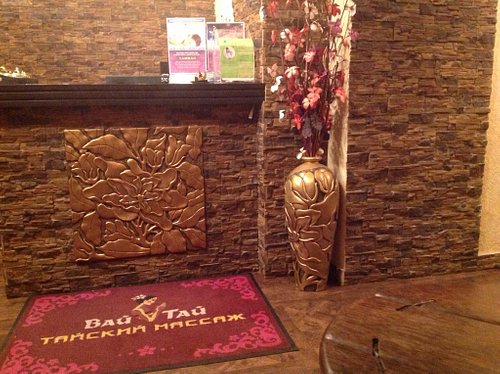
6. Wai Thai Michurino
7. Cosmos Spa
8. Fitness Club Miltronic

9. Pride Club Fitness

10. Usadba Bannaya

11. Spa Algotherm

12. Grand Fitness

13. Galotsentr Solyanaya Peshhera

14. VITASPORT Wellness Club

15. Usadba Bannaya

16. I N T U ' T I O N 2/05
17. city fitness.

18. Novorizhskiye Baths

19. Vital Practice University
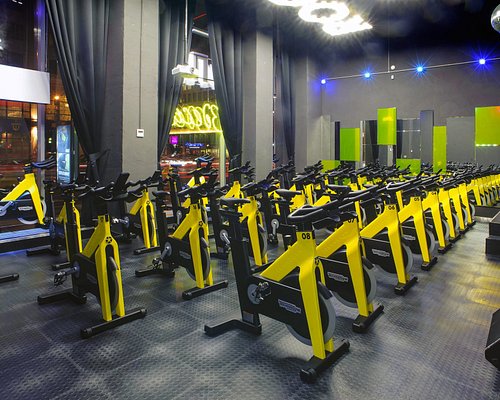
20. Rock The Cycle
21. Fresh Stretching

22. Massage and Health Center Il de Provane

23. Encore City

24. Fitness Center Mark Avreliy

25. LifeCity Venecia

26. Boxing Academy
27. salt cave salegrotte.

29. Art of Pilates
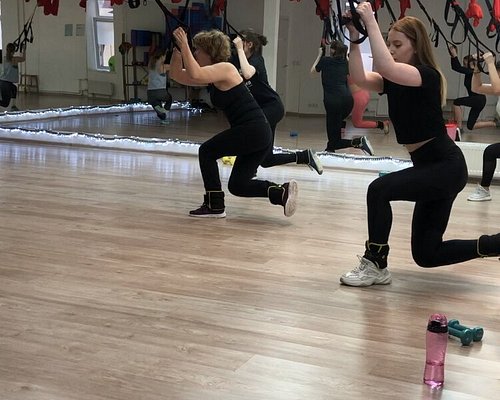
Best Gym in Moscow
Local recommendations from our my guide moscow team.

Planeta Fitness
Planeta Fitness was founded in 1997 in Moscow and gained much popularity in Russia opening its centers in Saint Petersburg, Samara, Kazan and other cities. Planeta is the

X-Fit is a chain of more than 50 modern, highly-equipped and comfortable fitness centers of premium and business class spread all over the country. One of the basic rul
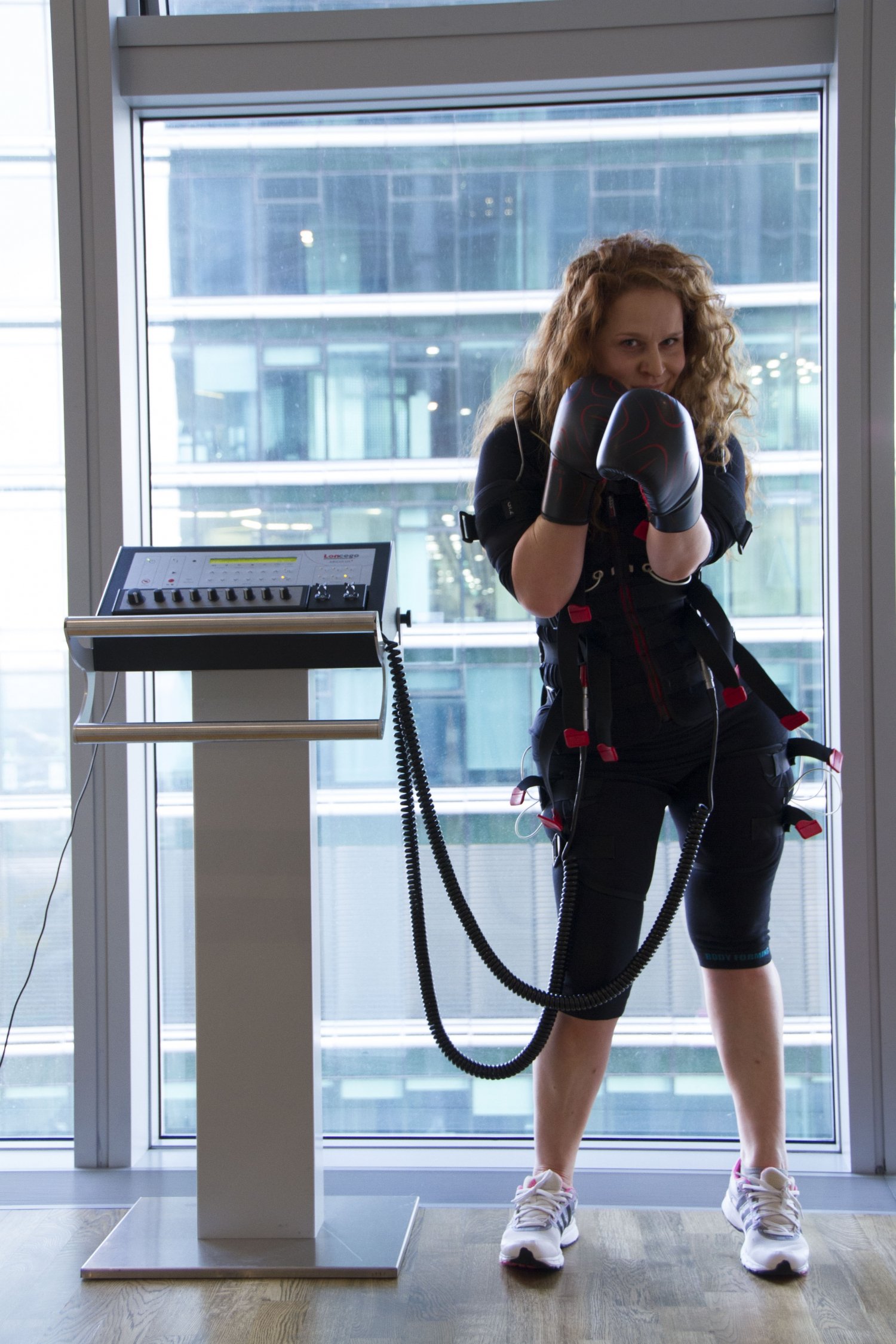
BODY FORMING
The EMS-centers “BODY FORMING” have been created for the purpose of health improvement and body modelling. Today “Body Forming” presents a chain of centers in Mos
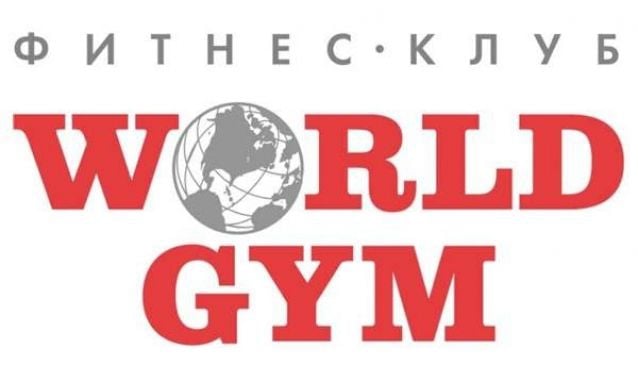
The international chain of fitness centers World Gym takes a special place among leaders of fitness industry in the USA and all over the world. For over 40 years of histo
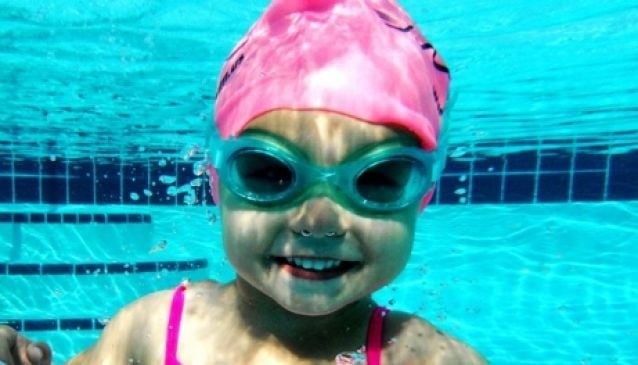
Empire Swim Academy
At Empire Swim Academy we provide expatriates and residents of City of Moscow, Russia with the best quality swim programs that develop the physical, athletic and personal
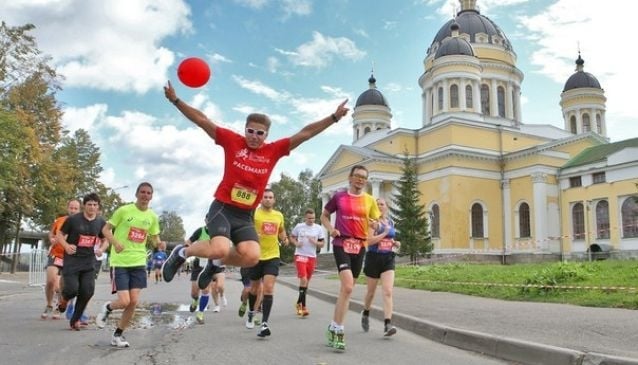
The Golden Ring Run
The Golden Ring Run is a unique project which will take place in the historical cities of the Golden Ring in Russia. The project first started in 2014 in Yaroslavl with t

Orange Fitness
Orange Fitness is a leading European and Russian fitness operator with 34 opened clubs, fitness school, and modern technologies of providing premium services. Large poo
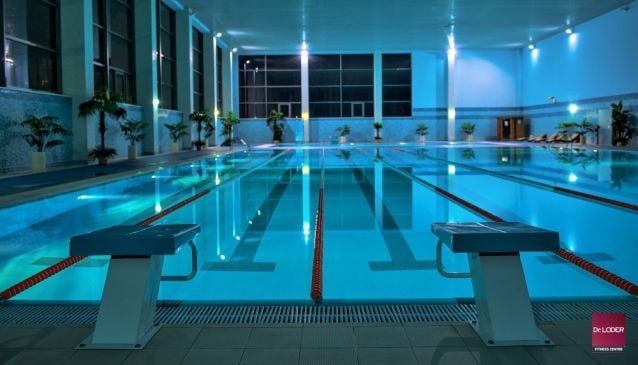
For more than 14 years Dr.LODER has been providing premium services at fitness market counting over 15 000 clients in Moscow. The history of this fitness center dates b
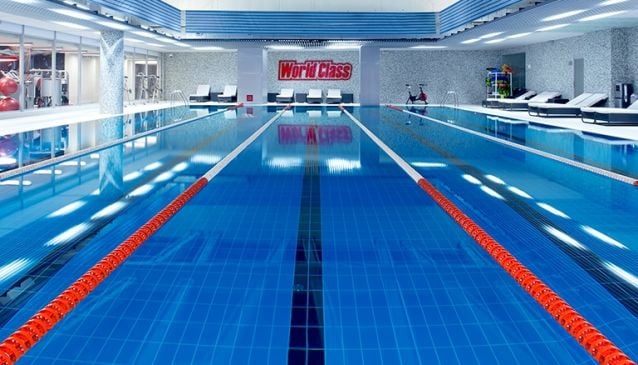
World Class
With World Class you will always find a form of exercise that works for you: everything from energetic and effective classes to calm and harmonic relaxation. Discover how

Viki Land Family club
No one can argue that Moscow is a booming metropolitan city where people can find the widest range of activities for themselves and their children..........
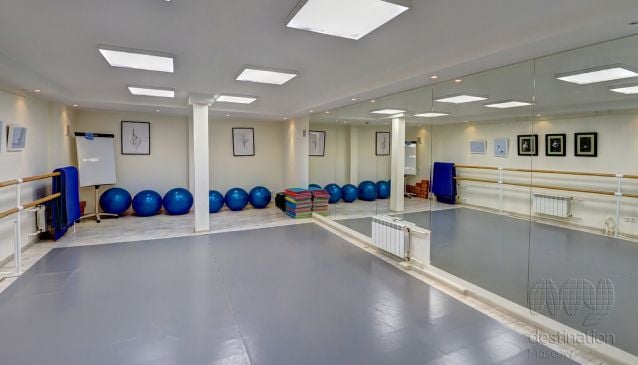
Clover Yoga & Dance Studio
Yoga and Dance Studio "Clover" opened its doors in one of the most beautiful places in the center of Moscow, in December 2014. From its very beginning the studio has beco
Create New Guide
Mini guides.
Login to create your guides for Moscow.
Add to My Guide
- Add to New Guide
Recommended Experiences in Moscow

USSR History, Mosaics Arts, Soviet Architecture & Statues
Walk through the Soviet Historical Era of Bishkek of Soviet Kyrgyzstan. Explore Soviet architect Buildings, Statues and Touch the mosaics art which were applied in the decades between the 1960s-1980s.

T-72 Tank Driving Heavy Metal Experience
You'll have the opportunity to drive a T-72 tank under the guidance of a professional instructor who will provide you with expert instruction and safety briefings before you get behind the controls.

T-55 Tank Driving Heavy Metal Experience
You'll have the opportunity to drive a T-55 tank under the guidance of a professional instructor who will provide you with expert instruction and safety briefings before you get behind the controls.

Massada and the Dead Sea in Russian
Massada and the Dead Sea – A journey to the lowest place in the world.

Moscow suburb and Central Market
One of the oldest and architecturally most valuable places in Riga is the Moscow Suburb, which first emerged just outside the walls of Riga in the 13th century.
Search, Compare, and Save up to 70%!
Local car rental comparison with my guide, free cancellation.
No need to worry if your plans change with free cancellation options available
24/7 Customer Service
All of our providers offer 24/7 support
500+ trusted car hire partners globally
Create & share your own guide to moscow with friends and family.
Add your recommended places to visit by browsing the website and pressing the icon.
Create your own guide of favourite 'must see' places
Earn your Local Expert badge by Sharing your guides with others
Get your guide seen by submitting it to the Mini Guides section
Must See Places For First Timers
Handpicked by a Local Expert

Places to watch the FIFA World Cup 2018

Best For Kids

We Are Part of the My Guide Network!
My Guide Moscow is part of the global My Guide Network of Online & Mobile travel guides.
We are now in 120+ Destinations and Growing. If you are interested in becoming a local travel partner and would like to find out more then click for more info about our Website Business Opportunity .
Nearby Destinations
- My Guide St Petersburg
- My Guide Warsaw
- My Guide Gdansk
- My Guide Stockholm
- My Guide Krakow
- My Guide Slovakia
- My Guide Budapest
- My Guide Copenhagen
- My Guide Berlin
No results found
{[{item.label}]}
- {[{data.title}]}
Events in Moscow
Filter Events by Sub-Category
- This Weekend
Please select a Date first.

COMMENTS
0. Embarking on a fitness journey refers to the intentional and structured pursuit of improving one's physical fitness, overall health, and well-being. It involves setting goals, adopting healthy lifestyle habits, and engaging in regular exercise and physical activity to achieve desired outcomes. A fitness journey is a personal and ...
Here are our top five tips to get you started off on the right foot so you can meet your goals! Know your goals. Find your "why.". Going to the gym without goals in mind can be like driving a car without a destination. When creating a goal, it can be beneficial to think about the process that it takes to accomplish your goal.
Moving, resting, and, above all, patience, will keep you on a good path to your fitness goals. Sandra Gutierrez is the former Associate DIY editor at Popular Science. She makes a living by turning ...
A "rep" is a single repetition of a given exercise; think curling a dumbbell up and lowering it back down again. A "set" is a cluster of repetitions performed back-to-back with no rest in ...
Create a structured workout plan. Before starting a fitness journey you need a well-structured workout plan. Remember that for overall fitness you need a clear balance and incorporate cardiovascular exercise, strength training, and flexibility exercises. Start with a low-intensity workout and gradually increase intensity and duration over time.
1. Look inside and find your "why". No journey worth pursuing just happens. There's a strong "why" behind it that propels it forward and keeps it going when, well, the going gets tough. If for example, your main motivation for starting a new fitness journey is that you want to be skinny again, your chance of long-term success is nil.
The Gym Starter. Gold COast, Australia. +61 [email protected]. Hours. Learn how to overcome that fear of how to start your fitness journey and get a plan with what to do and why to help you achieve your goals.
Eating a balanced diet and adopting healthy eating habits are essential components of any fitness journey, especially for beginners. Proper nutrition fuels your body, supports your workouts, aids in recovery, and helps you achieve your fitness goals. Here are some key tips to keep in mind: 1. Focus on a Balanced Diet.
The Definitive Guide to Answering Every Fitness Beginner's Question. Published on June 7, 2023. In the world of health and fitness, starting your journey can be a whirlwind of questions and confusion. It's our mission to ease that journey by providing a detailed, comprehensive guide to every question a fitness beginner may ask.
Aim to get in two or three sessions a week and do a minimum of one set for each major muscle group. To maximize your time, do compound movements that involve more than one muscle group at a time (i.e. squats, push-ups, lunges and rows). Include joint stability and core into your program (i.e. planks, bridges).
Tips for structuring your workouts, including warm-up, main exercises, and cooldown. 4. Starting with the Basics: Essential exercises and movements for beginners, such as bodyweight exercises, resistance band workouts, and beginner-friendly equipment. Proper form and technique for each exercise to ensure safety and maximize effectiveness.
Prioritize rest, sleep, and proper nutrition. Treat yourself with kindness and listen to your body's needs. Nurturing your physical and mental well-being will optimize your energy levels and overall motivation. The Bottom Line. Staying motivated on your fitness journey is a lifelong process.
Gym Fitness • Gym Membership • iChuze Fitness How to Start Going to the Gym: A Guide. Starting your fitness journey is a transformative step towards a healthier and happier you. In this guide, we'll share with you some of the essential aspects of starting your 30-minute gym routine (if you're just starting), providing practical advice and motivation to help you navigate the exciting ...
Fat loss: Bodyweight x 10-12. Maintain weight: Bodyweight x 13-15. Gain weight: Bodyweight x 16-18. Example: 150 x 10 = 1,500 and 150 x 120 = 1,800 (Between 1,500 and 1,800) You don't need to count calories to be successful. But as Yale researchers showed us, for fat loss creating a calorie deficit is important.
Start Your Fitness Journey: Get the Guide Now! Setting attainable goal is the first step to a successful fitness journey. Start by assessing your way of life today, then set attainable, measurable goals. Make sure to schedule time for exercise and to keep track of your results. Include regular relaxation and recovery time as well as a ...
Wesley Jones1st September, 2023⏰ 10 minute read Embarking on a fitness journey is one of the most empowering decisions you can make. Whether you're aiming to shed a few pounds, build muscles like Arnie, or simply lead a healthier lifestyle, the path to fitness is filled with challenges and rewards. If you're wondering where to
Welcome to Fitness and Wellness Journey, your go-to resource for achieving a healthier, more balanced lifestyle. Our mission is to provide you with the latest information, tips, and advice on fitness, nutrition, mental well-being, and overall wellness. Whether you're a seasoned athlete, a busy parent, or just starting your journey towards ...
This guide will unpack the basics of circuit training, its benefits, and various types of circuits, with a peek at Planet Fitness' ultimate full-body circuit workout designed for beginners—but perfect for everyone. ... Whether you're starting your fitness journey or looking to add variety to your routine, the 30 Minute Circuit at Planet ...
Wondering how to start working out in 2024? If you need fitness motivation or want to start your fitness journey, I hope my ultimate fitness journey guide mo...
Unlock the fitness secrets of top MMA fighters with our exclusive guide. Discover 10 powerful tips covering mindset, HIIT, nutrition, recovery, and more to revolutionize your workout routine and ...
Conclusion. Fitness travel represents a dynamic fusion of travel, adventure, and health. It offers an engaging alternative to traditional tourism, providing a means to explore the world while enhancing physical fitness and mental well-being. Whether it's through a multi-activity adventure in a remote land or a structured fitness retreat, this ...
workout.xpertApril 11, 2024 on : "Comment "W" I'll send you free beginner guide to start your fitness journey... Gathering gymbros [ 200 老 / 500 老] • #gymcontent ...". Fitness | Health | Workout | Comment "W" I'll send you free beginner guide to start your fitness journey...
The international chain of fitness centers World Gym takes a special place among leaders of fitness industry in the USA and all over the world. For over 40 years of history, ordinary people as well as sport celebrities, such as Arnold Schwarzenegger, have been the clients of World Gym.
Annual memberships start at 29,000 RUR. There are 15 locations in Moscow, most of which offer free weights, cardio equipment, a swimming pool, aerobics and dance classes, and boxing. Many also have massage and tanning. Typical opening hours: Mon-Fri 7:00 - 24:00; Sat-Sun 9:00 - 22:00 (may vary by location) World Class.
THE 10 BEST Moscow Health/Fitness Clubs & Gyms. 1. ThaiBeautySpa. Here my journey starts to the world of thai spa, I did not expect to get such a big choice of treatments and massage... 2. Limestone. Limestone is the biggest bouldering wall in Moscow.
Kelly Clarkson, the beloved singer and talk show host, has always been in the public eye, not just for her vocal talent but also for her personal life, including her health and body image.In 2023, Kelly embarked on a notable weight loss journey that captured the attention of fans and media alike. This article explores her transformation, providing a detailed, step-by-step guide on how she ...
Planeta Fitness was founded in 1997 in Moscow and gained much popularity in Russia opening its centers in Saint Petersburg, Samara, Kazan and other cities. Planeta is the. Viki Land Family club. ... My Guide Moscow is part of the global My Guide Network of Online & Mobile travel guides. Our Complete Website Solution frees up the time, cost and ...